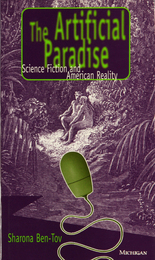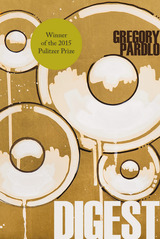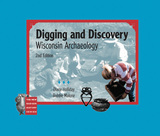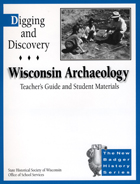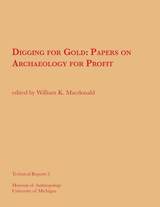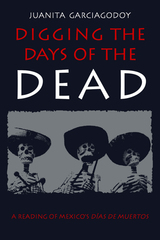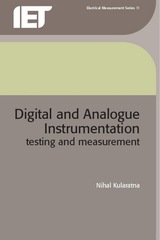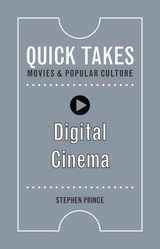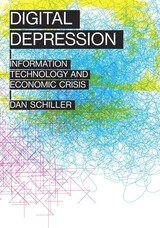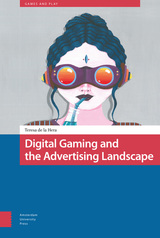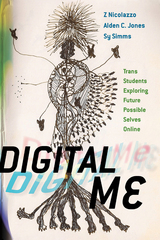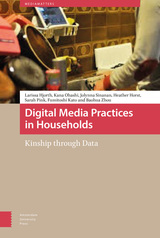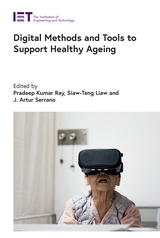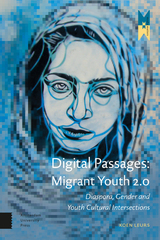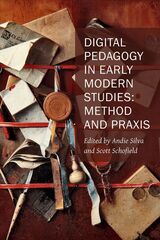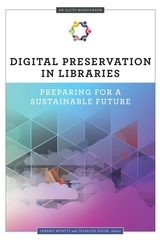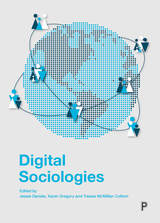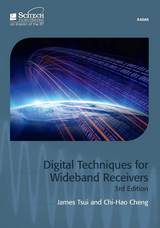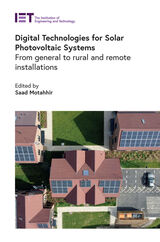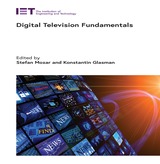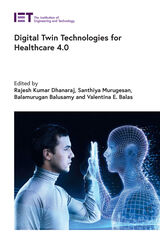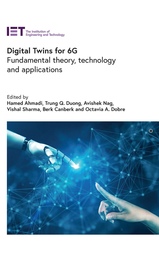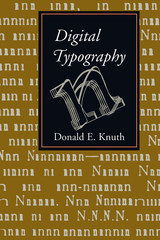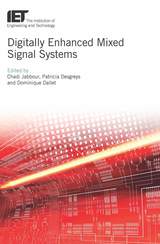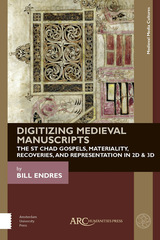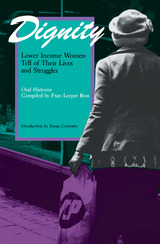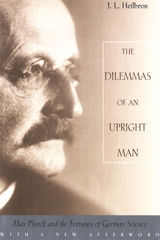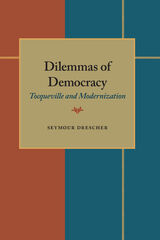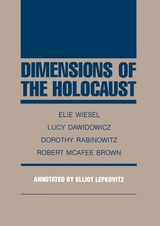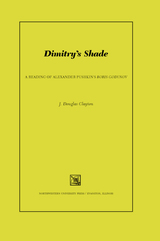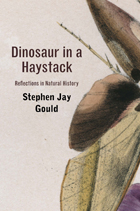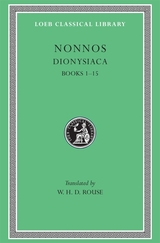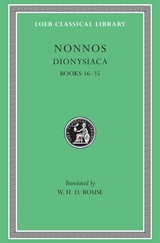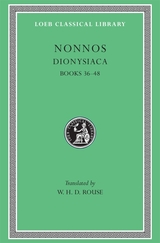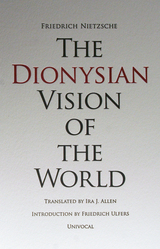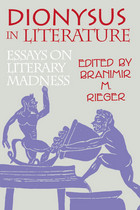Diffraction of Electromagnetic Waves by Small Apertures: Applications to transmission, absorption, and scattering resonances
Young Ki Cho
The Institution of Engineering and Technology, 2024 This book deals with low-frequency diffraction characteristics of small aperture structures such as a narrow slit and a small hole and their periodic structures, with emphasis on the transmission maximum phenomena through those structures. A narrow slit structure in a conducting plane has been used as a simple model for a narrow slot planar antenna, for example, whereas a small hole structure has been widely used as an aperture-coupling element in a transmission cavity filter or a directional coupler in the microwave regime.
 The Diffusion of Good Government: Social Sector Reforms in Brazil
Natasha Borges Sugiyama
University of Notre Dame Press, 2013 One of the most fundamental questions for social scientists involves diffusion events; simply put, how do ideas spread and why do people embrace them? In Diffusion of Good Government: Social Sector Reforms in Brazil, Natasha Borges Sugiyama examines why innovations spread across political territories and what motivates politicians to adopt them.
Sugiyama does so from the vantage point of Brazilian politics, a home to innovative social sector reforms intended to provide the poor with access to state resources. Since the late 1980s, the country has undergone major policy transformations as local governments have gained political, fiscal, and administrative autonomy. For the poor and other vulnerable groups, local politics holds special importance: municipal authorities provide essential basic services necessary for their survival, including social assistance, education, and health care. Brazil, with over 5,000 municipalities with a wide variety of political cultures and degrees of poverty, thus provides ample opportunities to examine the spread of innovative programs to assist such groups.
Sugiyama delves into the politics of social sector reforms by examining the motivations for emulating well-regarded programs. To uncover the mechanisms of diffusion, her analysis contrasts three paradigmatic models for how individuals choose to allocate resources: by advancing political self-interest to gain electoral victories; by pursuing their ideological commitments for social justice; or by seeking to demonstrate adherence to the professional norms of their fields. Drawing on a mixed-method approach that includes extensive field research and statistical analysis on the spread of model programs in education (especially Bolsa Escola, a school grant program) and health (Programa Saúde da Família, a family health program), she concludes that ideological convictions and professional norms were the main reasons why mayors adopted these programs, with electoral incentives playing a negligible role.
“In Diffusion of Good Government: Social Sector Reforms in Brazil, Natasha Borges Sugiyama contributes significantly both to theoretical debates about diffusion and to important policy debates about the best ways to alleviate poverty, improve educational attainment, and increase access to health services in middle-income developing countries. Her substantial field research is coupled with strong quantitative analysis to deliver original interpretations important to scholars with an interest in public policy and Latin America.” —James W. McGuire, Wesleyan University
"This study investigates the motivations of politicians and technocrats behind the adoption of social policy reforms in Brazil. Natasha Borges Sugiyama argues that political self-interest in winning elections is not the motivating force. Rather, she claims that ideology in the form of commitments to providing better services and income transfers for the poor is a strong incentive, along with embeddedness in professional organizations or informal networks. Sugiyama's work is both compelling and important. It will be of interest to political scientists, sociologists, anthropologists, and scholars with an interest in public policy in Latin America." —Evelyne Huber, University of North Carolina at Chapel Hill
 Digenis Akritas: The Two-Blood Border Lord—The Grottaferrata Version
Denison B. Hull
Ohio University Press, 1986 Among the epic romances of post–Barbarian Europe, such as Roland and El Cid, Digenis Akritas has been the least known in the West—outside Greece. It is the story of a half-breed prince who guarded the eastern border of the Roman Empire of Byzantium on the Euphrates in the tenth century. His name and cognomen, Basil, the Two–Blood Border Lord, sum up the curious richness of his heritage: Roman by politics, Arab and Cappadocian by birth, Greek in language, and orthodox by faith. On an incursion into Byzantine territory, an Arab Emir captures a Christian woman. Her relatives, in raiding to rescue her, convert the Emir and his people to Christianity and bring them back to the empire. Basil is born of this union. A prodigy of valor, his miraculous strength in hunting and in battle win him an Arab bride and the loyalty of her family. He settles in a splendid garden palace by the Euphrates, pacifies the Border, fights dragons and bandits only to die young at the same instant as his wife. The poem in English verse translation is full of humor, fairytale, and a moving religious devotion. It recaptures an urbane vanished civilization. The translator has collated all the known texts and supports the translation with commentary, a bibliography, and a map.
Digest
Gregory Pardlo
Four Way Books, 2014 From Epicurus to Sam Cooke, the Daily News to Roots, Digest draws from the present and the past to form an intellectual, American identity. In poems that forge their own styles and strategies, we experience dialogues between the written word and other art forms. Within this dialogue we hear Ben Jonson, we meet police K-9s, and we find children negotiating a sense of the world through a father’s eyes and through their own.
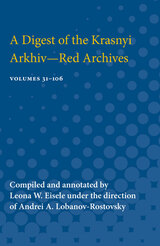 Digest of the Krasnyi Arkhiv--Red Archives: Vol. 31-106
Compiled and annotated by Leona W. Eisele under the direction of Andrei A. Lobanov-Rostovsky
University of Michigan Press, 1955 A Digest of the Krasnyi Arkhiv—Red Archives—Volumes 31–106 furnishes a description, in English, of the archival documents (official and private) published from 1928 through 1941 by the Central Archive Department of the USSR in the Russian journal Krasnyi Arkhiv. This historical journal, whose contents illuminate the social, scientific, political, economic, and cultural development of Russia from the seventeenth century to the present time, exists, in whole or in part, in only seventeen libraries in the United States. The Digest will, therefore, serve not only as a guide to the journal, which is its prime purpose, but will in itself be a source of information to students of Russian history and Russian culture, to government workers, and to librarians.The present book contains a full index to Volumes 31–106 and supplies in the Appendix a list of the articles described in the Digest for Volumes 1–30, which was published by the Cleveland Public Library in 1947.
 Digestible Governance: Gastrocracy and Spanish Foodways
Edited by Eugenia Afinoguénova, Lara Anderson, and Rebecca Ingram
Vanderbilt University Press, 2024 The term “gastrocracy” refers to the appropriation of discourses and practices related to the sourcing, preparation, distribution, and consumption of food for political purposes. The intersections of gastronomy and governance, dating in Spain to the last quarter of the nineteenth century, have become highly visible over the past decade, when political debates around nationalism in its different forms have taken the guise of discussions about regional and local cuisines. Concomitant with the rise of the “slow food” movement and following UNESCO’s addition in 2011 of “Gastronomic Meal of the French” to its list of Intangible Cultural Heritage of Humanity, public and private associations all around Spain have been established with the goal of achieving recognition by UNESCO for Spanish, Catalan, and other national cuisines. In 2016, Gastro Marca España—an association and a web portal—was launched to raise the profile of food in Spain’s national brand.
Eliciting wide public participation, co-opted for political purposes, regarded as a factor of economic development on any scale, and integrated into every so-called banal nationalism, the production, distribution, and consumption of food are highly relevant for historical analysis. Seeking to encourage a broader discussion about Peninsular gastrocracies, this book brings together an interdisciplinary group of scholars from different sides of the Atlantic and the Pacific who have spearheaded research on gastronomy and governance in Spain.
 Digestion, Diet, and Disease: Irritable Bowel Syndrome and Gastrointestinal Function
Joneja, Janice Vickerstaff
Rutgers University Press, 2004 Malfunction in the digestive tract can arise from a variety of causes, and it requires the sciences of immunology, physiology, biochemistry, microbiology, and nutrition to fully explain the basis of the dysfunction as well as effective treatment options. Now Dr. Janice Vickerstaff Joneja has written the first book that: - Applies current research data in all of the relevant sciences into a practical resource for the management of gastrointestinal disease, in particular irritable bowel syndrome (IBS).
- Supplies complete scientific references for the research scientist, the clinician, and the student.
- Provides specific dietary management strategies for IBS and related dysfunction in the gastrointestinal tract, based on scientific data.
- Includes meal plans, recipes, and dietary advice for balanced nutrition, while avoiding the foods most likely to trigger or exacerbate IBS.
These unique qualities make Digestion, Diet, and Disease the ideal choice for practitioners, educators, and researchers in the field of nutritional medicine, as well as nurses, alternative medicine professionals, and the educated general public suffering from IBS.
Digestive Diseases
Albert I. Mendeloff and James P. Dunn
Harvard University Press, 1971 Such chronic gastrointestinal diseases as peptic ulcer, cirrhosis, and cholelithiasis are becoming increasingly recognized as health problems. This is the first book to deal specifically with mortality data, broken down by geographic, socioeconomic, and other demographic parameters, from digestive diseases in the United States from 1959 to 1961.
Digestive Diseases interprets theses data in relation to clinical material regarding cause and clinical course of the disease and indicates their significance for understanding trends in incidence and prevalence as well as possible future trends. World literature on incidence and prevalence as well as mortality has also been utilized.
Digging and Discovery, 2nd edition: Wisconsin Archaeology
Diane Holliday
Wisconsin Historical Society Press, 2006 Introduces young readers to Wisconsin's prehistoric and historic past, including the glacial times of the Paleo-Indians, Woodland era cultures, and French, British, and American settlers.
Digging and Discovery, TG, 2nd edition: Wisconsin Archaeology
Bobbie Malone
Wisconsin Historical Society Press, 2000 Classrooms in Wisconsin have been using the New Badger History Series for the last three years. The first in the series was a student reader and an accompanying teacher’s guide, each entitled Digging and Discovery: Wisconsin Archaeology, which introduced young readers to Wisconsin history through the subject of archaeology. This second edition of the Teacher’s Guide now includes enhanced directions, more answer keys, and exciting new ideas from teachers throughout the state. It incorporates revised materials, many entirely new activities, a revised format, and improved background information.
Digging for Gold: Papers on Archaeology for Profit
Edited by William K. Macdonald
University of Michigan Press, 2019 Editor William K. Macdonald presents several essays on contract archaeology, or archaeological work done by companies or agencies on sites that typically are about to be destroyed by construction. Thomas J. Riley reports on contract archaeology and the academic world; James E. Fitting writes from the perspective of a state archaeologist; Macdonald and Alex H. Townsend report on problems in corporate archaeology; Townsend writes about how contracts are acquired; and Steven A. LeBlanc reports on the need for regions to have an overall research design and to follow best practices in hiring, technological improvements, and storage.
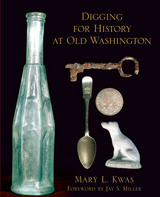 Digging for History at Old Washington
Mary L. Kwas
University of Arkansas Press, 2009 Positioned along the legendary Southwest Trail, the town of Washington in Hempstead County in southwest Arkansas was a thriving center of commerce, business, and county government in the nineteenth century. Historical figures such as Davy Crockett and Sam Houston passed through, and during the Civil War, when the Federal troops occupied Little Rock, the Hempstead County Courthouse in Washington served as the seat of state government. A prosperous town fully involved in the events and society of the territorial, antebellum, Civil War, and Reconstruction eras, Washington became in a way frozen in time by a series of events including two fires, a tornado, and being bypassed by the railroad in 1874. Now an Arkansas State Park and National Historic Landmark, Washington has been studied by the Arkansas Archeological Survey over the past twenty-five years. Digging for History at Old Washington joins the historical record with archaeological findings such as uncovered construction details, evidence of lost buildings, and remnants of everyday objects. Of particular interest are the homes of Abraham Block, a Jewish merchant originally from New Orleans, and Simon Sanders from North Carolina, who became the town’s county clerk. The public and private lives of the Block and Sanders families provide a fascinating look at an antebellum town at the height of its prosperity.
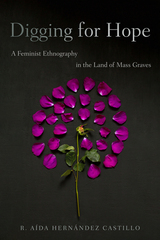 Digging for Hope: A Feminist Ethnography in the Land of Mass Graves
R. Aída Hernández Castillo
University of Arizona Press, 2026 In the shadow of Mexico’s ongoing human rights crisis, Digging for Hope offers a powerful feminist ethnography of resistance, care, and collective memory. Drawing on nearly a decade of fieldwork, R. Aída Hernández Castillo documents the courageous work of women-led search collectives who, in the face of extreme violence, search for their disappeared loved ones.
Through physical and spiritual practices such as exhumation, mourning, and poetic remembrance, these women reclaim dignity for the dead and challenge a society that has normalized disappearance. At the heart of this book is a profound exploration of what Hernández Castillo calls a “pedagogy of love”—a political and ethical framework rooted in care, solidarity, and the refusal to forget. These women are not only searching for bodies; they are building emotional communities, crafting new languages of justice, and offering a reimagining of what it means to resist violence. Their practices, often overlooked by traditional scholarship, restore humanity and dignify the disappeared.
Digging for Hope is essential reading for anyone seeking to understand the gendered dimensions of violence and the grassroots movements that rise in response. With clarity and compassion, Hernández Castillo brings readers into the intimate spaces of grief and resistance, offering a model for feminist ethnography that is both rigorous and deeply humane.
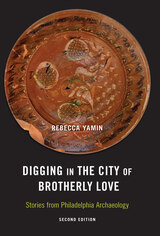 Digging in the City of Brotherly Love: Stories from Philadelphia Archaeology
Yamin, Rebecca
Temple University Press, 2023 Historic Philadelphia has long yielded archaeological treasures from its past. Excavations required by the National Historic Preservation Act have recovered pottery shards, pots, plates, coins, bones, and other artifacts relating to early life in the city. This updated edition of Digging in the City of Brotherly Love continues to use archaeology to learn about and understand people from the past.
Rebecca Yamin adds three new chapters that showcase several major discoveries from recent finds including unmarked early eighteenth-century burial grounds, one of which associated with the first African Methodist Episcopal (AME) Church, in the oldest part of the city; a nineteenth-century working-class neighborhood built along the path of what is now Route I-95 and was once home to Native American life; and the remains of two taverns found on the site of the current Museum of the American Revolution.
Yamin describes the research and state-of-the-art techniques used to study these exciting discoveries. In chronicling the value of looking into a city’s past, Digging in the City of Brotherly Love brings to life the people who lived in the early city and the people in the present who study them.
Digging into Popular Culture: Theories and Methodologies in Archeology, Anthropology, and Other Fields
Pat Browne
University of Wisconsin Press, 1991 This volume presents archeological studies in conjunction with cultural anthropological studies as a means to enhance popular culture studies. Scholar Malcolm K. Shuman points out that the study of archeology must be careful to chart the total human content of an artifact, because archeology “is a profoundly human (and humanizing) endeavor that cannot be divorced from the matrix of human life.” The other ten essays cover aspects of archeology and cultural anthropology, and the authors are meticulous in studying their subject in context.
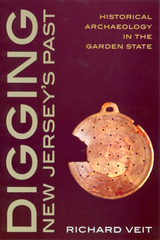 Digging New Jersey's Past: Historical Archaeology in the Garden State
Veit, Richard F
Rutgers University Press, 2002 When people think of archaeology, they commonly think of unearthing the remains of ancient civilizations in Egypt, Greece, Rome, Central or South America. But some fascinating history can be found in your own New Jersey backyard ¾ if you know where to look. Richard Veit takes readers on a well-organized guided tour through four hundred years of Garden State development as seen through archaeology in Digging New Jerseys Past. This illustrated guidebook takes readers to some of the states most interesting discoveries and tells us what has been learned or is being learned from them. The diverse array of archaeological sites, drawn from all parts of the state, includes a seventeenth-century Dutch trading post, the site of the Battle of Monmouth, the gravemarkers of freed slaves, and a 1920s railroad roundhouse, among others. Veit begins by explaining what archaeologists do: How do they know where to dig? What sites are likely to yield important information? How do archaeologists excavate a site? How are artifacts cataloged, stored, and interpreted? He then moves through the states history, from the contact of first peoples and explorers, to colonial homesteads, Revolutionary War battlefields, cemeteries, railroads, and factories. Veit concludes with some thoughts about the future of archaeological research in New Jersey and with suggestions on ways that interested individuals can become involved in the field.
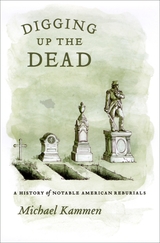 Digging Up the Dead: A History of Notable American Reburials
Michael Kammen
University of Chicago Press, 2010 With Digging Up the Dead, Pulitzer Prize–winning historian Michael Kammen reveals a treasure trove of fascinating, surprising, and occasionally gruesome stories of exhumation and reburial throughout American history. Taking us to the contested grave sites of such figures as Sitting Bull, John Paul Jones, Frank Lloyd Wright, Daniel Boone, Jefferson Davis, and even Abraham Lincoln, Kammen explores how complicated interactions of regional pride, shifting reputations, and evolving burial practices led to public and often emotional battles over the final resting places of famous figures. Grave-robbing, skull-fondling, cases of mistaken identity, and the financial lures of cemetery tourism all come into play as Kammen delves deeply into this little-known—yet surprisingly persistent—aspect of American history. Simultaneously insightful and interesting, masterly and macabre, Digging Up the Dead reminds us that the stories of American history don’t always end when the key players pass on. Rather, the battle—over reputations, interpretations, and, last but far from least, possession of the remains themselves—is often just beginning.
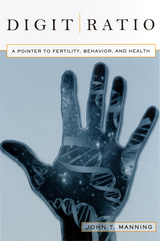 Digit Ratio: A Pointer to Fertility, Behavior, and Health
John T. Manning
Rutgers University Press, 2002 Could the length of your fingers indicate a predisposition to breast cancer? Or musical genius? Or homosexuality? In Digit Ratio, John T. Manning posits that relative lengths of the second and fourth digits in humans (2D:4D ratio) does provide such a window into hormone- and sex-related traits. It has been known for more than a century that men and women tend to differ in the relative lengths of their index (2D) and ring (4D) fingers, which upon casual observation seem fairly symmetrical. Men on average have fourth digits longer than their second digits, while women typically have the opposite. Digit ratios are unique in that they are fixed before birth, while other sexually dimorphic variables are fixed after puberty, and the same genes that control for finger length also control the development of the sex organs. The 2D:4D ratio is the only prenatal sexually dimorphic trait that measurably explains conditions linking testosterone, estrogen, and human development; the study of the ratio broadens our view of human ability, talent, behavior, disposition, health, and fertility. In this book, Manning presents evidence for how 2D:4D correlates with traits ranging from sperm counts, family size, musical genius, and sporting prowess, to autism, depression, homosexuality, heart attacks, and breast cancer, traits that are all linked with early exposure to sex hormones.
Digital and Analogue Instrumentation: Testing and measurement
Nihal Kularatna
The Institution of Engineering and Technology, 2003 To obtain the full value from instrumentation, users require familiarity with a number of basic concepts and an understanding of how those building blocks relate to one another. In this book, Nihal Kularatna provides an introduction to the main families of instruments for students and professionals who have to carry out practical work in electronics and measurement. For each family he covers internal design, use and applications, highlighting their advantages and limitations from a practical application viewpoint.
 The Digital and Its Discontents
Aden Evens
University of Minnesota Press, 2024 A groundbreaking critique of the digital world that analyzes its universal technological foundations Whence that nagging sense that something in the digital is amiss—that, as wonderful as our devices are, time spent on smartphones and computers leaves us sour, enervated, alienated? The Digital and Its Discontents uniquely explains that worry and points us toward a more satisfying relationship between our digital lives and our nondigital selves, one that requires a radical change in the way we incorporate technology into our lives. Aden Evens analyzes universal technological principles—in particular, the binary logic—to show that they encourage certain ways of thinking while making others more challenging or impossible. What is out of reach for any digital machine is contingency, the ontological principle that refuses every rule. As humans engage ourselves and our world ever more through digital machines, we are losing touch with contingency and so banishing from our lives the accidental and unexpected that fuel our most creative and novel possibilities for living. Taking cues from philosophy rather than cultural or media theory, Evens argues that the consequences of this erosion of contingency are significant yet often overlooked because the same values that make the digital seem so desirable also make contingency seem unimportant—without contingency the digital is confined to what has already been thought, and yet the digital’s ubiquity has allowed it to disguise this inherent sterility. Responsive only to desires that meet the demands of its narrow logic, the digital requires its users to practice those same ideological dictates, instituting a hegemony of thought and value sustained by the pervasive presence of digital mechanisms. Interweaving technical and philosophical concepts, The Digital and Its Discontents advances a powerful and urgent argument about the digital and its impact on our lives. Retail e-book files for this title are screen-reader friendly.
 Digital and Social Media in Africa
Edited by Henri-Count Evans, Ruth Teer-Tomaselli, and Tinashe Mawere
University of Westminster Press, 2025 This book provides case studies on the strategies used by African governments in monitoring and controlling digital and social media, as well as the implications of such actions for claims about media freedom and freedom of expression. Further, the book examines the human rights challenges posed by state control and monitoring of digital and social media forms of communication. In the context of a digital surveillance state, it questions how digital and social media can possibly enhance the democratisation of both the communicative and political spaces. The book focuses on questions of censorship and control of digital and social media in ‘supposedly’ democratic societies. It discusses regulation and how governments have imposed their state power by ‘switching off’ the internet and blocking social media sites under the guise of national security and order maintenance.
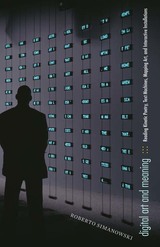 Digital Art and Meaning: Reading Kinetic Poetry, Text Machines, Mapping Art, and Interactive Installations
Roberto Simanowski
University of Minnesota Press, 2010 In a world increasingly dominated by the digital, the critical response to digital art generally ranges from hype to counterhype. Popular writing about specific artworks seldom goes beyond promoting a given piece and explaining how it operates, while scholars and critics remain unsure about how to interpret and evaluate them. This is where Roberto Simanowski intervenes, demonstrating how such critical work can be done.
Digital Art and Meaning offers close readings of varied examples from genres of digital art such as kinetic concrete poetry, computer-generated text, interactive installation, mapping art, and information sculpture. For instance, Simanowski deciphers the complex meaning of words that not only form an image on a screen but also react to the viewer’s behavior; images that are progressively destroyed by the human gaze; text machines generating nonsense sentences out of a Kafka story; and a light show above Mexico City’s historic square, created by Internet users all over the world.
Simanowski combines these illuminating explanations with a theoretical discussion that employs art philosophy and history to achieve a deeper understanding of each particular example of digital art and, ultimately, of the genre as a whole.
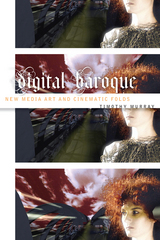 Digital Baroque: New Media Art and Cinematic Folds
Timothy Murray
University of Minnesota Press, 2008 A surprising and original application of theories of new media art In this intellectually groundbreaking work, Timothy Murray investigates a paradox embodied in the book’s title: What is the relationship between digital, in the form of new media art, and baroque, a highly developed early modern philosophy of art? Making an exquisite and unexpected connection between the old and the new, Digital Baroque analyzes the philosophical paradigms that inform contemporary screen arts. Examining a wide range of art forms, Murray reflects on the rhetorical, emotive, and social forces inherent in the screen arts’ dialogue with early modern concepts. Among the works discussed are digitally oriented films by Peter Greenaway, Jean-Luc Godard, and Chris Marker; video installations by Thierry Kuntzel, Keith Piper, and Renate Ferro; and interactive media works by Toni Dove, David Rokeby, and Jill Scott. Sophisticated readings reveal the electronic psychosocial webs and digital representations that link text, film, and computer. Murray puts forth an innovative Deleuzian psychophilosophical approach—one that argues that understanding new media art requires a fundamental conceptual shift from linear visual projection to nonlinear temporal folds intrinsic to the digital form.
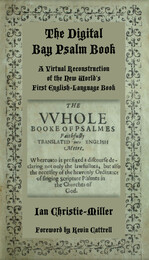 The Digital Bay Psalm Book: A Virtual Reconstruction of the New World's First English-Language Book
Ian Christie-Miller, with a foreword by Kevin Cattrell
University of Alabama Press, 2010
In 1638, the first printing press was imported to the Massachusetts Bay Colony and a group of local religious leaders—including, it is thought, Richard Mather, John Cotton, and Richard Eliot—set about to create “a plain and familiar translation of the psalms and words of David into English metre” for use in the colony’s church meetings. Earlier psalteries had been brought to the New World by colonists, but in Puritan thought they had strayed too far from the original Hebrew text. In 1640, The Whole Booke of Psalmes Faithfully Translated into English Metre was published in Cambridge; it was the first book published in the American Colonies. The Bay Psalm Book, as it has come to be known, consists of a substantial introduction summarizing the creators’ philosophy and intentions, followed by translations of the Psalms rendered into meter, enabling them to be sung to well-known tunes of the day. The psaltery was soon in widespread use on both sides of the Atlantic. It went through multiple printings and editions before being succeeded by newer texts in later decades.
Generations of theologians and scholars have turned to The Bay Psalm Book, considering it from a variety of perspectives. Besides its significance as a religious treatise, spiritual guide, and historical document, The Bay Psalm Book is also recognized as an important milestone in the evolution of the American musical tradition. In recent years, a new generation of scholars has returned to the book, seeing it from fresh perspectives—as a social document, for example, and as a physical artifact of early American life in the Massachusetts Bay area.
The Digital Bay Psalm Book gives scholars, researchers, and enthusiasts alike a rich and intimate experience of the book as it was known by its earliest readers.
As an electronic-only publication offered as a downloadable PDF, The Digital Bay Psalm Book takes advantage of digital technology to offer meticulously rendered photographs of the 7.25 x 4 inch book, one of several once owned by Thomas Prince, scholar and minister of Boston’s Old South Church from 1718 to 1758. In this format, users are able to zoom in to examine each individual page, the quality of the paper and printing, marginalia, notes, and other marks accrued over the centuries, yielding insights into the owner’s use and understanding of the text as well as the very life of the book itself. In addition, Christie-Miller provides four supplements that shed light on the technology and craft that went into the creation of America’s first English-language book.
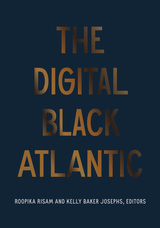 The Digital Black Atlantic
Roopika Risam
University of Minnesota Press, 2021 Exploring the intersections of digital humanities and African diaspora studies
How can scholars use digital tools to better understand the African diaspora across time, space, and disciplines? And how can African diaspora studies inform the practices of digital humanities? These questions are at the heart of this timely collection of essays about the relationship between digital humanities and Black Atlantic studies, offering critical insights into race, migration, media, and scholarly knowledge production. The Digital Black Atlantic spans the African diaspora’s range—from Africa to North America, Europe, and the Caribbean—while its essayists span academic fields—from history and literary studies to musicology, game studies, and library and information studies. This transnational and interdisciplinary breadth is complemented by essays that focus on specific sites and digital humanities projects throughout the Black Atlantic. Covering key debates, The Digital Black Atlantic asks theoretical and practical questions about the ways that researchers and teachers of the African diaspora negotiate digital methods to explore a broad range of cultural forms including social media, open access libraries, digital music production, and video games. The volume further highlights contributions of African diaspora studies to digital humanities, such as politics and representation, power and authorship, the ephemerality of memory, and the vestiges of colonialist ideologies. Grounded in contemporary theory and praxis, The Digital Black Atlantic puts the digital humanities into conversation with African diaspora studies in crucial ways that advance both. Contributors: Alexandrina Agloro, Arizona State U; Abdul Alkalimat; Suzan Alteri, U of Florida; Paul Barrett, U of Guelph; Sayan Bhattacharyya, Singapore U of Technology and Design; Agata Błoch, Institute of History of Polish Academy of Sciences; Michał Bojanowski, Kozminski U; Sonya Donaldson, New Jersey City U; Anne Donlon; Laurent Dubois, Duke U; Amy E. Earhart, Texas A&M U; Schuyler Esprit, U of the West Indies; Demival Vasques Filho, U of Auckland, New Zealand; David Kirkland Garner; Alex Gil, Columbia U; Kaiama L. Glover, Barnard College, Columbia U; D. Fox Harrell, MIT; Hélène Huet, U of Florida; Mary Caton Lingold, Virginia Commonwealth U; Angel David Nieves, San Diego State U; Danielle Olson, MIT; Tunde Opeibi (Ope-Davies), U of Lagos, Nigeria; Jamila Moore Pewu, California State U, Fullerton; Anne Rice, Lehman College, CUNY; Sercan Şengün, Northeastern U; Janneken Smucker, West Chester U; Laurie N.Taylor, U of Florida; Toniesha L. Taylor, Texas Southern U.
 Digital China: Creativity and Community in the Sinocybersphere
Jessica Imbach
Amsterdam University Press, 2024 Over the past decade, digital technologies have profoundly reshaped the Chinese cultural landscape. With a focus on the creative agency of new media and online communities, this volume examines this development through the notion of the Sinocybersphere - the networked spaces across the globe that not only operate on the Chinese script, but also imaginatively negotiate the meanings of Chinese culture in the digital age. Instead of asking what makes the internet or new media “Chinese,” the chapters situate contemporary entanglements of cultural and digital practices within specific historical, social, and discursive contexts. Covering topics as diverse as live-streaming, AI poetry, online literature, poetry memes, cyberpunk fiction, virtual art exhibitions, cooking videos, censorship, and viral translations, the collection as a whole not only engages with a wide range of Chinese new media phenomena, but also demonstrates their relevance to our understanding of contemporary digital culture.
Digital Cinema
Stephen Prince
Rutgers University Press, 2019 Digital Cinema considers how new technologies have revolutionized the medium, while investigating the continuities that might remain from filmmaking’s analog era. In the process, it raises provocative questions about the status of realism in a pixel-generated digital medium whose scenes often defy the laws of physics. It also considers what these changes might bode for the future of cinema. How will digital works be preserved and shared? And will the emergence of virtual reality finally consign cinema to obsolescence?
Stephen Prince offers a clear, concise account of how digital cinema both extends longstanding traditions of filmmaking and challenges some fundamental assumptions about film. It is essential reading for anyone interested in understanding how movies are shot, produced, distributed, and consumed in the twenty-first century.
 Digital Communications: Principles and systems
Ifiok Otung
The Institution of Engineering and Technology, 2014 A worldwide digital and wireless communication revolution has taken place in the last 20 years which has created a high demand in industry for graduates with in-depth expertise in digital transmission techniques and a sound and complete understanding of their core principles. Digital communications: Principles and systems recognises that although digital communications is developing at a fast pace, the core principles remain the same. It therefore concentrates on giving the reader a thorough understanding of core principles and extensive coaching in the solution of practical problems drawn from various application areas. The intention is that after studying the material presented, the student will have a solid foundation free of knowledge gaps, and will be fully equipped to undertake digital communication systems analysis, design and computer simulations, and to deal with specialised applications and follow advances in the technology. Topics covered include:
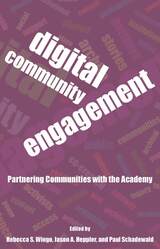 Digital Community Engagement: Partnering Communities with the Academy
Edited by Rebecca Wingo, Jason Heppler, and Paul Schadewald
University of Minnesota Press, 2020 How have university scholars across a variety of disciplines navigated the co-creative and collaborative relationships involving community partners? How has the addition of digital components changed the way information can be communicated to the intended audience? Through digital projects, traditional academic silos have given way to community-based partnerships which open research, storytelling, and curation to wide array of contributors from civic engagement professionals, librarians, archivists, technology personnel, local citizens, and academics. The collaborative process may push your comfort zone and make you grapple with your roll of storytelling but as the authors of the last chapter say, “You can’t make ketchup without smashing a few tomatoes.”
Digital projects can empower communities through collaboration and create new primary sources, collapse barriers, and spark new dialogue. Digital Community Engagement “lifts the hood” and presents nine examples of digital collaborations from constructing a public response to police violence, to creating digital stories of homelessness, to young activists united around local people in the Deep South to build a grassroots movement for social change.
Wingo, Heppler and Schadewald bring together cutting-edge campus-community partnerships with a focus on digital projects. The case studies, authored by academics and their community partners, explore models for digital community engagement that leverage new media through reciprocal partnerships. The contributions to this volume stand at the crossroads of digital humanities, public history, and community
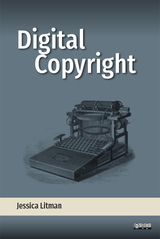 Digital Copyright
Jessica Litman
Michigan Publishing, 2017 The general public is used to thinking of copyright (if it thinks of it at all) as marginal and arcane. But copyright is central to our society’s information policy and affects what we can read, view, hear, use, or learn. In 1998 Congress enacted new laws greatly expanding copyright owners’ control over individuals’ private uses of their works. The efforts to enforce these new rights laws have resulted in highly publicized legal battles between established media, including major record labels and motion picture studios, and new upstart internet companies such as MP3.com and Napster.
Jessica Litman questions whether copyright laws crafted by lawyers and their lobbyists really make sense for the vast majority of us. Should every interaction between ordinary consumers and copyright-protected works be restricted by law? Is it practical to enforce such laws, or expect consumers to obey them? What are the effects of such laws on the exchange of information in a free society? Litman’s critique exposes the 1998 copyright law as an incoherent patchwork. She argues for reforms that reflect the way people actually behave in their daily digital interactions.
The Maize Books edition includes both an afterword written in 2006 exploring the rise of peer-to-peer file sharing and a new Postscript reflecting on the consequences of the Digital Millennium Copyright Act as it nears its twentieth birthday.
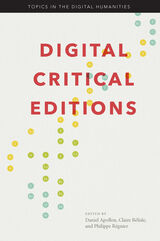 Digital Critical Editions
Edited by Daniel Apollon, Claire Belisle, and Philippe Regnier
University of Illinois Press, 2014 Provocative yet sober, Digital Critical Editions examines how transitioning from print to a digital milieu deeply affects how scholars deal with the work of editing critical texts. On one hand, forces like changing technology and evolving reader expectations lead to the development of specific editorial products, while on the other hand, they threaten traditional forms of knowledge and methods of textual scholarship. Using the experiences of philologists, text critics, text encoders, scientific editors, and media analysts, Digital Critical Editions ranges from philology in ancient Alexandria to the vision of user-supported online critical editing, from peer-directed texts distributed to a few to community-edited products shaped by the many. The authors discuss the production and accessibility of documents, the emergence of tools used in scholarly work, new editing regimes, and how the readers' expectations evolve as they navigate digital texts. The goal: exploring questions such as, What kind of text is produced? Why is it produced in this particular way? Digital Critical Editions provides digital editors, researchers, readers, and technological actors with insights for addressing disruptions that arise from the clash of traditional and digital cultures, while also offering a practical roadmap for processing traditional texts and collections with today's state-of-the-art editing and research techniques thus addressing readers' new emerging reading habits.
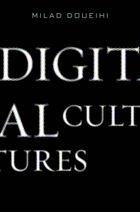 Digital Cultures
Milad Doueihi
Harvard University Press, 2011 In a world largely divided between giddy celebrants and dire detractors of digital culture, Milad Doueihi is one of the very few who speak with broadly informed and measured authority about what the rise of the digital means. Writing as a philologist and intellectual historian, Doueihi argues that digital culture is or will be akin to religion in the scope of its influence and power, and that because of its omnipresence it requires special analysis. Digital Cultures is the culmination of his deep and far-reaching attempts to meet this need.
Doueihi shows clearly how applying the notions of print culture to digital textuality distorts the logic and promise of the new literacy. He then moves on to examine a number of inherent contradictions or tensions in digital culture: between digital technology’s capacity to create a public sphere and its use as an instrument of control and censorship; between the possible collective and anonymous construction of knowledge in the Wikisphere and the dissemination of errors. Throughout, he strives to give a balanced account of digitization’s potential for both disruption and innovation.
Writing accessibly about the underlying technology, Doueihi explores the multidimensional question of what it means to participate in online culture—from literacy and citizenship to texts, archiving, and storage. By bringing together topics explored separately elsewhere—such as copyright, digital subjectivity, and social networks—Digital Cultures offers a rare, comprehensive view of the emerging digital space.
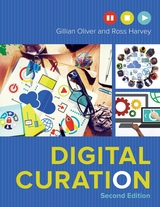 Digital Curation
Gillian Oliver
American Library Association, 2016 As an in-depth explanation of the entire digital curation lifecycle, from creation to appraisal to preservation to organization/access to transformation, the first edition of this text set a benchmark for both thoroughness and clarity. Boasting the expert guidance of international authorities Oliver and Harvey, this revamped and expanded edition widens the scope to address continuing developments in the strategies, technological approaches, and activities that are part of this rapidly changing field. In addition to current practitioners, those pursuing a career as librarian, archivist, or records manager will find this definitive survey invaluable. Filled with up-to-date best practices, it covers such important topics as - the scope and incentives of digital curation, detailing Digital Curation Centre's (DCC) lifecycle model as well as the Data Curation Continuum;
- key requirements for digital curation, from description and representation to planning and collaboration;
- the value and utility of metadata;
- considering the needs of producers and consumers when creating an appraisal and selection policy for digital objects;
- the paradigm shift by institutions towards cloud computing and its impact on costs, storage, and other key aspects of digital curation;
- the quality and security of data;
- new and emerging data curation resources, including innovative digital repository software and digital forensics tools;
- mechanisms for sharing and reusing data, with expanded sections on open access, open data, and open standards initiatives; and
- processes to ensure that data are preserved and remain usable over time.
Useful as both a teaching text and day-to-day working guide, this book outlines the essential concepts and techniques that are crucial to preserving the longevity of digital resources.
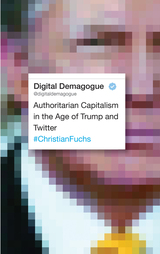 Digital Demagogue: Authoritarian Capitalism in the Age of Trump and Twitter
Christian Fuchs
Pluto Press, 2018 From 'Covfefe' to #FraudNewsCNN and #FakeNews, Donald Trump's tweets have caused an international frenzy. He is a reality TV and Twitter-President, who uses digital and entertainment culture as an ideological weapon - as an expression of his authoritarianism.
This book delves into new political-economic structures as expressed through political communication to explain the rise of authoritarian capitalism, nationalism and right-wing ideology throughout the world. Christian Fuchs does this through updating Marxist theory and the Frankfurt School's critical theory. He re-invigorates the works on authoritarianism of Franz L. Neumann, Theodor W. Adorno, Erich Fromm, Herbert Marcuse, Max Horkheimer, Wilhelm Reich, Leo Lowenthal and Klaus Theweleit in the age of Trump and Twitter.
In the age of big data and social media, Digital Demagogue studies the expressions of ideology, nationalism and authoritarianism today and discusses prospects for overcoming capitalism and renewing the Left.
Digital Depression: Information Technology and Economic Crisis
Dan Schiller
University of Illinois Press, 2014 The financial crisis of 2007-08 shook the idea that advanced information and communications technologies (ICTs) as solely a source of economic rejuvenation and uplift, instead introducing the world to the once-unthinkable idea of a technological revolution wrapped inside an economic collapse. In Digital Depression, Dan Schiller delves into the ways networked systems and ICTs have transformed global capitalism during the so-called Great Recession. He focuses on capitalism's crisis tendencies to confront the contradictory matrix of a technological revolution and economic stagnation making up the current political economy and demonstrates digital technology's central role in the global political economy. As he shows, the forces at the core of capitalism--exploitation, commodification, and inequality--are ongoing and accelerating within the networked political economy.
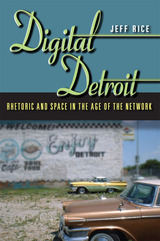 Digital Detroit: Rhetoric and Space in the Age of the Network
Jeff Rice
Southern Illinois University Press, 2012 Since the 1967 riots that ripped apart the city, Detroit has traditionally been viewed either as a place in ruins or a metropolis on the verge of rejuvenation. In Digital Detroit: Rhetoric and Space in the Age of the Network, author Jeff Rice goes beyond the notion of Detroit as simply a city of two ideas. Instead he explores the city as a web of multiple meanings which, in the digital age, come together in the city’s spaces to form a network that shapes the writing, the activity, and the very thinking of those around it. Rice focuses his study on four of Detroit’s most iconic places—Woodward Avenue, the Maccabees Building, Michigan Central Station, and 8 Mile—covering each in a separate chapter. Each of these chapters explains one of the four features of network rhetoric: folksono(me), the affective interface, response, and decision making. As these rhetorical features connect, they form the overall network called Digital Detroit. Rice demonstrates how new media, such as podcasts, wikis, blogs, interactive maps, and the Internet in general, knit together Detroit into a digital network whose identity is fluid and ever-changing. In telling Detroit’s spatial story, Rice deftly illustrates how this new media, as a rhetorical practice, ultimately shapes understandings of space in ways that computer applications and city planning often cannot. The result is a model for a new way of thinking and interacting with space and the imagination, and for a better understanding of the challenges network rhetorics pose for writing.
 The Digital Difference: Media Technology and the Theory of Communication Effects
W. Russell Neuman
Harvard University Press, 2016 The Digital Difference examines how the transition from the industrial-era media of one-way publishing and broadcasting to the two-way digital era of online search and social media has affected the dynamics of public life.
In the digital age, fundamental beliefs about privacy and identity are subject to change, as is the formal legal basis of freedom of expression. Will it be possible to maintain a vibrant and open marketplace of ideas? In W. Russell Neuman’s analysis, the marketplace metaphor does not signal that money buys influence, but rather just the opposite—that the digital commons must be open to all ideas so that the most powerful ideas win public attention on their merits rather than on the taken-for-granted authority of their authorship.
“Well-documented, methodical, provocative, and clear, The Digital Difference deserves a prominent place in communication proseminars and graduate courses in research methods because of its reorientation of media effects research and its application to media policy making.”
—John P. Ferré, Journalism and Mass Communication Quarterly
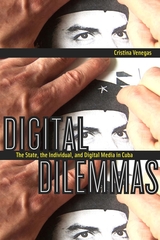 Digital Dilemmas: The State, the Individual, and Digital Media in Cuba
Venegas, Cristina
Rutgers University Press, 2010 The contentious debate in Cuba over Internet use and digital media primarily focuses on three issuesùmaximizing the potential for economic and cultural development, establishing stronger ties to the outside world, and changing the hierarchy of control. A growing number of users decry censorship and insist on personal freedom in accessing the web, while the centrally managed system benefits the government in circumventing U.S. sanctions against the country and in controlling what limited capacity exists. Digital Dilemmas views Cuba from the Soviet Union's demise to the present, to assess how conflicts over media access play out in their both liberating and repressive potential. Drawing on extensive scholarship and interviews, Cristina Venegas questions myths of how Internet use necessarily fosters global democracy and reveals the impact of new technologies on the country's governance and culture. She includes film in the context of broader media history, as well as artistic practices such as digital art and networks of diasporic communities connected by the Web. This book is a model for understanding the geopolitic location of power relations in the age of digital information sharing.
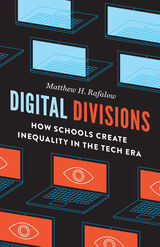 Digital Divisions: How Schools Create Inequality in the Tech Era
Matthew H. Rafalow
University of Chicago Press, 2020 In the digital age, schools are a central part of a nationwide effort to make access to technology more equitable, so that all young people, regardless of identity or background, have the opportunity to engage with the technologies that are essential to modern life. Most students, however, come to school with digital knowledge they’ve already acquired from the range of activities they participate in with peers online. Yet, teachers, as Matthew H. Rafalow reveals in Digital Divisions, interpret these technological skills very differently based on the race and class of their student body.
While teachers praise affluent White students for being “innovative” when they bring preexisting and sometimes disruptive tech skills into their classrooms, less affluent students of color do not receive such recognition for the same behavior. Digital skills exhibited by middle class, Asian American students render them “hackers,” while the creative digital skills of working-class, Latinx students are either ignored or earn them labels troublemakers. Rafalow finds in his study of three California middle schools that students of all backgrounds use digital technology with sophistication and creativity, but only the teachers in the school serving predominantly White, affluent students help translate the digital skills students develop through their digital play into educational capital. Digital Divisions provides an in-depth look at how teachers operate as gatekeepers for students’ potential, reacting differently according to the race and class of their student body. As a result, Rafalow shows us that the digital divide is much more than a matter of access: it’s about how schools perceive the value of digital technology and then use them day-to-day.
 Digital Dynamics in Nordic Contemporary Art
Edited by Tanya Toft Ag
Intellect Books, 2018 An embracive, multi-perspective tour through and beyond Nordic artistic experiments, conceptual reconfigurations and new modes of artistic agency.
Offering an in-depth exploration of art’s contingent evolution with technology and digital culture, this book goes far beyond familiar depictions of Nordic aesthetics in art. It explores art’s role and inquiries in response to changing sociopolitical realities in the welfare state and in the wider world. First-hand perspectives of pioneering and pivotal artists form the basis of chapters penned by leading scholars and curators of Nordic art. Digital Dynamics in Nordic Contemporary Art recasts the Nordic art context in an expanding digital condition and reveals horizontal ways to write its histories.
Over the past few decades, the Nordic region has witnessed large shifts in its political, social and international outlook. Meanwhile, its art, commonly described as introverted, contemplative and wild, is also undergoing changes. As technology embeds itself further into the contemporary art scene, there is a renewed need to examine the role of art in society and everyday life, and to consider how the digitalization of art has tackled socio-political realities, locally and in the wider world. Digital Dynamics in Nordic Contemporary Art includes a collection of testimonials from 78 artists, connected to Nordic art, who employ concepts and/or tools relating to the digital in their practice. Their statements form the basis of the essays in Part 2, penned by leading scholars affiliated with the Nordic art context, which inquire into the digital influences on contemporary art, with particular attention paid to the national and international Nordic socio-political context. Landscapes, nature, minimalism, melancholia--this book examines how these traditional Nordic tropes hold up in the growing field of digital contemporary art, and asks: to what extent have digital dynamics been adopted into the imaginaries and practices of Nordic artists?
Chapters by Tanya Toft Ag, Jamie Allen, Laura Beloff, Budhaditya Chattopadhyay, Jonatan Habib Engqvist, Bernhard Garnicnig, Elizabeth Jochum, Ulla Angkjær Jørgensen, Jens Tang Kristensen, Mads Dejbjerg Lind, Björn Norberg, Margrét Elísabet Ólafsdóttir, Jøran Rudi, Lorella Scacco, Morten Søndergaard, Mette-Marie Zacher Sørensen, and Stahl Stenslie.
Tanya Toft Ag (editor) is a curator and scholar specializing in media and digital art and its urban implications.Affected by technology and globalization, the Nordic region is experiencing large shifts in its socio-political conditions and international outlook today. As digital dynamics affect life worlds, contemporary artists are making new inquiries in response to the changing Nordic context. As a result of these ever-evolving circumstances, conditions and motivations for making art change as well. As technology and digital culture become more deeply embedded in the contemporary art scene, there is a renewed need to examine the role of art in society and everyday life, and to consider how the digital inspires artists to evolve and tackle socio-political realities, locally and in the wider world.
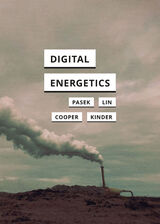 Digital Energetics
Anne Pasek
University of Minnesota Press, 2023 Exploring the connections between energy and media—and what those connections mean for our current moment Energy and media are the entangled middles of social life—and also of each other. This volume traces the contours of both a media analytic of energy and an energy analytic of media across the cultural, environmental, and economic relations they undergird. Digital Energetics argues that media and energy require joint theorization—not only in their potential to universalize but also in the many contingent and intermeshed relations that they bind together across contemporary informational and fossil regimes. Focusing specifically on digital operations, the coauthors analyze how data and energy have jointly modulated the character of the materiality and labor of digital systems in a warming world. Anne Pasek provides a brief energy history of the bit, tracing how the electrification and digitization of American computing propelled a turn toward efficiency as both a solution and instigator of parallel crises in the workforce and the climate. Zane Griffin Talley Cooper traces these concerns within cryptographic proof-of-work systems and the heat they necessarily produce and seek to manage. Following heat through the twinned histories of thermodynamics and information theory, he argues that such systems are best approached as a paradigmatic, rather than exceptional, example of computing infrastructures. Cindy Kaiying Lin focuses on the practical and political frictions created as database and management designs move from the Global North to South, illustrating how the energy constraints and software cultures of Indonesia open new spaces of autonomy within environmental governance. Finally, Jordan B. Kinder offers a theorization of “platform energetics,” demonstrating how public energy discourses and settler land claims are entangled in the digital infrastructures of data colonialism in Canada.
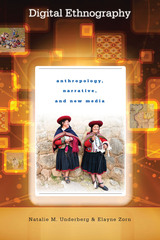 Digital Ethnography: Anthropology, Narrative, and New Media
By Natalie M. Underberg and Elayne Zorn
University of Texas Press, 2013 Digital ethnography can be understood as a method for representing real-life cultures through storytelling in digital media. Enabling audiences to go beyond absorbing facts, computer-based storytelling allows for immersion in the experience of another culture. A guide for anyone in the social sciences who seeks to enrich ethnographic techniques, Digital Ethnography offers a groundbreaking approach that utilizes interactive components to simulate cultural narratives. Integrating insights from cultural anthropology, folklore, digital humanities, and digital heritage studies, this work brims with case studies that provide in-depth discussions of applied projects. Web links to multimedia examples are included as well, including projects, design documents, and other relevant materials related to the planning and execution of digital ethnography projects. In addition, new media tools such as database development and XML coding are explored and explained, bridging the literature on cyber-ethnography with inspiring examples such as blending cultural heritage with computer games. One of the few books in its field to address the digital divide among researchers, Digital Ethnography guides readers through the extraordinary potential for enrichment offered by technological resources, far from restricting research to quantitative methods usually associated with technology. The authors powerfully remind us that the study of culture is as much about affective traits of feeling and sensing as it is about cognition—an approach facilitated (not hindered) by the digital age.
Digital Experience Design: Ideas, Industries, Interaction
Edited by Linda Leung
Intellect Books, 2008 Although the dot-com bubble burst long ago, the interactive media industry is still flush with fresh talent, new ideas, and financial success. Digital Experience Design chronicles the diverse histories and perspectives of people working in the dot-com world alongside an account of the current issues facing the industry. From the perspective of older disciplines such as education, fine art, and cinema, this volume investigates how dot-com practitioners balance the science of usability with abstract factors such as the emotional response that design can provoke. Including in-depth discussion of screen-based design and e-learning, this volume is essential for industry professionals and students alike.
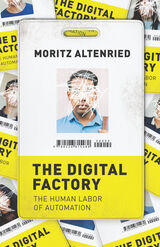 The Digital Factory: The Human Labor of Automation
Moritz Altenried
University of Chicago Press, 2022 The Digital Factory reveals the hidden human labor that supports today’s digital capitalism.
The workers of today’s digital factory include those in Amazon warehouses, delivery drivers, Chinese gaming workers, Filipino content moderators, and rural American search engine optimizers. Repetitive yet stressful, boring yet often emotionally demanding, these jobs require little formal qualification, but can demand a large degree of skills and knowledge. This work is often hidden behind the supposed magic of algorithms and thought to be automated, but it is in fact highly dependent on human labor.
The workers of today’s digital factory are not as far removed from a typical auto assembly line as we might think. Moritz Altenried takes us inside today’s digital factories, showing that they take very different forms, including gig economy platforms, video games, and Amazon warehouses. As Altenried shows, these digital factories often share surprising similarities with factories from the industrial age. As globalized capitalism and digital technology continue to transform labor around the world, Altenried offers a timely and poignant exploration of how these changes are restructuring the social division of labor and its geographies as well as the stratifications and lines of struggle.
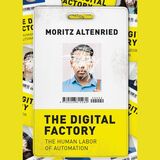 The Digital Factory: The Human Labor of Automation
Moritz Altenried
University of Chicago Press, 2022 This is an auto-narrated audiobook edition of this book. The Digital Factory reveals the hidden human labor that supports today’s digital capitalism.
The workers of today’s digital factory include those in Amazon warehouses, delivery drivers, Chinese gaming workers, Filipino content moderators, and rural American search engine optimizers. Repetitive yet stressful, boring yet often emotionally demanding, these jobs require little formal qualification, but can demand a large degree of skills and knowledge. This work is often hidden behind the supposed magic of algorithms and thought to be automated, but it is in fact highly dependent on human labor.
The workers of today’s digital factory are not as far removed from a typical auto assembly line as we might think. Moritz Altenried takes us inside today’s digital factories, showing that they take very different forms, including gig economy platforms, video games, and Amazon warehouses. As Altenried shows, these digital factories often share surprising similarities with factories from the industrial age. As globalized capitalism and digital technology continue to transform labor around the world, Altenried offers a timely and poignant exploration of how these changes are restructuring the social division of labor and its geographies as well as the stratifications and lines of struggle.
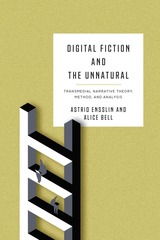 Digital Fiction and the Unnatural: Transmedial Narrative Theory, Method, and Analysis
Astrid Ensslin and Alice Bell
Ohio State University Press, 2021 Digital Fiction and the Unnatural: Transmedial Narrative Theory, Method, and Analysis offers the first comprehensive and systematic theoretical, methodological, and analytical examination of unnatural narratology as a medium-specific and transmedial phenomenon. It applies and adapts key concepts of narrative theory and analysis to digital-born fictions ranging from hypertext and interactive fiction to 3D-narrative video games, app fiction, and virtual reality. The book addresses the unique affordances of digital fiction by focusing on multilinearity and narrative contradiction, interactional metalepsis, impossible time and space, “extreme” digital narration, and medium-specific forms of textual “you.” In so doing, the book refines, critiques, and expands unnatural, cognitive, and transmedial narratology by placing the form of these new narratives front and center.
Digital Futures and the City of Today: New Technologies and Physical Spaces
Edited by Glenda Amayo Caldwell, Carl Smith, and Edward Clift
Intellect Books, 2016 In the contemporary city, the physical infrastructure and sensorial experiences of two millennia are now interwoven within an invisible digital matrix. This matrix alters human perceptions of the city, informs our behavior, and increasingly influences the urban designs we ultimately inhabit. Digital Futures and the City of Today cuts through these issues to analyze the work of architects, designers, media specialists, and a growing number of community activists, laying out a multifaceted view of the complex integrated phenomenon of the contemporary city. Split into three relevant sections, the book interrogates the concept of the “smart” city, examines innovative digital projects from around the world, documents experimental visions for the future, and describes projects that engage local communities in the design process.
 Digital Futures of Graduate Study in the Humanities
Gabriel Hankins
University of Minnesota Press, 2024 A resource for planning, reimagining, and participating in the digital transformation of graduate study in the humanities
How are the humanities adapting to the rise of digital technologies, and what are some of the tried and tested ways that postsecondary institutions are proving the importance of humanities training at the graduate level? Bringing together a diverse group of scholars and students, Digital Futures of Graduate Study in the Humanities invites a reimagining of current models of graduate education to address ongoing challenges to the humanities and to create sustainable and humane pedagogies, classes, and institutions. The essays cover a wide range of topics, including the skills required to learn and practice digital methods, the resources needed to support students and faculty in this enterprise, the lack of meaningful credit for undertaking this time-intensive work, and the diminished employment possibilities within academia for graduate students who emerge with these skills. Mapping the broad terrain through which to address and intervene in these particular issues and beyond, this book offers deep insights into the digital futures of graduate studies in the humanities. Contributors: Maria José Afanador-Llach, U de los Andes, Bogotá; Maria K. Alberto, U of Utah; Agnieszka Backman; Travis M. Bartley, CUNY Graduate Center; Peggy Bockwinkel, U Stuttgart; Alison Booth, U of Virginia; Donna Alfano Bussell, U of Illinois Springfield; Joshua Casmir Catalano, Clemson U; Laura Crossley, George Mason U; Quinn Dombrowski, Stanford U; Stuart Dunn, King’s College London; Jennifer Edmond, Trinity College Dublin; Natalia Ermolaev, Princeton U; Laura Estill, St. Francis Xavier U; Malte Gäckle-Heckelen; Vicky Garnett, Trinity College Dublin; Daniel Gorman Jr., U of Rochester; Sabrina T. Grimberg, Stanford U; Tena L. Helton, U of Illinois Springfield; Jeanelle Horcasitas; Melissa A. Hosek, Stanford U; Hoyeol Kim; Brady Krien, U of Iowa; Benjamin Charles Germain Lee, U of Washington; Pamela E. Mack, Clemson U; Meredith Martin, Princeton U; Germán Camilo Martínez Peñaloza, U de los Andes, Bogotá; E. L. Meszaros, Brown U; Sara Mohr, Hamilton College; Sethunya Mokoko, U of Virginia; Rebecca Munson; Erin Francisco Opalich; Olivia Quintanilla, MiraCosta College; Cecily Raynor, McGill U; Amanda E. Regan, Clemson U; Heather Richards-Rissetto, U of Nebraska–Lincoln; Jacob D. Richter, George Washington U; Stephen Robertson, George Mason U; Katina L. Rogers; Claus-Michael Schlesinger, Humboldt U Berlin; Douglas Seefeldt, Clemson U; Kayla Shipp, Yale Digital Humanities Lab; Serenity Sutherland, SUNY Oswego; Toma Tasovac, Belgrade Center for Digital Humanities; Hannah Taylor, Duke U; Manfred Thaller, U of Cologne; Madeline Ullrich, U of Rochester; Ted Underwood, U of Illinois Urbana-Champaign; Gabriel Viehhauser, U Stuttgart; Brandon Walsh, U of Virginia Library; Sean Weidman, Lycoming College; Alex Wermer-Colan, Temple U; Adrian S. Wisnicki, U of Nebraska–Lincoln; Alexander J. Zawacki, U Göttingen. Retail e-book files for this title are screen-reader friendly with images accompanied by short alt text and/or extended descriptions.
Digital Gaming and the Advertising Landscape
Teresa de la Hera
Amsterdam University Press, 2019 The evolution of the game industry and changes in the advertising landscape in recent years have led to a keen interest of marketers in using digital games for advertising purposes. However, despite the increasing interest in this marketing strategy, the potential of digital games as a medium to convey advertising messages remains unexploited.
Digital Gaming and the Advertising Landscape explores the different ways advertising messages can be embedded within digital games. An interdisciplinary approach is used to help explain how persuasive communication works within digital games. It does so by forging new links within the area of game studies where the emphasis of this book clearly lies, while also taking up new subjects such as design theories and their relation to games as well as how this relationship may be used in a practical context.
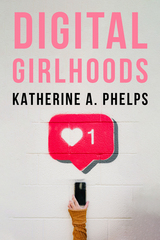 Digital Girlhoods
Katherine A. Phelps
Temple University Press, 2025 Tween girls in America today are growing up on social media, posting selfies and sharing “stories.” In Digital Girlhoods, Katherine Phelps emphasizes tween girls’ agency on social media vis-à-vis identity formation, content creation, and community building. When a tween girl posts a video on YouTube asking the world, “Am I pretty or ugly?”, she is also asking, “Who am I?” This content makes visible the pitfalls and potentials of these tweens creating their own digital narratives—and it asks us to take them seriously.
Featuring in-depth interviews with a cross section of tween girls, Phelps allows them to give meanings to their relationships with social media and their peers in their own words. As tween girls embody and negotiate the many contradictions of American girlhoods through social media participation (for example, the “Pretty or Ugly” YouTube trend), Phelps asks, how are tween girls living and experiencing girlhoods in the digital age?
The processes of experiencing and enacting tweenhood and girlhood online are explicitly gendered. Digital Girlhoods thoughtfully considers what tween girlhoods look and feel like in America today.
 Digital Giza: Visualizing the Pyramids
Peter Der Manuelian
Harvard University Press, 2017 The Pyramids on the Giza Plateau represent perhaps the most famous archaeological site in the world, capturing on tomb walls frozen moments from almost every aspect of life in ancient Egypt. This book, by one of the foremost experts on the history of Giza, explores new approaches to “cataloging” the site, highlighting efforts at the Museum of Fine Arts Boston and Harvard University.
The site experienced its first “golden age” as the burial place of three pharaohs of the Egyptian Old Kingdom (Dynasty 4, ca. 2640–2510 BCE). A second golden age came almost five millennia later, when the first modern excavators applied their newly devised archaeological craft to the Giza Plateau. Now, with the advent of many new technologies in the twenty-first century, the Giza Necropolis is available in two, three, and even four dimensions. Children and specialized scholars alike may study the material culture of this ancient civilization from afar, often with greater access than could be achieved in person. However, these new approaches do raise questions: Does 3-D modeling and animation truly improve scholarly comprehension and interpretation? Can interacting with animations still be called scholarship? Where is the border between academic knowledge and mere entertainment?
Through specific case studies and an in-depth history of this important project, Peter Der Manuelian provides an excellent model for other digital visualization initiatives. He also offers more general philosophical reflection on the nature of visualization in archaeology and speculates about emerging technologies and how they may be useful in the future.
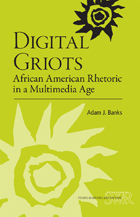 Digital Griots: African American Rhetoric in a Multimedia Age
Adam J. Banks
Southern Illinois University Press, 2011 Scholar Adam J. Banks offers a mixtape of African American digital rhetoric in his innovative study Digital Griots: African American Rhetoric in a Multimedia Age. Presenting the DJ as a quintessential example of the digital griot-high-tech storyteller-this book shows how African American storytelling traditions and their digital manifestations can help scholars and teachers shape composition studies, thoroughly linking oral, print, and digital production in ways that centralize African American discursive practices as part of a multicultural set of ideas and pedagogical commitments.
DJs are models of rhetorical excellence; canon makers; time binders who link past, present, and future in the groove and mix; and intellectuals continuously interpreting the history and current realities of their communities in real time. Banks uses the DJ's practices of the mix, remix, and mixtape as tropes for reimagining writing instruction and the study of rhetoric. He combines many of the debates and tensions that mark black rhetorical traditions and points to ways for scholars and students to embrace those tensions rather than minimize them. This commitment to both honoring traditions and embracing futuristic visions makes this text unique, as do the sites of study included in the examination: mixtape culture, black theology as an activist movement, everyday narratives, and discussions of community engagement. Banks makes explicit these connections, rarely found in African American rhetoric scholarship, to illustrate how competing ideologies, vernacular and academic writing, sacred and secular texts, and oral, print, and digital literacies all must be brought together in the study of African American rhetoric and in the teaching of culturally relevant writing.
A remarkable addition to the study of African American rhetorical theory and composition studies, Digital Griots: African American Rhetoric in a Multimedia Age will compel scholars and students alike to think about what they know of African American rhetoric in fresh and useful ways.
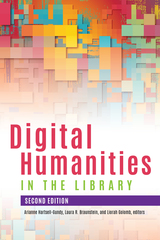 Digital Humanities in the Library, Second Edition
Arianne Hartsell-Gundy
Association of College & Research Libraries, 2024 The field of digital humanities—and the way in which libraries and library workers support and engage with it—continues to expand and evolve with technological innovations and global and national events that have had a large-scale impact on the world. There are productive new ways to interrogate and expand the meaning of digital humanities and the contributions of subject specialists, digital scholarship center directors, user experience experts, special collections librarians, and technical specialists.
This revised and expanded edition of 2015’s Digital Humanities in the Library includes key reprints from the first edition and new chapters that explore digital humanities and diversity, inclusion, and equity; issues of labor, precarity, and infrastructure; scholarly communication and taxonomies of credit; long-term sustainability; and library digital humanities in the age of institutional austerity.
Divided into sections on theory and practice, chapter authors work in a variety of institution types in many different roles and offer ideas and strategies for cross-institutional collaborations and new approaches to the digital humanities work being done. As Paige Morgan says in the foreword, “Any digital humanist who can enthuse about data can also tell you that computers alone cannot do the work—you need the thoughtfulness of a human expert to find the way forward. This collection can help us do that.”
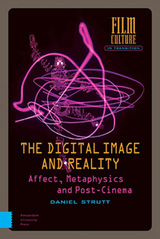 The Digital Image and Reality: Affect, Metaphysics and Post-Cinema
Daniel Strutt
Amsterdam University Press, 2019 The media technologies that surround and suffuse our everyday life profoundly affect our relation to reality. Philosophers since Plato and Aristotle have sought to understand the complex influence of apparently simple tools of expression on our understanding and experience of the world, time, space, materiality and energy. The Digital Image and Reality takes up this crucial philosophical task for our digital era. This rich yet accessible work argues that when new visual technologies arrive to represent and simulate reality, they give rise to nothing less than a radically different sensual image of the world. Through engaging with post-cinematic content and the new digital formats in which it appears, Strutt uncovers and explores how digital image-making is integral to emergent modes of metaphysical reflection - to speculative futurism, optimistic nihilism, and ethical plasticity. Ultimately, he prompts the reader to ask whether the impact of digital image processes might go even beyond our subjective consciousness of reality, towards the synthesis of objective actuality itself.
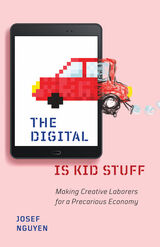 The Digital Is Kid Stuff: Making Creative Laborers for a Precarious Economy
Josef Nguyen
University of Minnesota Press, 2021 How popular debates about the so-called digital generation mediate anxieties about labor and life in twenty-first-century America
“The children are our future” goes the adage, a proclamation that simultaneously declares both anxiety as well as hope about youth as the next generation. In The Digital Is Kid Stuff, Josef Nguyen interrogates this ambivalence within discussions about today’s “digital generation” and the future of creativity, an ambivalence that toggles between the techno-pessimism that warns against the harm to children of too much screen time and a techno-utopianism that foresees these “digital natives” leading the way to innovation, economic growth, increased democratization, and national prosperity. Nguyen engages cultural histories of childhood, youth, and creativity through chapters that are each anchored to a particular digital media object or practice. Nguyen narrates the developmental arc of a future creative laborer: from a young kid playing the island fictions of Minecraft, to an older child learning do-it-yourself skills while reading Make magazine, to a teenager posting selfies on Instagram, to a young adult creative laborer imagining technological innovations using design fiction. Focusing on the constructions and valorizations of creativity, entrepreneurialism, and technological savvy, Nguyen argues that contemporary culture operates to assuage profound anxieties about—and to defuse valid critiques of—both emerging digital technologies and the precarity of employment for “creative laborers” in twenty-first-century neoliberal America.
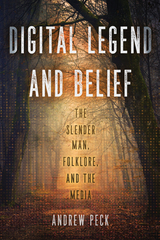 Digital Legend and Belief: The Slender Man, Folklore, and the Media
Andrew Peck
University of Wisconsin Press, 2023 The internet brings new urgency to the study of folklore. The digital networks we use every day amplify the capacity of legends to spread swiftly, define threats, and inform action. Using the case of a particularly popular digital bogeyman known as the Slender Man, Andrew Peck brings the study of legends into the twenty-first century. Peck explains not only how legends circulate in the digital swirl of the internet but also how the internet affects how legends seep into our offline lives and into the mass media we consume. What happens, he asks, when legends go online? How does the internet enable the creation of new legends? How do these ideas go viral? How do tradition and technology interact to construct collaborative beliefs?
Peck argues that the story of the Slender Man is really a story about the changing nature of belief in the age of the internet. Widely adopted digital technologies, from smartphones to social media, offer vast potential for extending traditional and expressive social behaviors in new ways. As such, understanding the online landscape of contemporary folklore is crucial for grasping the formation and circulation of belief in the digital age. Ultimately, Peck argues that advancing our comprehension of legends online can help us better understand how similar belief genres—like fake news, conspiracy theories, hoaxes, rumors, meme culture, and anti-expert movements—are enabled by digital media.
Digital Magazine Design: With Case Studies
Daniel Carpenter and Paul Honeywill
Intellect Books, 2000 Publishers of contemporary magazines invest more and more money in developing innovative design for an increasingly design-literate reader. Innovation, however, must always be grounded in the underlying conventions of legibility to ensure loyal readership and economic success.
Digital Magazine Design provides detailed descriptions of all the necessary rules of design, and uses these rules to cast a critical eye over a selection of contemporary high-street magazines.
The second part of this volume, written by publishing students, demonstrates how the tools of design can be applied to the analysis and practice of contemporary magazine design.
Through an understanding of the relationship between text, image and design, and the ability to make informed judgements, the student is able to critically evaluate all publishable material.
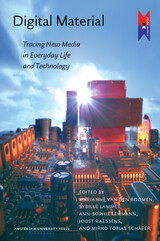 Digital Material: Tracing New Media in Everyday Life and Technology
Edited by Marianne van den Boomen, Sybille Lammes, Ann-Sophie Lehmann, Joost Rae
Amsterdam University Press, 2009
Three decades of societal and cultural alignment of new media have yielded a host of innovations, trials, and problems, accompanied by versatile popular and academic discourse. New Media Studies crystallized internationally into an established academic discipline, and this begs the question: where do we stand now? Which new questions are emerging now that new media are being taken for granted, and which riddles are still unsolved? Is contemporary digital culture indeed all about 'you', the participating user, or do we still not really understand the digital machinery and how this constitutes us as 'you'? The contributors to the present book, all employed in teaching and researching new media and digital culture, assembled their 'digital material' into an anthology, covering issues ranging from desktop metaphors to Web 2.0 ecosystems, from touch screens to blogging and e-learning, from role-playing games and cybergothic music to wireless dreams. Together the contributions provide a showcase of current research in the field, from what may be called a 'digital-materialist' perspective.
Digital Me: Trans Students Exploring Future Possible Selves Online
Z Nicolazzo
Rutgers University Press, 2023 The internet is where trans people have come to become. Creating an identity in digital space can be important for how trans people learn about themselves, their communities, and the possibilities available to them. While the internet and digital space is not the only way of coming to understand oneself in a community, it is a space of liberatory possibility and creativity. There is room to invent what may not yet exist for gender on the edges of what many consider to be “real.” For many, digital life can be the site of play, joy, and connection –even while the internet is not a harm-free space nor universally available. This book seeks to understand the complexities at play in the digital realm and the implications that have for gender, digital life, and higher education.
Digital Media Practices in Households: Kinship through Data
Larissa Hjorth
Amsterdam University Press, 2020 How are intergenerational relationships playing out in and through the digital rhythms of the household? Through extensive fieldwork in Tokyo, Shanghai and Melbourne, this book ethnographically explores how households are being understood, articulated and defined by digital media practices. It investigates the rise of self-tracking, quantified self and informal practices of care at distance as part of contemporary household dynamics.
Digital Medieval Studies—Experimentation and Innovation
Sean Gilsdorf
Arc Humanities Press, 2024
While the tale of Roberto Busa and the Index Thomisticus has become an origin myth for Digital Medieval Studies, less attention has been paid to the critical role of the World Wide Web as a platform and impetus for this digital turn. This volume focuses on early Medieval Studies research created with, operating through, and dependent upon the internet itself, profiling ground-breaking projects that define the genres of internet-based scholarship we now take for granted, including sourcebooks, searchable databases, digital editions and corpora, and born-digital medieval scholarship. The collection reveals how internet-based products rely upon and support a more collaborative model of research, teaching, and learning in Medieval Studies than the more individualistic, discrete one that defined earlier work in the field.
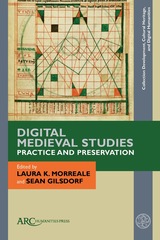 Digital Medieval Studies—Practice and Preservation
Laura K. Morreale
Arc Humanities Press, 2022
In the last decade, the terms “digital scholarship” and “digital humanities” have become commonplace in academia, spurring the creation of fellowships, research centres, and scholarly journals. What, however, does this “digital turn” mean for how you do scholarship as a medievalist? While many of us would never describe ourselves as “DH people,” computer-based tools and resources are central to the work we do every day in offices, libraries, and classrooms. This volume highlights the exciting ways digital methods are expanding and re-defining how we understand, represent, and teach the Middle Ages, and provides a new model for how this work is catalogued and reused within the scholarly community. The work of its contributors offers valuable insights into how “the digital” continues to shape the questions medievalists ask and the ways they answer them, but also into how those questions and answers can lead to new tools, approaches, and points of reference within the field of digital humanities itself.
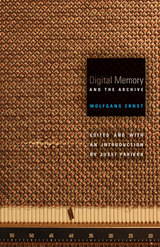 Digital Memory and the Archive
Wolfgang Ernst
University of Minnesota Press, 2012 In the popular imagination, archives are remote, largely obsolete institutions: either antiquated, inevitably dusty libraries or sinister repositories of personal secrets maintained by police states. Yet the archive is now a ubiquitous feature of digital life. Rather than being deleted, e-mails and other computer files are archived. Media software and cloud storage allow for the instantaneous cataloging and preservation of data, from music, photographs, and videos to personal information gathered by social media sites. In this digital landscape, the archival-oriented media theories of Wolfgang Ernst are particularly relevant. Digital Memory and the Archive, the first English-language collection of the German media theorist’s work, brings together essays that present Ernst’s controversial materialist approach to media theory and history. His insights are central to the emerging field of media archaeology, which uncovers the role of specific technologies and mechanisms, rather than content, in shaping contemporary culture and society. Ernst’s interrelated ideas on the archive, machine time and microtemporality, and the new regimes of memory offer a new perspective on both current digital culture and the infrastructure of media historical knowledge. For Ernst, different forms of media systems—from library catalogs to sound recordings—have influenced the content and understanding of the archive and other institutions of memory. At the same time, digital archiving has become a contested site that is highly resistant to curation, thus complicating the creation and preservation of cultural memory and history.
Digital Methods and Tools to Support Healthy Ageing
Pradeep Kumar Ray
The Institution of Engineering and Technology, 2021 While digital transformations are happening in all walks of society and business, there is real potential for improving the quality of life of the elderly using digital methods and tools. Digital health promises to deliver better healthcare quality cost-efficiently to more people, especially in the case of lifestyle diseases such as diabetes. It will achieve this by combining the benefits of telehealth, eHealth, data-driven personalised healthcare, and evidence-based care. This book presents a discussion of evolving digital technologies, such as smart phones and assisted living, and innovative digitally based services that are helping improve the quality and cost of healthcare for the elderly.
 Digital Methods and Traditional Chinese Literary Studies
Thomas Mazanec, Jeffrey Tharsen, and Jing Chen, special issue editors
Duke University Press This special issue of the Journal of Chinese Literature and Culture offers groundbreaking research taking place at the intersection of digital humanities and classical Chinese literary studies. Contributors put forth bold conclusions about the history of traditional Chinese literary culture, showing how the digital humanities can extend philology’s and literary studies’ traditional concerns to reexamine classic literary texts within the contexts of their production, reception, and circulation. Contributors use the tools and metrics of social-network analysis to study literary culture, map the geography of poetry production, and use sophisticated programs to trace patterns of rhetoric and allusion. Rather than purely focusing on theory or methodology, the contributors provide concrete case studies that offer new insights driven by digital tools and databases. The issue envisions a future in which computational technologies are an essential component of any humanistic study.
Contributors. Jing Chen, Timothy Clifford, Yi-long Huang, Chao-lin Liu, Thomas Mazanec, Evan Nicoll-Johnson, Qiao Junjun, Donald Sturgeon, Jeffrey Tharsen, Wang Zhaopeng, Bingyu Zheng, Mariana Zorkina
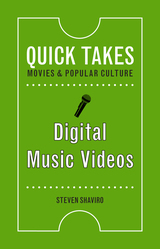 Digital Music Videos
Shaviro, Steven
Rutgers University Press, 2017 Music videos today sample and rework a century’s worth of movies and other pop culture artifacts to offer a plethora of visions and sounds that we have never encountered before.
As these videos have proliferated online, they have become more widely accessible than ever before. In Digital Music Videos, Steven Shaviro examines the ways that music videos interact with and change older media like movies and gallery art; the use of technologies like compositing, motion control, morphing software, and other digital special effects in order to create a new organization of time and space; how artists use music videos to project their personas; and how less well known musicians use music videos to extend their range and attract attention.
Surveying a wide range of music videos, Shaviro highlights some of their most striking innovations while illustrating how these videos are creating a whole new digital world for the music industry.
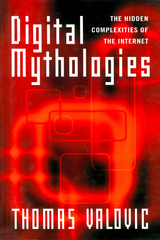 Digital Mythologies: The Hidden Complexities of the Internet
Valovic, Thomas
Rutgers University Press, 1999 Surf the web. Ride the information highway. Log on to the future. Corporate ad campaigns like these have become pervasive in the 1990s. You're either online, or you're falling behind the times-at least, that's what the media tells us. Ever since the 1990s, when the Internet gained widespread popularity, it has been heralded as one of the best things ever to happen to technology and communications. Commentators expected it to revolutionize how we communicate, do business, and educate our children. Conversely, other pundits have vehemently attacked this technology. Naysayers of "cyberlife" emerged with their warnings of how the Net provides an uncensored, round-the-clock venue for pornography, for inaccurate, simplified information, and is rife with opportunities to violate our right to privacy. In Digital Mythologies, Thomas Valovic hopes to raise the level of discussion by giving a full and balanced picture of how the Net affects our lives. Digital Mythologies, a collection of Valovic's essays, asks hard questions about where computer and communications technology is taking us. Through anecdotes drawn from his experiences as former editor-in-chief of Telecommunications magazine, the author gives readers an insider's peek behind the scenes of the Internet industry. He explores the underlying social and political implications of the Internet and its associated technologies, based on his contention that the cyberspace experience is far more complex than is commonly assumed. Valovic explores these hidden complexities, and points to fascinating connections between the Internet and our contemporary culture.
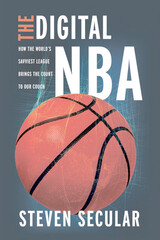 The Digital NBA: How the World's Savviest League Brings the Court to Our Couch
Steven Secular
University of Illinois Press, 2023 The National Basketball Association reaches a global audience via a multiplatform strategy that leverages its uncanny ability to connect fans to all things NBA. Steven Secular brings readers inside the league’s global operations and traces the history of the NBA’s approach to sports media from its 1980s embrace of cable through the streaming revolution of the twenty-first century. As fans around the world stream games and other league content, NBA teams incorporate foreign languages and cultures into broadcasts to boost their product’s appeal to audiences in Brazil, China, and beyond. Secular’s analysis reveals how the NBA continues to transform itself into a wildly successful media producer and distributor more akin to a streaming studio than the sports leagues of old even as its media partners and sponsors erase any notion of sports as a civic good. A timely look at a dynamic media landscape, The Digital NBA shows how the games we love became content first and sport a distant second.
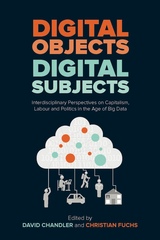 Digital Objects, Digital Subjects: Interdisciplinary Perspectives on Capitalism, Labour and Politics in the Age of Big Data
David Chandler and Christian Fuchs
University of Westminster Press, 2019 This volume explores activism, research and critique in the age of digital subjects and objects and Big Data capitalism after a digital turn said to have radically transformed our political futures. Optimists assert that the ‘digital’ promises: new forms of community and ways of knowing and sensing, innovation, participatory culture, networked activism, and distributed democracy. Pessimists argue that digital technologies have extended domination via new forms of control, networked authoritarianism and exploitation, dehumanization and the surveillance society. Leading international scholars present varied interdisciplinary assessments of such claims – in theory and via dialogue – and of the digital’s impact on society and the potentials, pitfalls, limits and ideologies, of digital activism. They reflect on whether computational social science, digital humanities and ubiquitous datafication lead to digital positivism that threatens critical research or lead to new horizons in theory and society. An electronic version of this book is freely available, thanks to the support of libraries working with Knowledge Unlatched. KU is a collaborative initiative designed to make high quality books Open Access for the public good. More information about the initiative and details about KU’s Open Access programme can be found at www.knowledgeunlatched.org.
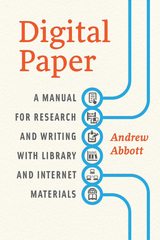 Digital Paper: A Manual for Research and Writing with Library and Internet Materials
Andrew Abbott
University of Chicago Press, 2014 Today’s researchers have access to more information than ever before. Yet the new material is both overwhelming in quantity and variable in quality. How can scholars survive these twin problems and produce groundbreaking research using the physical and electronic resources available in the modern university research library? In Digital Paper, Andrew Abbott provides some much-needed answers to that question.
Abbott tells what every senior researcher knows: that research is not a mechanical, linear process, but a thoughtful and adventurous journey through a nonlinear world. He breaks library research down into seven basic and simultaneous tasks: design, search, scanning/browsing, reading, analyzing, filing, and writing. He moves the reader through the phases of research, from confusion to organization, from vague idea to polished result. He teaches how to evaluate data and prior research; how to follow a trail to elusive treasures; how to organize a project; when to start over; when to ask for help. He shows how an understanding of scholarly values, a commitment to hard work, and the flexibility to change direction combine to enable the researcher to turn a daunting mass of found material into an effective paper or thesis.
More than a mere how-to manual, Abbott’s guidebook helps teach good habits for acquiring knowledge, the foundation of knowledge worth knowing. Those looking for ten easy steps to a perfect paper may want to look elsewhere. But serious scholars, who want their work to stand the test of time, will appreciate Abbott’s unique, forthright approach and relish every page of Digital Paper.
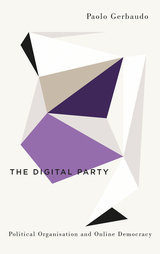 The Digital Party: Political Organisation and Online Democracy
Paolo Gerbaudo
Pluto Press, 2018 From the Pirate Parties in Northern Europe to Podemos in Spain and the 5-Star Movement in Italy, from the movements behind Bernie Sanders in the United States and Jeremy Corbyn in the United Kingdom, to Jean-Luc Melenchon's presidential bid in France, the last decade has witnessed the rise of a new blueprint for political organization: the digital party.
These new political formations tap into the potential of social media to gain consensus, and use online participatory platforms to include the rank-and-file. Paolo Gerbaudo looks at the restructuring of political parties and campaigns in the time of Facebook, Twitter, Instagram, and big data. Drawing on interviews with key political leaders and digital organizers, he argues that the digital party is very different from the class-based “mass party” of the industrial era, and offers promising new solutions to social polarization and the failures of liberal democracy today.
Digital Passages: Migrant Youth 2.0: Diaspora, Gender and Youth Cultural Intersections
Koen Leurs
Amsterdam University Press, 2015 Increasingly, young people live online, with the vast majority of their social and cultural interactions conducted through means other than face-to-face conversation. How does this transition impact the ways in which young migrants understand, negotiate, and perform identity? That's the question taken up by Digital Passages: Migrant Youth 2.0, a ground-breaking analysis of the ways that youth culture online interacts with issues of diaspora, gender, and belonging. Drawing on surveys, in-depth interviews, and ethnography, Koen Leurs builds an interdisciplinary portrait of online youth culture and the spaces it opens up for migrant youth to negotiate power relations and to promote intercultural understanding.
Digital Pedagogy in Early Modern Studies: Method and Praxis
Edited by Andie Silva and Scott Schofield
Iter Press, 2023 A collection of essays on early modern digital humanities by leading scholars in the field.
This collection of essays focuses on teaching at the intersection of early modern literature, book history, and digital media. It considers how teaching different fields and methods of study can be enhanced and facilitated by digital technologies. The volume provides a snapshot of current thinking on digital pedagogy as practiced by leading scholars in the field and offers a series of models that may be adapted, personalized, and repurposed by future teachers seeking to bring digital methodologies to their classrooms. Supplementary materials for this title are available on the Iter Press website (iterpress.org): see under Books/Supplementary Materials.
 Digital Platforms and Algorithmic Subjectivities
Emiliana Armano, Marco Briziarelli and Elisabetta Risi
University of Westminster Press, 2022 Algorithms are a form of productive power – so how may we conceptualise the newly merged terrains of social life, economy and self in a world of digital platforms? How do multiple self-quantifying practices interact with questions of class, race and gender? This edited collection considers algorithms at work – for what purposes encoded data about behaviour, attitudes, dispositions, relationships and preferences are deployed – and black box control, platform society theory and the formation of subjectivities. It details technological structures and lived experience of algorithms and the operation of platforms in areas such as crypto-finance, production, surveillance, welfare, activism in pandemic times. Finally, it asks if platform cooperativism, collaborative design and neomutualism offer new visions. Even as problems with labour and in society mount, subjectivities and counter subjectivities here produced appear as conscious participants of change and not so much the servants of algorithmic control and dominant platforms.
Digital Platforms and the Press
James Meese
Intellect Books, 2023 New study provides an overview of the consequences of a platform-dependent press.
Platform dependence is a concept that is used to describe what happens when businesses or an entire sector become reliant on one or more digital platforms for their survival. Digital Platforms and the Press argues that we face a major risk of a platform-dependent press—a development that threatens liberal democracies across the world. As James Meese shows, the situation is occurring across the news industry, to the extent that it is difficult to imagine the production, distribution, and long-term survival of news in liberal democracies without the involvement of platforms. As governments, regulators, and citizens become increasingly concerned about platform power, Digital Platforms and the Press is the first book to highlight the long-term economic and social consequences of platform dependence for the news sector.
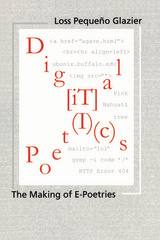 Digital Poetics: Hypertext, Visual-Kinetic Text and Writing in Programmable Media
Loss Pequeño Glazier
University of Alabama Press, 2001 Glazier investigates the ways in which computer technology has influenced and transformed the writing and dissemination of poetry
In Digital Poetics, Loss Pequeño Glazier argues that the increase in computer technology and accessibility, specifically the World Wide Web, has created a new and viable place for the writing and dissemination of poetry. Glazier’s work not only introduces the reader to the current state of electronic writing but also outlines the historical and technical contexts out of which electronic poetry has emerged and demonstrates some of the possibilities of the new medium. Glazier examines three principal forms of electronic textuality: hypertext, visual/kinetic text, and works in programmable media. He considers avant-garde poetics and its relationship to the on-line age, the relationship between web “pages” and book technology, and the way in which certain kinds of web constructions are in and of themselves a type of writing. With convincing alacrity, Glazier argues that the materiality of electronic writing has changed the idea of writing itself. He concludes that electronic space is the true home of poetry and, in the 20th century, has become the ultimate “space of poesis.” Digital Poetics will attract a readership of scholars and students interested in contemporary creative writing and the potential of electronic media for imaginative expression.
Digital Preservation Essentials
Christopher Prom
Society of American Archivists, 2016 Digital Preservation Essentials is part of the series Trends in Archives Practice. It includes two modules by Erin O'Meara and Kate Stratton:
Module 12: Preserving Digital Objects
Explores concepts of digital preservation in the archival context, focusing on standards and metadata required to make digital objects accessible and understandable over time.
Module 13: Digital Preservation Storage
Provides an introduction to digital storage best practices for long-term preservation, including terminology, hardware, and configurations.
As University of Illinois Preservation Librarian Kyle R. Rimkus notes in the introduction, "The successful archivist needs a grounding in the fundamental concepts of digital preservation, a command of its key terminology and practices, and an ability to build effective programs and practices. These modules provide an excellent point of entry."
Digital Protection for Power Systems
A.T. Johns
The Institution of Engineering and Technology, 1995 Digital protection is based on the use of computers in power line relaying. Since the late 1960s, digital devices and techniques have been applied to almost all new protection schemes. Today the technology is moving towards standardised hardware platforms; at the software level, however, there remains a huge variety in approaches and protection algorithms.
Digital Protection for Power Systems
Salman K. Salman
The Institution of Engineering and Technology, 2022 Electric power systems have become much more complex in the past years, due to the integration of distributed generation including renewable energy sources and the challenges caused by intermittency of renewables. This complexity makes power systems potentially more vulnerable. However, use of computer-based protection methods (i.e., digital protection relays) supported by communication technology have helped in protecting electrical networks from faults to which they are subjected to.
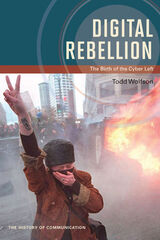 Digital Rebellion: The Birth of the Cyber Left
Todd Wolfson
University of Illinois Press, 2014 Digital Rebellion examines the impact of new media and communication technologies on the spatial, strategic, and organizational fabric of social movements. Todd Wolfson reveals how aspects of the mid-1990s Zapatistas movement--network organizational structure, participatory democratic governance, and the use of communication tools as a binding agent--became essential parts of Indymedia and other Cyber Left organizations. From there he uses oral interviews and other rich ethnographic data to chart the media-based think tanks and experiments that continued the Cyber Left's evolution through the Independent Media Center's birth around the 1999 WTO protests in Seattle. Melding virtual and traditional ethnographic practice to explore the Cyber Left's cultural logic, Wolfson maps the social, spatial and communicative structure of the Indymedia network and details its operations on the local, national and global level. He looks at the participatory democracy that governs global social movements and the ways democracy and decentralization have come into tension, and how "the switchboard of struggle" conducts stories from the hyper-local and disperses them worldwide. As he shows, understanding the intersection of Indymedia and the Global Social Justice Movement illuminates their foundational role in the Occupy struggle and other emergent movements that have re-energized radical politics.
 Digital Repertoires: Embedded and Everyday Technologies in Later Life
Edited by Riitta Hänninen, Sakari Taipale, and Laura Haapio-Kirk
University College London, 2025 Uncovers the diverse and unexpected ways aging populations engage with technology.
As digital technologies further embed themselves in everyday life, how do older adults navigate and adapt to these tools? Digital Repertoires introduces the concept of the “digital repertoire” to investigate the evolving ways older people engage with technology across cultural and social contexts. Based on global research, this work confronts typical stereotypes of aging and digital exclusion and emphasizes the agency, creativity, and new challenges older adults experience in their digital interactions.
Including voices of scholars from anthropology, sociology, gerontology, communication studies, and design, this book offers theoretical depth as well as empirical breadth, making it essential reading for researchers, practitioners, and policymakers working at the intersection of aging and technology.
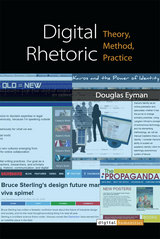 Digital Rhetoric: Theory, Method, Practice
Douglas Eyman
University of Michigan Press, 2015 What is “digital rhetoric”? This book aims to answer that question by looking at a number of interrelated histories, as well as evaluating a wide range of methods and practices from fields in the humanities, social sciences, and information sciences to determine what might constitute the work and the world of digital rhetoric. The advent of digital and networked communication technologies prompts renewed interest in basic questions such as What counts as a text? and Can traditional rhetoric operate in digital spheres or will it need to be revised? Or will we need to invent new rhetorical practices altogether? Through examples and consideration of digital rhetoric theories, methods for both researching and making in digital rhetoric fields, and examples of digital rhetoric pedagogy, scholarship, and public performance, this book delivers a broad overview of digital rhetoric. In addition, Douglas Eyman provides historical context by investigating the histories and boundaries that arise from mapping this emerging field and by focusing on the theories that have been taken up and revised by digital rhetoric scholars and practitioners. Both traditional and new methods are examined for the tools they provide that can be used to both study digital rhetoric and to potentially make new forms that draw on digital rhetoric for their persuasive power.
 Digital Rights at the Periphery: Making Brazil's Marco Civil
Guy T. Hoskins
University of Illinois Press, 2025 Signed into law in 2014, the Marco Civil da Internet (Brazilian Civil Rights Framework for the Internet) appeared to offer pioneering legislation for a digital bill of rights that addressed issues like network neutrality and privacy. Guy T. Hoskins chronicles the Marco Civil’s development and its failure to confront the greatest concentration of power in the digital age: informational capitalism. Combining interviews with discourse and political-economic analysis, Hoskins reveals why the legislation fell short while examining the implications of its emergence in Brazil, which remains on the margins of the global system of informational capitalism. Hoskins places collectivist and public service principles at the core of any framework’s effectiveness. He also shows why we must create systems sensitive to the sociocultural and political-economic contexts that will shape digital rights and their usefulness. Compelling and contrarian, Digital Rights at the Periphery looks at communications policy and internet governance in the Global South and the lessons they provide for the rest of the world.
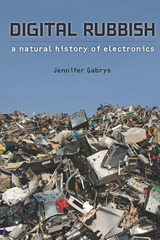 Digital Rubbish: A Natural History of Electronics
Jennifer Gabrys
University of Michigan Press, 2013 This is a study of the material life of information and its devices; of electronic waste in its physical and electronic incarnations; a cultural and material mapping of the spaces where electronics in the form of both hardware and information accumulate, break down, or are stowed away. Electronic waste occurs not just in the form of discarded computers but also as a scatter of information devices, software, and systems that are rendered obsolete and fail. Where other studies have addressed "digital" technology through a focus on its immateriality or virtual qualities, Gabrys traces the material, spatial, cultural, and political infrastructures that enable the emergence and dissolution of these technologies. In the course of her book, she explores five interrelated "spaces" where electronics fall apart: from Silicon Valley to Nasdaq, from containers bound for China to museums and archives that preserve obsolete electronics as cultural artifacts, to the landfill as material repository. All together, these sites stack up into a sedimentary record that forms the "natural history" of this study. Digital Rubbish: A Natural History of Electronics describes the materiality of electronics from a unique perspective, examining the multiple forms of waste that electronics create as evidence of the resources, labor, and imaginaries that are bundled into these machines. By drawing on the material analysis developed by Walter Benjamin, this natural history method allows for an inquiry into electronics that focuses neither on technological progression nor on great inventors but rather considers the ways in which electronic technologies fail and decay. Ranging across studies of media and technology, as well as environments, geography, and design, Jennifer Gabrys pulls together the far-reaching material and cultural processes that enable the making and breaking of these technologies. Jennifer Gabrys is Senior Lecturer in Design and Convener of the Masters in Design and Environment in the Department of Design, Goldsmiths, University of London. Jacket image: Computer dump ©iStockphoto/Lya_Cattel. digitalculturebooks is an imprint of the University of Michigan Press and the Scholarly Publishing Office of the University of Michigan Library dedicated to publishing innovative and accessible work exploring new media and their impact on society, culture, and scholarly communication. Visit the website at www.digitalculture.org.
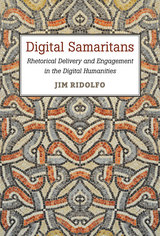 Digital Samaritans: Rhetorical Delivery and Engagement in the Digital Humanities
Jim Ridolfo
University of Michigan Press, 2015 Digital Samaritans explores rhetorical delivery and cultural sovereignty in the digital humanities. The exigence for the book is rooted in a practical digital humanities project based on the digitization of manuscripts in diaspora for the Samaritan community, the smallest religious/ethnic group of 770 Samaritans split between Mount Gerizim in the Palestinian Authority and in Holon, Israel. Based on interviews with members of the Samaritan community and archival research, Digital Samaritans explores what some Samaritans want from their diaspora of manuscripts, and how their rhetorical goals and objectives relate to the contemporary existential and rhetorical situation of the Samaritans as a living, breathing people. How does the circulation of Samaritan manuscripts, especially in digital environments, relate to their rhetorical circumstances and future goals and objectives to communicate their unique cultural history and religious identity to their neighbors and the world? Digital Samaritans takes up these questions and more as it presents a case for collaboration and engaged scholarship situated at the intersection of rhetorical studies and the digital humanities.
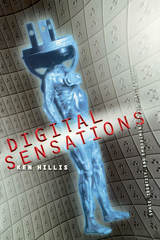 Digital Sensations: Space, Identity, And Embodiment In Virtual Reality
Ken Hillis
University of Minnesota Press, 1999 Considers the cultural and philosophical assumptions underlying virtual reality, and how the technology affects the real world. Virtual reality is in the news and in the movies, on TV and in the air. Why is the technology-or the idea—so prevalent precisely now? What does it mean—what does it do—to us? Digital Sensations looks closely at how the “lived” world is affected by representational forms generated by communication technologies, especially digital and optical virtual technologies. Virtual reality, or VR, is a technological reproduction of the process of perceiving the real, yet that process is filtered through the social realities and embedded cultural assumptions about human bodies and space held by the technology’s creators. Through critical histories of the technologies of vision, light, space, and embodiment, Ken Hillis traces the often contradictory intellectual and metaphysical impulses behind the Western transcendental wish to achieve an ever more perfect copy of the real. He advocates that current and proposed virtual technologies reflect a Western desire to escape the body. Because virtual technologies are new, these histories also address unintended and underconsidered consequences flowing from their rapid dissemination, such as commodifications and the alienation of new forms of surveillance. Exploring topics from VR and other, earlier visual technologies, Hillis’s penetrating perspective on the cultural power of place and space broadens our view of the interplay between social relations and technology.
Digital Signal Filtering, Analysis and Restoration
Jiří Jan
The Institution of Engineering and Technology, 2000 The processing and analysis of signals and data is today a fast-growing and crucial activity in a diverse range of fields, not only in communications and image technology itself but in almost every other research area in science. The purpose of this book is to explain some of the theoretical concepts that underly the methods now in common use. The author starts from the assumption that some knowledge of the basic principles should be in the toolkit of every engineer or scientist working with signals or data.
 Digital Signal Processing: Principles, devices and applications
N.B. Jones
The Institution of Engineering and Technology, 1990 Recent progress in the design and production of digital signal processing (DSP) devices has provided significant new opportunities to workers in the already extensive field of signal processing. It is now possible to contemplate the use of DSP techniques in cost-sensitive wide bandwidth applications, thereby making more effective use of the large body of available signal processing knowledge. Digital signal processing, long the province of telecommunications is, in both research and applications contexts, of growing importance in fields of medical signal analysis, industrial control (particularly robotics), in the analysis and synthesis of speech and in both audio and video entertainment systems. The growing demand for engineering skills in these areas has led to the writing of this book and the presentation of the material of the book at an lEE-sponsored Vacation School at the University of Leicester.
Digital Sociologies
Edited by Jessie Daniels, Karen Gregory, and Tressie McMillan Cottom
Bristol University Press, 2016 This handbook offers a much-needed overview of the rapidly growing field of digital sociology. Rooted in a critical understanding of inequality as foundational to digital sociology, it connects digital media technologies to traditional areas of study in sociology, such as labor, culture, education, race, class, and gender. It covers a wide variety of topics, including web analytics, wearable technologies, social media analysis, and digital labor. The result is a benchmark volume that places the digital squarely at the forefront of contemporary investigations of the social.
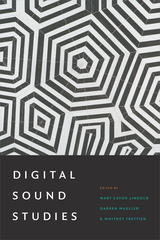 Digital Sound Studies
Mary Caton Lingold, Darren Mueller, and Whitney Trettien, editors
Duke University Press, 2018 The digital turn has created new opportunities for scholars across disciplines to use sound in their scholarship. This volume’s contributors provide a blueprint for making sound central to research, teaching, and dissemination. They show how digital sound studies has the potential to transform silent, text-centric cultures of communication in the humanities into rich, multisensory experiences that are more inclusive of diverse knowledges and abilities. Drawing on multiple disciplines—including rhetoric and composition, performance studies, anthropology, history, and information science—the contributors to Digital Sound Studies bring digital humanities and sound studies into productive conversation while probing the assumptions behind the use of digital tools and technologies in academic life. In so doing, they explore how sonic experience might transform our scholarly networks, writing processes, research methodologies, pedagogies, and knowledges of the archive. As they demonstrate, incorporating sound into scholarship is thus not only feasible but urgently necessary.
Contributors. Myron M. Beasley, Regina N. Bradley, Steph Ceraso, Tanya Clement, Rebecca Dowd Geoffroy-Schwinden, W. F. Umi Hsu, Michael J. Kramer, Mary Caton Lingold, Darren Mueller, Richard Cullen Rath, Liana M. Silva, Jonathan Sterne, Jennifer Stoever, Jonathan W. Stone, Joanna Swafford, Aaron Trammell, Whitney Trettien
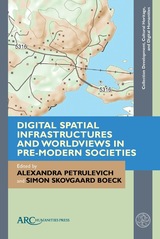 Digital Spatial Infrastructures and Worldviews in Pre-Modern Societies
Alexandra Petrulevich
Arc Humanities Press, 2023
The study of medieval and early modern geographic space, literary cartography, and spatial thinking at a time of rapid digitization in the Humanities offers new ways to investigate spatial knowledge and world perceptions in pre-modern societies. Digitization of cultural heritage collections, open source databases, and interactive resources utilizing a rich variety of source materials—place names, early modern cadastral maps, medieval literature and art, Viking Age and medieval runic inscriptions—provides opportunities to re-think traditional lines of research on spatiality and worldviews, encourage innovation in methodology, and engage critically with digital outcomes.
In this book, Nordic scholars of philology, onomastics, history, geography, literary studies, and digital humanities examine multiple aspects of ten large- and small-scale digital spatial infrastructures from the early stages of development to the practical applications of digital tools for studying spatial thinking and knowledge in pre-modern sources and societies.
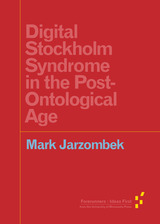 Digital Stockholm Syndrome in the Post-Ontological Age
Mark Jarzombek
University of Minnesota Press, 2016 Once, humans were what they believed. Now, the modern person is determined by data exhaust—an invisible anthropocentric ether of ones and zeros that is a product of our digitally monitored age. Author Mark Jarzombek argues that the world has become redesigned to fuse the algorithmic with the ontological, and the discussion of ontology must be updated to rethink the question of Being. In Digital Stockholm Syndrome in the Post-Ontological Age, Jarzombek provocatively studies the new interrelationship between human and algorithm.
Forerunners is a thought-in-process series of breakthrough digital works. Written between fresh ideas and finished books, Forerunners draws on scholarly work initiated in notable blogs, social media, conference plenaries, journal articles, and the synergy of academic exchange. This is gray literature publishing: where intense thinking, change, and speculation take place in scholarship.
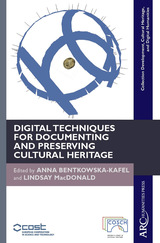 Digital Techniques for Documenting and Preserving Cultural Heritage
Anna Bentkowska-Kafel
Arc Humanities Press, 2017 In this unique collection the authors present a wide range of interdisciplinary methods to study, document, and conserve material cultural heritage. The methods used serve as exemplars of best practice with a wide variety of cultural heritage objectshaving been recorded, examined, and visualised. The objects range in date, scale, materials, and state of preservation and sopose different research questions and challenges for digitization, conservation, and ontological representation of knowledge. Heritage science and specialist digital technologies are presented in a way approachable to non-scientists, while a separate technical section provides details of methods and techniques, alongside examples of notable applications of spatial and spectral documentation of material cultural heritage, with selected literature and identification of future research. This book is an outcome of interdisciplinary research and debates conducted by the participants of the COST Action TD1201, Colour and Space in Cultural Heritage, 2012–16 and is an Open Access publication available under a CC BY-NC-ND licence.
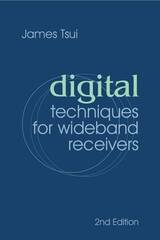 Digital Techniques for Wideband Receivers
James B. Tsui
The Institution of Engineering and Technology, 2004 This newly updated, second edition of Digital Techniques for Wideband Receivers is a current, comprehensive design guide for your digital processing work with today's complex receiver systems. Brand new material brings you up-to-date with the latest information on wideband electronic warfare receivers, the ADC testing procedure, frequency channelization and decoding schemes, and the operation of monobit receivers. The book shows you how to effectively evaluate ADCs, offers insight on building electronic warfare receivers, and describes zero crossing techniques that are critical to new receiver design. From fundamental concepts and procedures to recent technology advances in digital receivers, you get practical solutions to all your demanding wideband receiver problems. This hands-on reference is packed with 1,103 equations and 315 illustrations that support key topics covered throughout the book.
Digital Techniques for Wideband Receivers
James Tsui
The Institution of Engineering and Technology, 2016 This fully revised and updated third edition of Digital Techniques for Wideband Receivers offers a comprehensive design guide for digital processing work with today's complex receiver systems.
Digital Technologies for Solar Photovoltaic Systems: From general to rural and remote installations
Saad Motahhir
The Institution of Engineering and Technology, 2022 The rising share of photovoltaic (PV) energy requires sophisticated digital techniques for control, monitoring and integration with the grid. In remote areas, where no trained personnel might be nearby to intervene, such technologies are vital to ensure reliability and power quality, and to harness the solar potential of these locations. Moreover, tracking is necessary for moveable systems. Digital technologies can be used to enable and augment the use of PV energy in the grid, as well as for desalination, water pumping and hydrolysis.
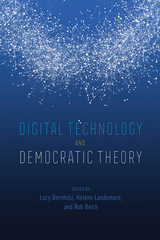 Digital Technology and Democratic Theory
Edited by Lucy Bernholz, Hélène Landemore, and Rob Reich
University of Chicago Press, 2021 One of the most far-reaching transformations in our era is the wave of digital technologies rolling over—and upending—nearly every aspect of life. Work and leisure, family and friendship, community and citizenship have all been modified by now-ubiquitous digital tools and platforms. Digital Technology and Democratic Theory looks closely at one significant facet of our rapidly evolving digital lives: how technology is radically changing our lives as citizens and participants in democratic governments.
To understand these transformations, this book brings together contributions by scholars from multiple disciplines to wrestle with the question of how digital technologies shape, reshape, and affect fundamental questions about democracy and democratic theory. As expectations have whiplashed—from Twitter optimism in the wake of the Arab Spring to Facebook pessimism in the wake of the 2016 US election—the time is ripe for a more sober and long-term assessment. How should we take stock of digital technologies and their promise and peril for reshaping democratic societies and institutions? To answer, this volume broaches the most pressing technological changes and issues facing democracy as a philosophy and an institution.
Digital Television Fundamentals
Stefan Mozar
The Institution of Engineering and Technology, 2024 Digital television (DTV) is the transmission of audio and video data by digitally processed and multiplexed signals compared to analog and channel separated signals used by analog television. DTV represents the most significant evolution in television technology since color television in the 1950s. The transition from analog to digital broadcasting began around 2006 with many countries at various stages of adaptation. DTV provides new features that analog television cannot support including the need for less bandwidth and higher image resolution, transmission via several channels including terrestrial transmitters using antennas, digital cables and satellites, microwaves and the internet.
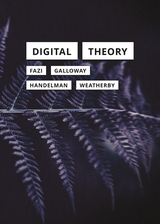 Digital Theory
M. Beatrice Fazi
University of Minnesota Press, 2025 Proposes a powerful new theoretical approach to the concept of the digital
Digital Theory argues that the digital is theoretical and should be understood not uniquely in terms of consumer electronics but rather more broadly as a form of mediation using discrete units. Building on this definition, the three essays in this volume explore digitality’s relation to thinking, signs, and difference. M. Beatrice Fazi begins the discussion by way of three propositions on the ontological reach and epistemological scope of digital theory. Alexander R. Galloway then defines the necessary conditions for any symbolic order of the digital type, specifying a series of ten simple mathemes. Matthew Handelman and Leif Weatherby conclude by characterizing digital theory through the dialectical relation between quality and quantity. Taken together, these works expound productively and provocatively on the digital’s far-reaching theoretical potential. Retail e-book files for this title are screen-reader friendly with image accompanied by short alt text and/or extended description.
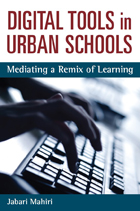 Digital Tools in Urban Schools: Mediating a Remix of Learning
Jabari Mahiri
University of Michigan Press, 2011 "Today there is massive interest in how digital tools and popular culture are transforming learning out of school and lots of dismay at how digitally lost our schools are. Jabari Mahiri works his usual magic and here shows us how to cross this divide in a solidly grounded and beautifully written book."
---James Paul Gee, Fulton Presidential Professor of Literacy Studies, Arizona State University "Digital Tools in Urban Schools is a profoundly sobering yet inspiring depiction of the potential for committed educators to change the lives of urban youth, with the assistance of a new set of technical capabilities."
---Mimi Ito, Professor in Residence and MacArthur Foundation Chair in Digital Media and Learning, Departments of Informatics and Anthropology, University of California, Irvine "An uplifting book that addresses a critical gap in existing literature by providing rich and important insights into ways teachers, administrators, and members of the wider community can work together with students previously alienated---even excluded---from formal education to enhance classroom learning with appropriate digital tools and achieve inspiring results under challenging circumstances."
---Colin Lankshear, James Cook University, and Michele Knobel, Montclair State University Digital Tools in Urban Schools demonstrates significant ways in which high school teachers in the complex educational setting of an urban public high school in northern California extended their own professional learning to revitalize learning in their classrooms. Through a novel research collaboration between a university and this public school, these teachers were supported and guided in developing the skills necessary to take greater advantage of new media and new information sources to increase student learning while making connections to their relevant experiences and interests. Jabari Mahiri draws on extensive qualitative data---including blogs, podcasts, and other digital media---to document, describe, and analyze how the learning of both students and teachers was dramatically transformed as they utilized digital media in their classrooms. Digital Tools in Urban Schools will interest instructional leaders and participants in teacher preparation and professional development programs, education and social science researchers and scholars, graduate and undergraduate programs and classes emphasizing literacy and learning, and those focused on urban education issues and conditions.
The Digital Twin Handbook: Challenges, opportunities and future research directions
Dhaval Thakker
The Institution of Engineering and Technology, 2025 A digital twin (DT) is a digital representation of a real-world physical product, system, or process. It is indistinguishable from its physical counterpart and used for simulation, integration, testing, monitoring and maintenance, often in real-time and in synchronization with the physical system. Digital twins offer the ability to gain a deep insight into the operating principles of any services, the interactions between different parts of the services and the behavioural aspects in a way that can be interactive and actionable for users and decision-makers.
Digital Twin Technologies for Healthcare 4.0
Rajesh Kumar Dhanaraj
The Institution of Engineering and Technology, 2022 In healthcare, a digital twin is a digital representation of a patient or healthcare system using integrated simulations and service data. The digital twin tracks a patient's records, crosschecks them against registered patterns and analyses any diseases or contra indications. The digital twin uses adaptive analytics and algorithms to produce accurate prognoses and suggest appropriate interventions. A digital twin can run various medical scenarios before treatment is initiated on the patient, thus increasing patient safety as well as providing the most appropriate treatments to meet the patient's requirements.
Digital Twins for 6G: Fundamental theory, technology and applications
Hamed Ahmadi
The Institution of Engineering and Technology, 2024 Digital twin (DT) technology is a real-time evolving digital duplicate of a physical object or process that contains all its history. It is enabled by massive real-time multi-source data collection and analysis. While 6G is considered as an enabler of digital twins, DT can also be a facilitator for integrating AI and 6G towards reliable, pervasive and efficient intelligent technologies.
Digital Typography
Donald E. Knuth
CSLI, 1998 In this collection, the second in the series, Knuth explores the relationship between computers and typography. The present volume, in the words of the author, is a legacy to all the work he has done on typography. When he thought he would take a few years' leave from his main work on the art of computer programming, as is well known, the short typographic detour lasted more than a decade. When type designers, punch cutters, typographers, book historians, and scholars visited the University during this period, it gave to Stanford what some consider to be its golden age of digital typography. By the author's own admission, the present work is one of the most difficult books that he has prepared. This is truly a work that only Knuth himself could have produced.
Digital Visual Culture: Theory and Practice
Edited by Anna Bentkowska-Kafel, Trish Cashen, Hazel Gardiner
Intellect Books, 2009 Digital Visual Culture presents the latest research into the relationship between theory and practice across digital media and technology in the visual arts and investigates the challenges of contemporary research and art curation, particularly in regard to new media artworks. The contributors to this volume discuss the impact of technological advances on visual art and the new art practices that are developing as a result. Many aspects of new interdisciplinary and collaborative practices are considered, such as net art and global locative environments, , and installations that are themselves performance, or games that often take place simultaneously online and in reality. Digital Visual Culture is an important addition to the ongoing discussion surrounding postmodern art practice in art and digital media.
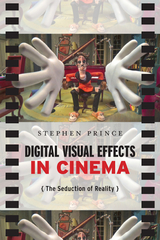 Digital Visual Effects in Cinema: The Seduction of Reality
Prince, Stephen
Rutgers University Press, 2012 Avatar. Inception. Jurassic Park. Lord of the Rings. Ratatouille. Not only are these some of the highest-grossing films of all time, they are also prime examples of how digital visual effects have transformed Hollywood filmmaking. Some critics, however, fear that this digital revolution marks a radical break with cinematic tradition, heralding the death of serious realistic movies in favor of computer-generated pure spectacle.
Digital Visual Effects in Cinema counters this alarmist reading, by showing how digital effects–driven films should be understood as a continuation of the narrative and stylistic traditions that have defined American cinema for decades. Stephen Prince argues for an understanding of digital technologies as an expanded toolbox, available to enhance both realist films and cinematic fantasies. He offers a detailed exploration of each of these tools, from lighting technologies to image capture to stereoscopic 3D. Integrating aesthetic, historical, and theoretical analyses of digital visual effects, Digital Visual Effects in Cinema is an essential guide for understanding movie-making today.
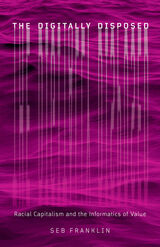 The Digitally Disposed: Racial Capitalism and the Informatics of Value
Seb Franklin
University of Minnesota Press, 2021 Locates the deep history of digitality in the development of racial capitalism
Seb Franklin sets out a media theory of racial capitalism to examine digitality’s racial-capitalist foundations. The Digitally Disposed shows how the promises of boundless connection, flexibility, and prosperity that are often associated with digital technologies are grounded in racialized histories of dispossession and exploitation. Reading archival and published material from the cybernetic sciences alongside nineteenth-century accounts of intellectual labor, twentieth-century sociometric experiments, and a range of literary and visual works, The Digitally Disposed locates the deep history of digitality in the development of racial capitalism. Franklin makes the groundbreaking argument that capital’s apparently spontaneous synthesis of so-called free individuals into productive circuits represents an “informatics of value.” On the one hand, understanding value as an informatic relation helps to explain why capital was able to graft so seamlessly with digitality at a moment in which it required more granular and distributed control over labor—the moment that is often glossed as the age of logistics. On the other hand, because the informatics of value sort populations into positions of higher and lower capacity, value, and status, understanding their relationship to digitality requires that we see the digital as racialized and gendered in pervasive ways. Ultimately, The Digitally Disposed questions the universalizing assumptions that are maintained, remade, and intensified by today’s dominant digital technologies. Vital and far-reaching, The Digitally Disposed reshapes such fundamental concepts as cybernetics, informatics, and digitality.
Digitally Enhanced Mixed Signal Systems
Chadi Jabbour
The Institution of Engineering and Technology, 2019 Digitally enhanced analog and mixed signal techniques are increasingly important to current and future circuit and system design. This book discusses how digital enhancement can be used to address key challenges relevant to analog components in terms of shrinking CMOS technology, increasing user demand for higher flexibility and data traffic in communications networks, and the drive to reduce power consumption.
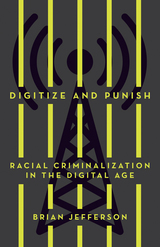 Digitize and Punish: Racial Criminalization in the Digital Age
Brian Jefferson
University of Minnesota Press, 2020 Tracing the rise of digital computing in policing and punishment and its harmful impact on criminalized communities of color
The U.S. Bureau of Justice Statistics estimates that law enforcement agencies have access to more than 100 million names stored in criminal history databases. In some cities, 80 percent of the black male population is registered in these databases. Digitize and Punish explores the long history of digital computing and criminal justice, revealing how big tech, computer scientists, university researchers, and state actors have digitized carceral governance over the past forty years—with devastating impact on poor communities of color. Providing a comprehensive study of the use of digital technology in American criminal justice, Brian Jefferson shows how the technology has expanded the wars on crime and drugs, enabling our current state of mass incarceration and further entrenching the nation’s racialized policing and punishment. After examining how the criminal justice system conceptualized the benefits of computers to surveil criminalized populations, Jefferson focuses on New York City and Chicago to provide a grounded account of the deployment of digital computing in urban police departments. By highlighting the intersection of policing and punishment with big data and web technology—resulting in the development of the criminal justice system’s latest tool, crime data centers—Digitize and Punish makes clear the extent to which digital technologies have transformed and intensified the nature of carceral power.
Digitizing Medieval Manuscripts: The St. Chad Gospels, Materiality, Recoveries, and Representation in 2D & 3D
Bill Endres
Arc Humanities Press, 2023 What does it mean to digitize a medieval manuscript? This book examines this question by exploring a range of advanced imaging technologies. The author focuses on the relationship between digital technologies and the complex materiality of manuscripts and the human bodies that engage them.The chapters explore imaging technologies, interfaces to present digital surrogates, and limitations to and enhancements through the digital, plus historical photographs. Essential reading for all those involved in manuscript digitization projects in both scholarly and cultural heritage contexts.
 Digitizing Race: Visual Cultures of the Internet
Lisa Nakamura
University of Minnesota Press, 2007 In the nineties, neoliberalism simultaneously provided the context for the Internet’s rapid uptake in the United States and discouraged public conversations about racial politics. At the same time many scholars lauded the widespread use of text-driven interfaces as a solution to the problem of racial intolerance. Today’s online world is witnessing text-driven interfaces such as e-mail and instant messaging giving way to far more visually intensive and commercially driven media forms that not only reveal but showcase people’s racial, ethnic, and gender identity. Lisa Nakamura, a leading scholar in the examination of race in digital media, uses case studies of popular yet rarely examined uses of the Internet such as pregnancy Web sites, instant messaging, and online petitions and quizzes to look at the emergence of race-, ethnic-, and gender-identified visual cultures. While popular media such as Hollywood cinema continue to depict nonwhite nonmales as passive audiences or consumers of digital media rather than as producers, Nakamura argues the contrary—with examples ranging from Jennifer Lopez music videos; films including the Matrix trilogy, Gattaca, and Minority Report; and online joke sites—that users of color and women use the Internet to vigorously articulate their own types of virtual community, avatar bodies, and racial politics. Lisa Nakamura is associate professor of speech communication and Asian American studies at the University of Illinois, Urbana-Champaign. She is the author of Cybertypes: Race, Ethnicity, and Identity on the Internet and coeditor, with Beth Kolko and Gilbert Rodman, of Race in Cyberspace.
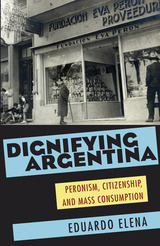 Dignifying Argentina: Peronism, Citizenship, and Mass Consumption
Eduardo Elena
University of Pittsburgh Press, 2011
During the mid-twentieth century, Latin American countries witnessed unprecedented struggles over the terms of national sovereignty, civic participation, and social justice. Nowhere was this more visible than in Peronist Argentina (1946–1955), where Juan and Eva Perón led the region’s largest populist movement in pursuit of new political hopes and material desires. Eduardo Elena considers this transformative moment from a fresh perspective by exploring the intersection of populism and mass consumption. He argues that Peronist actors redefined national citizenship around expansive promises of a vida digna (dignified life), which encompassed not only the satisfaction of basic wants, but also the integration of working Argentines into a modern consumer society. From the mid-1940s onward, the state moved to boost purchasing power and impose discipline on the marketplace, all while broadcasting images of a contented populace.
Drawing on documents such as the correspondence between Peronist sympathizers and authorities, Elena sheds light on the contest over the dignified life. He shows how the consumer aspirations of citizens overlapped with Peronist paradigms of state-led development, but not without generating great friction among allies and opposition from diverse sectors of society. Consumer practices encouraged intense public scrutiny of class and gender comportment, and everyday objects became freighted with new cultural meaning. By providing important insights on why Peronism struck such a powerful chord, Dignifying Argentina situates Latin America within the broader history of citizenship and consumption at mid-century, and provides innovative ways to understand the politics of redistribution in the region today.
 Dignity and Decadence: Victorian Art and the Classical Inheritance
Richard Jenkyns
Harvard University Press, 1992 The starting point for Richard Jenkyns’ latest work is his contention that the Victorian age, which we think of as the great age of Gothic, was so shot through with the influence of the classical past that we should instead think of Victorian art and architecture as the continuing flow of two stylistic streams—the Gothic and the classical, side by side. In advancing his argument Jenkyns turns our accepted notions of the Victorians upside down, presenting Ruskin as an admirer of Greek statuary, the Houses of Parliament as a classical rather than a Gothic composition, and Thomas Woolner, the only sculptor among the original Pre–Raphaelite brotherhood, as a neo–Hellenic carver and poet.
Jenkyns moves effortlessly between the general and the particular and is refreshingly unafraid to make judgments. Here are some of the best descriptions of Victorian painting, sculpture, and architecture to have appeared in recent years. From the very gradual changes throughout the paintings of Leighton and Alma–Tadema, to the operettas of Gilber Pater, and even the advertisements for Beecham's pills, Jenkyns shows how what had been merely eclectic became a distinctive fin-de-siècle style and eventually began to point the way for Modernism.
These are the grand themes, presented by a masterly guide. Above all Jenkyns is entertaining: Dignity and Decadence is one of the most illuminating and enjoyable books about the Victorians yet to appear.
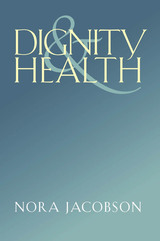 Dignity and Health
Nora Jacobson
Vanderbilt University Press, 2012 In these hard times of global financial peril and growing social inequality, injuries to dignity are pervasive. "Indignity has many faces," one man told Nora Jacobson as she conducted interviews for this book. Its expressions range from rudeness, indifference, and condescension to objectification, discrimination, and exploitation. Yet dignity can also be promoted. Another man described it as "common respect," suggesting dignity's ordinariness, and the ways we can create and share it through practices like courtesy, leveling, and contribution.
Dignity and Health examines the processes and structures of dignity violation and promotion, traces their consequences for individual and collective health, and uses the model developed to imagine how we might reform our systems of health and social care.
With its focus on the dignity experiences of those often excluded from the mainstream--people who are poor, or homeless, or dealing with mental health problems--as well as on vulnerabilities like age or sickness or unemployment that threaten to make us all feel "less than," Dignity and Health recognizes dignity as a moral matter embedded in the choices we make every day.
 Dignity: Its History and Meaning
Michael Rosen
Harvard University Press, 2012 Dignity plays a central role in current thinking about law and human rights, but there is sharp disagreement about its meaning. Combining conceptual precision with a broad historical background, Michael Rosen puts these controversies in context and offers a novel, constructive proposal.
“Penetrating and sprightly…Rosen rightly emphasizes the centrality of Catholicism in the modern history of human dignity. His command of the history is impressive…Rosen is a wonderful guide to the recent German constitutional thinking about human dignity…[Rosen] is in general an urbane and witty companion, achieving his aim of accessibly written philosophy.”
—Samuel Moyn, The Nation
“[An] elegant, interesting and lucid exploration of the concept of dignity...Drawing on classical, liberal and Catholic traditions, Rosen hopes to rehabilitate dignity to its rightful place near the centre of moral thought...Rosen's admirable book deserves wide attention from political theorists, jurisprudes and political philosophers.”
—Simon Blackburn, Times Higher Education
“Dignity deserves to be widely read, not only for its intrinsic interest, but also as a corrective to the habit of discussing such topics in abstraction from their social context. Whether or not one agrees with Rosen's arguments, there can be no doubt he has widened our horizons.”
—Rae Langton, Times Literary Supplement
Dignity: Lower Income Women Tell of Their Lives and Struggles
Fran Leeper Buss
University of Michigan Press, 1985 Dignity brings together the stories of ten lower income American women whose backgrounds vary, but who share a struggle for survival and a quest for dignity in the face of hardship. Young or old, urban or rural, welfare recipient or union activist, each relates her life story with rich detail, poignant humor, and remarkable courage.
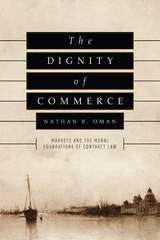 The Dignity of Commerce: Markets and the Moral Foundations of Contract Law
Nathan B. Oman
University of Chicago Press, 2016 Why should the law care about enforcing contracts? We tend to think of a contract as the legal embodiment of a moral obligation to keep a promise. When two parties enter into a transaction, they are obligated as moral beings to play out the transaction in the way that both parties expect. But this overlooks a broader understanding of the moral possibilities of the market. Just as Shakespeare’s Shylock can stand on his contract with Antonio not because Antonio is bound by honor but because the enforcement of contracts is seen as important to maintaining a kind of social arrangement, today’s contracts serve a fundamental role in the functioning of society.
With The Dignity of Commerce, Nathan B. Oman argues persuasively that well-functioning markets are morally desirable in and of themselves and thus a fit object of protection through contract law. Markets, Oman shows, are about more than simple economic efficiency. To do business with others, we must demonstrate understanding of and satisfy their needs. This ability to see the world from another’s point of view inculcates key virtues that support a liberal society. Markets also provide a context in which people can peacefully cooperate in the absence of political, religious, or ideological agreement. Finally, the material prosperity generated by commerce has an ameliorative effect on a host of social ills, from racial discrimination to environmental destruction.
The first book to place the moral status of the market at the center of the justification for contract law, The Dignity of Commerce is sure to elicit serious discussion about this central area of legal studies.
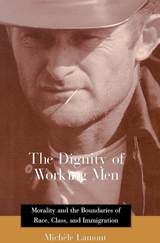 The Dignity of Working Men: Morality and the Boundaries of Race, Class, and Immigration
Michèle Lamont
Harvard University Press, 2000 Michèle Lamont takes us into the world inhabited by working-class men--the world as they understand it. Interviewing black and white working-class men who, because they are not college graduates, have limited access to high-paying jobs and other social benefits, she constructs a revealing portrait of how they see themselves and the rest of society.
Morality is at the center of these workers' worlds. They find their identity and self-worth in their ability to discipline themselves and conduct responsible but caring lives. These moral standards function as an alternative to economic definitions of success, offering them a way to maintain dignity in an out-of-reach American dreamland. But these standards also enable them to draw class boundaries toward the poor and, to a lesser extent, the upper half. Workers also draw rigid racial boundaries, with white workers placing emphasis on the "disciplined self" and blacks on the "caring self." Whites thereby often construe blacks as morally inferior because they are lazy, while blacks depict whites as domineering, uncaring, and overly disciplined.
This book also opens up a wider perspective by examining American workers in comparison with French workers, who take the poor as "part of us" and are far less critical of blacks than they are of upper-middle-class people and immigrants. By singling out different "moral offenders" in the two societies, workers reveal contrasting definitions of "cultural membership" that help us understand and challenge the forms of inequality found in both societies.
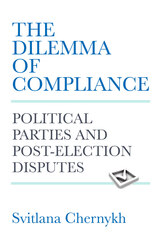 The Dilemma of Compliance: Political Parties and Post-Election Disputes
Svitlana Chernykh
University of Michigan Press, 2024 Over the past twenty years, the causes and consequences of post-election disputes have become one of the most compelling topics of research in political science. Between 2012 and 2022, political parties challenged the results of more than 25 percent of elections. When democratic transitions are dependent on the willingness of participants to accept defeat, political parties can undermine election-based democracy by rejecting the outcome. As the world enters the fourth decade since the start of the third wave of democratization, the question of whether election losers will comply or reject election outcomes is more and more pressing. The Dilemma of Compliance analyzes this phenomenon at the level of political parties, raising three important questions: Why do some political parties refuse to comply with election results? What determines the strategies they use to contest the outcomes? What consequences do post-election disputes have for the political parties that initiate them?
To answer these questions, this book draws on an original dataset of post-election responses encompassing over 300 political parties, which participated in 270 elections held in twenty-two countries of Eastern Europe and the former Soviet Union over a period of more than two decades. In doing so, it offers a new theoretical framework for studying electoral compliance in comparative perspective and advances research on democratic transition, democracy promotion, post-election protests, and party politics.
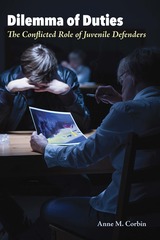 Dilemma of Duties: The Conflicted Role of Juvenile Defenders
Anne M. Corbin
Southern Illinois University Press, 2018 The role of a juvenile defender is riddled with conflict, and clients are uniquely challenging because of their lack of life experience and their underdeveloped decision-making abilities. In Dilemma of Duties, Anne M. Corbin examines the distinct function of defense counsel in juvenile courts, demonstrating the commonplace presence of role conflict and confusion, even among defenders in jurisdictions that clearly define their role. This study focuses on juvenile defense attorneys in North Carolina, where it is mandated that counselors advocate for their client’s wishes, even if they do not agree it is in the client’s best interest.
In Dilemma of Duties, Corbin outlines patterns of role conflict that defenders experience, details its impact on counselors and clients in the juvenile justice system, and addresses the powerful influence of the juvenile court culture and the lack of resources for defenders. Tasked with guiding these children, counselors frequently must contend with and manage their clients’ general distrust of adults as they attempt to serve as their voices to the court.
Understanding how juvenile defenders define their role and experience role conflict provides valuable insights into our juvenile justice system, especially its role in upholding due process rights. Such knowledge points to the importance of the training and practices of juvenile court functionaries and the efficacy, credibility, and legitimacy of the juvenile justice system itself.
 The Dilemma of Federal Mental Health Policy: Radical Reform or Incremental Change?
Grob, Gerald N
Rutgers University Press, 2006 Severe and persistent mental illnesses are among the most pressing health and social problems in contemporary America. Recent estimates suggest that more than three million people in the U.S. have disabling mental disorders. The direct and indirect costs of their care exceed 180 billion dollars nationwide each year. Effective treatments and services exist, but many such individuals do not have access to these services because of limitations in mental health and social policies.
For nearly two centuries Americans have grappled with the question of how to serve individuals with severe disorders. During the second half of the twentieth century, mental health policy advocates reacted against institutional care, claiming that community care and treatment would improve the lives of people with mental disorders. Once the exclusive province of state governments, the federal government moved into this policy arena after World War II. Policies ranged from those focused on mental disorders, to those that focused more broadly on health and social welfare.
In this book, Gerald N. Grob and Howard H. Goldman trace how an ever-changing coalition of mental health experts, patients' rights activists, and politicians envisioned this community-based system of psychiatric services. The authors show how policies shifted emphasis from radical reform to incremental change. Many have benefited from this shift, but many are left without the care they require.
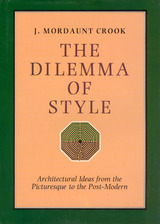 The Dilemma of Style: Architectural Ideas from the Picturesque to the Postmodern
J. Mordaunt Crook
University of Chicago Press, 1987 Is architecture in a state of crisis? Or are the critics simply in a state of confusion? Either way, the problems of architecture today are rooted in the history of architectural ideas. Those ideas—from the Picturesque to the Modern Movement; from the Neo-Classicism and the Gothic Revival to New Brutalism and Post-Modernism—form the basis of this original and highly readable book. Ranging widely over English architecture during the last two hundred years—Georgian, Victorian, Edwardian, Modern—The Dilemma of Style explores the way in which generations of architects and theorists have searched for a key to the conundrum of style. Richly illustrated and densely argued, with scores of quotations and hundreds of references, this is not another history of English architecture: it is almost an encyclopaedia of architectural ideas.
This challenging book confronts one of the central problems of architectural theory: the nature—and necessity—of style.
 Dilemmas and Connections: Selected Essays
Charles Taylor
Harvard University Press, 2014 “Charles Taylor is one of the finest thinkers we have. And by ‘we’ I mean every striving, puzzled, intellectually alert person on the planet…The wisdom and learning on display is staggering.” —Jonathan Wright, Catholic Herald
There are, always, more things in heaven and earth than are dreamt of in one’s philosophy—and in these essays Charles Taylor turns to those things not fully imagined or avenues not wholly explored in his epochal A Secular Age. Here Taylor talks in detail about thinkers who are his allies and interlocutors, such as Iris Murdoch, Alasdair MacIntyre, Robert Brandom, and Paul Celan. He offers major contributions to social theory, expanding on the issues of nationalism, democratic exclusionism, religious mobilizations, and modernity. And he delves even more deeply into themes taken up in A Secular Age: the continuity of religion from the past into the future; the nature of the secular; the folly of hoping to live by “reason alone”; and the perils of moralism. He also speculates on how irrationality emerges from the heart of rationality itself, and why violence breaks out again and again.
In A Secular Age, Taylor more evidently foregrounded his Catholic faith, and there are several essays here that further explore that faith. Overall, this is a hopeful book, showing how, while acknowledging the force of religion and the persistence of violence and folly, we nonetheless have the power to move forward once we have given up the brittle pretensions of a narrow rationalism.
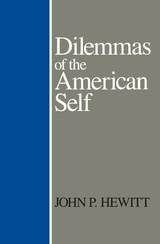 Dilemmas Of American Self
John P. Hewitt
Temple University Press, 1991 Charles Horton Cooley Award of the Society for the Study of Symbolic Interaction, 1990
"According to Hewitt, the essence of modernity is tension between community and society. This ambitious, sophisticated, and well-written book is a tonic for those who weary of simplistic sermons on the condition of American culture."
--Choice
This book explores stability and change in American social character and identity, and offers a theory about what it means to be an individual within contemporary American society. Skeptical of the widely-accepted thesis that the self, at least in America, has drastically changed, John P. Hewitt assumes that there is more historical continuity and that the culture is filled with internal contradictions. Combining the insights of social psychology, with those of writers who have offered critiques of the larger society and its influences on the individual, he revises our understanding of the person in American society.
Hewitt examines the theories of such authors as David Riesman, Allen Wheelis, Christopher Lasch, Erving Goffman, Carl Rogers, Ralph Turner, and others. He treats their emphasis on the decline of transformation of the self not as social theory to be tested, but as cultural text that reveals some of the main historical and contemporary features and fault lines of American culture.
"American culture is best characterized not as relentlessly individualistic or as lacking in the capacity to conceive of or discuss community, but as torn between individualism and communitarianism, thus creating serious felt difficulties of social adjustment and personal meaning." Proposing a symbolic interactionist theory of culture, Hewitt emphasizes inherent polarities of meaning and dilemmas of conduct that shape the experience of self: conformity versus rebellion, staying versus leaving, and dependence versus independence. He constructs a theory of identity that views personal identity and social identity as contending means for securing the continuity and integration of the self, and applies the theory to American society by depicting autonomous, exclusivist, and pragmatic strategies of self-construction.
"This theoretically sophisticated work is very ably organized and marked by superior scholarly and expository craftsmanship. It will be hailed, I believe, as an important contribution to symbolic interactionism and the sociology and social psychology of everyday life. Hewitt's treatment of self, identity, conformity, differentiation, community, and modernity is a fine example of creative scholarship."
--Charles H. Page, University of Massachusetts (Emeritus)
"Hewitt has set himself the ambitious task of providing a symbolic interactionist analysis of culture, society, and self, and has succeeded admirably in the effort. I found his rich description of cultural types to be especially insightful. It is no exaggeration to characterize this book as a landmark work in the development of symbolic interactions."
--Morris Rosenberg, University of Maryland-College Park
The Dilemmas of an Upright Man: Max Planck and the Fortunes of German Science, With a New Afterword
J. L. Heilbron
Harvard University Press, 2000 In this moving and eloquent portrait, John Heilbron describes how the founder of quantum theory rose to the pinnacle of German science. With great understanding, he shows how Max Planck suffered morally and intellectually as his lifelong habit of service to his country and to physics was confronted by the realities of World War I and the brutalities of the Third Reich.
In an afterword written for this edition, Heilbron weighs the recurring questions among historians and scientists about the costs to others, and to Planck himself, of the painful choices he faced in attempting to build an “ark” to carry science and scientists through the storms of Nazism.
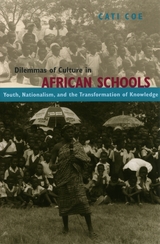 Dilemmas of Culture in African Schools: Youth, Nationalism, and the Transformation of Knowledge
Cati Coe
University of Chicago Press, 2005 In working to build a sense of nationhood, Ghana has focused on many social engineering projects, the most meaningful and fascinating of which has been the state's effort to create a national culture through its schools. As Cati Coe reveals in Dilemmas of Culture in African Schools, this effort has created an unusual paradox: while Ghana encourages its educators to teach about local cultural traditions, those traditions are transformed as they are taught in school classrooms. The state version of culture now taught by educators has become objectified and nationalized—vastly different from local traditions.
Coe identifies the state's limitations in teaching cultural knowledge and discusses how Ghanaians negotiate the tensions raised by the competing visions of modernity that nationalism and Christianity have created. She reveals how cultural curricula affect authority relations in local social organizations—between teachers and students, between Christians and national elite, and between children and elders—and raises several questions about educational processes, state-society relations, the production of knowledge, and the making of Ghana's citizenry.
Dilemmas of Democracy: Tocqueville and Modernization
Seymour Drescher
University of Pittsburgh Press, 1968 Alexis de Tocqueville has been extensively chronicled as a pioneer sociologist and political philosopher of democracy during the early nineteenth century. However, his writings on the problems of social and economic transitions to an industrial society have been largely overlooked. In this book, Seymour Drescher presents a thorough analysis of Tocqueville's concern for the lower classes of society, viewing his thoughts on slavery, poverty, criminality, and working class conditions, and their place in an evolving egalitarian society.
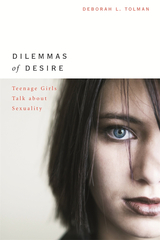 Dilemmas of Desire: Teenage Girls Talk about Sexuality
Deborah L. Tolman
Harvard University Press, 2005 Be sexy but not sexual. Don't be a prude but don't be a slut. These are the cultural messages that barrage teenage girls. In movies and magazines, in music and advice columns, girls are portrayed as the object or the victim of someone else's desire--but virtually never as someone with acceptable sexual feelings of her own. What teenage girls make of these contradictory messages, and what they make of their awakening sexuality--so distant from and yet so susceptible to cultural stereotypes--emerges for the first time in frank and complex fashion in Deborah Tolman's Dilemmas of Desire.
A unique look into the world of adolescent sexuality, this book offers an intimate and often disturbing, sometimes inspiring, picture of how teenage girls experience, understand, and respond to their sexual feelings, and of how society mediates, shapes, and distorts this experience. In extensive interviews, we listen as actual adolescent girls--both urban and suburban--speak candidly of their curiosity and confusion, their pleasure and disappointment, their fears, defiance, or capitulation in the face of a seemingly imperishable double standard that smiles upon burgeoning sexuality in boys yet frowns, even panics, at its equivalent in girls.
As a vivid evocation of girls negotiating some of the most vexing issues of adolescence, and as a thoughtful, richly informed examination of the dilemmas these girls face, this readable and revealing book begins the critical work of understanding the sexuality of young women in all its personal, social, and emotional significance.
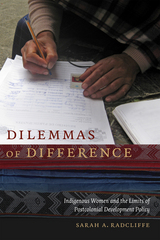 Dilemmas of Difference: Indigenous Women and the Limits of Postcolonial Development Policy
Sarah A. Radcliffe
Duke University Press, 2015 In Dilemmas of Difference Sarah A. Radcliffe explores the relationship of rural indigenous women in Ecuador to the development policies and actors that are ostensibly there to help ameliorate social and economic inequality. Radcliffe finds that development policies’s inability to recognize and reckon with the legacies of colonialism reinforces long-standing social hierarchies, thereby reproducing the very poverty and disempowerment they are there to solve. This ineffectiveness results from failures to acknowledge the local population's diversity and a lack of accounting for the complex intersections of gender, race, ethnicity, class, and geography. As a result, projects often fail to match beneficiaries' needs, certain groups are made invisible, and indigenous women become excluded from positions of authority. Drawing from a mix of ethnographic fieldwork and postcolonial and social theory, Radcliffe centers the perspectives of indigenous women to show how they craft practices and epistemologies that critique ineffective development methods, inform their political agendas, and shape their strategic interventions in public policy debates.
The Dilemmas of Dissidence in East-Central Europe: Citizen Intellectuals and Philosopher Kings
Barbara J. Falk
Central European University Press, 2003 Discusses one of the major currents leading to the fall of communism. Falk examines the intellectual dissident movements in Poland, Czechoslovakia and Hungary from the late 1960s through to 1989. In spite of its historic significance, no other comprehensive survey has appeared on the subject. In addition to the huge list of written sources from samizdat works to recent essays, Falks sources include interviews with many personalities of those events as well as videos and films (including Oscar winners).
 Dilemmas of Political Change in Mexico
Edited by Kevin J. Middlebrook
University of London Press, 2004 The victory by Vicente Fox Quesada in Mexico's July 2000 presidential election was a watershed in the country's political history. His triumph convincingly marked the consolidation of electoral democracy and, by ending seven decades of uninterrupted national rule by the "official" Institutional Revolutionary Party (PRI), symbolized a clear break with the political regime established following the 1910-1920 revolution. Nevertheless, many legacies of postrevolutionary authoritarianism persist, and Mexico's democratization process remains incomplete. The seventeen contributors to this volume assess Mexico's political dynamics at the turn of the century and the many pending challenges in the construction of a more fully democratic political order.
They examine: (1) changes affecting the party system, electoral institutions, and voting behavior; (2) the evolving role of the armed forces, organized labor, big business, and rural producers; (3) the new importance of civil society, the mass media, and cross-border social coalitions; (4) and key issues of political representation and governance, including executive-legislative relations, judicial performance, federalism, the constitutional rights of indigenous peoples, and the political role of Mexicans resident in the United States.
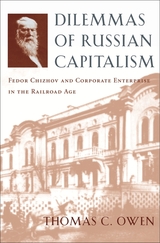 Dilemmas of Russian Capitalism: Fedor Chizhov and Corporate Enterprise in the Railroad Age
Thomas C. Owen
Harvard University Press, 2005 Fedor Chizhov built the first railroad owned entirely by Russian stockholders, created Moscow’s first bank and mutual credit society, and launched the first profitable steamship line based in Archangel. In this valuable book, Thomas Owen vividly illuminates the life and world of this seminal figure in early Russian capitalism.
Chizhov condemned European capitalism as detrimental to the ideal of community and the well-being of workers and peasants. In his strategy of economic nationalism, Chizhov sought to motivate merchants to undertake new forms of corporate enterprise without undermining ethnic Russian culture. He faced numerous obstacles, from the lack of domestic investment capital to the shortage of enlightened entrepreneurial talent. But he reserved his harshest criticism for the tsarist ministers, whose incompetence and prejudice against private entrepreneurship proved his greatest hindrance.
Richly documented from Chizhov’s detailed diary, this work offers an insightful exploration of the institutional impediments to capitalism and the rule of law that plagued the tsarist empire and continue to bedevil post-Soviet Russia.
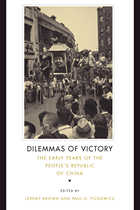 Dilemmas of Victory: The Early Years of the People's Republic of China
Jeremy Brown
Harvard University Press, 2007 This illuminating work examines the social, cultural, political, and economic dimensions of the Communist takeover of China. Instead of dwelling on elite politics and policy-making processes, Dilemmas of Victory seeks to understand how the 1949-1953 period was experienced by various groups, including industrialists, filmmakers, ethnic minorities, educators, rural midwives, philanthropists, stand-up comics, and scientists.
A stellar group of authors that includes Frederic Wakeman, Elizabeth Perry, Sherman Cochran, Perry Link, Joseph Esherick, and Chen Jian shows that the Communists sometimes achieved a remarkably smooth takeover, yet at other times appeared shockingly incompetent. Shanghai and Beijing experienced it in ways that differed dramatically from Xinjiang, Tibet, and Dalian. Out of necessity, the new regime often showed restraint and flexibility, courting the influential and educated. Furthermore, many policies of the old Nationalist regime were quietly embraced by the new Communist rulers.
Based on previously unseen archival documents as well as oral histories, these lively, readable essays provide the fullest picture to date of the early years of the People's Republic, which were far more pluralistic, diverse, and hopeful than the Maoist decades that followed.
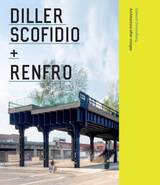 Diller Scofidio + Renfro: Architecture after Images
Edward Dimendberg
University of Chicago Press, 2013 In Diller Scofidio + Renfro: Architecture after Images, Edward Dimendberg offers the first comprehensive treatment of one of the most imaginative contemporary design studios. Since founding their practice in 1979, Elizabeth Diller and Ricardo Scofidio have integrated architecture, urban design, media art, and the performing arts in a dazzling array of projects, which include performances, art installations, and books, in addition to buildings and public spaces. At the center of this work is a fascination with vision and a commitment to questioning the certainty and security long associated with architecture.
Dimendberg provides an extensive overview of these concerns and the history of the studio, revealing how principals Elizabeth Diller, Ricardo Scofidio, and Charles Renfro continue to expand the definition of architecture, question the nature of space and vision in contemporary culture, and produce work that is endlessly surprising and rewarding, from New York’s High Line to Blur, an artificial cloud, and Facsimile, a video screen that moves around a building facade. Dimendberg also explores the relation of work by DS+R to that by earlier modernists such as Marcel Duchamp and John Hejduk. He reveals how the fascination of the architects with evolving forms of media, technology, and building materials has produced works that unsettle distinctions among architecture and other media. Based on interviews with the architects, their clients, and collaborators as well as unprecedented access to unpublished documents, sketchbook entries, and archival records, Diller Scofidio + Renfro is the most thorough consideration of DS+R in any language. Illustrated with many previously unpublished renderings in addition to photos from significant contemporary photographers, this book is an essential study of one of the most significant and creative architecture and design studios working today.
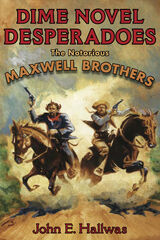 Dime Novel Desperadoes: The Notorious Maxwell Brothers
John Hallwas
University of Illinois Press, 2011 A thrilling true crime narrative and groundbreaking historical account, Dime Novel Desperadoes recovers the long-forgotten story of Ed and Lon Maxwell, the outlaw brothers from Illinois who once rivaled Jesse and Frank James in national notoriety. Growing up hard as the sons of a struggling tenant farmer, the Maxwell brothers started their lawbreaking as robbers and horse thieves in the 1870s, embarking on a life of crime that quickly captured the public eye. Already made famous locally by newspapers that wanted to dramatize crimes and danger for an eager reading audience, the brothers achieved national prominence in 1881 when they shot and killed Charles and Milton Coleman, Wisconsin lawmen who were trying to apprehend them. Public outrage sparked the largest manhunt for outlaws in American history, involving some twenty posses who pursued the desperadoes in Wisconsin, Minnesota, Iowa, Illinois, Missouri, and Nebraska. Some of the pursuers were intent on a lynching, but the outlaws escaped against incredible odds. When a mob finally succeeded in killing Ed, in broad daylight on a courthouse lawn, that event generated widespread commentary on law and order. Nevertheless, the daring desperadoes were eventually portrayed as heroes in sensationalistic dime novels. A stunning saga of robbery and horse stealing, gunfights and manhunts, murder and mob violence, Dime Novel Desperadoes also delves into the cultural and psychological factors that produced lawbreakers and created a crime wave in the post-Civil War era. By pointing to social inequities, media distortions, and justice system failures, John E. Hallwas reveals the complicity of nineteenth-century culture in the creation of violent criminals. Further, by featuring astute, thought-provoking analysis of the lawbreaker's mindset, this book explores the issue at the heart of humanity's quest for justice: the perpetrator's responsibility for his criminal acts. Every overview and encyclopedia of American outlaws will need to be revised, and the fabled "Wild West" will have to be extended east of the Mississippi River, in response to this riveting chronicle of major American desperadoes who once thrilled the nation but have since escaped historical attention for well over a century. With more than forty illustrations and several maps that bring to life the exciting world of the Maxwell brothers, Dime Novel Desperadoes is a new classic in the annals of American outlawry.
Dime Novel Roundup: Annotated Index, 1931–1981
Michael L. Cook
University of Wisconsin Press, 1983 This book includes a chronological listing of issues of the Dime Novel Roundup, which was published for over fifty years. It also features an index to the contents of the Dime Novel Roundup.
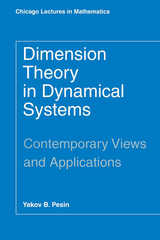 Dimension Theory in Dynamical Systems: Contemporary Views and Applications
Yakov B. Pesin
University of Chicago Press, 1997 The principles of symmetry and self-similarity structure nature's most beautiful creations. For example, they are expressed in fractals, famous for their beautiful but complicated geometric structure, which is the subject of study in dimension theory. And in dynamics the presence of invariant fractals often results in unstable "turbulent-like" motions and is associated with "chaotic" behavior.
In this book, Yakov Pesin introduces a new area of research that has recently appeared in the interface between dimension theory and the theory of dynamical systems. Focusing on invariant fractals and their influence on stochastic properties of systems, Pesin provides a comprehensive and systematic treatment of modern dimension theory in dynamical systems, summarizes the current state of research, and describes the most important accomplishments of this field.
Pesin's synthesis of these subjects of broad current research interest will be appreciated both by advanced mathematicians and by a wide range of scientists who depend upon mathematical modeling of dynamical processes.
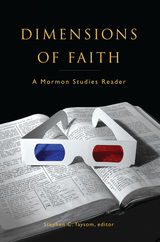 Dimensions of Faith: A Mormon Studies Reader
Stephen C. Taysom
Signature Books, 2011 In the brief time between when the alarm clock rings and the start of the day, we usually cherish those few extra moments of warmth in the sheets. However, soon enough we’re happy to be up and about, exploring the world around us. Similarly with religious studies, we may cling to the comforts of the past—what we find familiar in our faith—but then curiosity and conscience pull us to new revelations and sources of knowledge.
In these seventeen articles on things Mormon—prominent people, religious experience, memory, media, literature, and investigative theory—there is an obvious respect for the past and simultaneous desire to get to the bottom of things, to test the boundaries of knowledge. For instance, Jonathan Stapley and Kristine Wright look at the history of ritual healing within Mormonism, including the use of magic handkerchiefs and blessings performed by women. Matthew Bowman’s essay on “A Mormon Bigfoot” looks at the story retold in Sunday school and elsewhere about an early Church apostle who saw the biblical Cain. Brian Stuy examines Church President Wilford Woodruff’s account of the American founding fathers reaching from beyond the grave—a summons the prophet responded favorably to—requesting temple baptisms on their behalf. Unknown to Woodruff, this ordinance had been performed the year before. And Kathleen Flake looks at how the First Vision and other founding narratives were not emphasized in the Church until the twentieth century.
Other contributors include Gary James Bergera, Martha Bradley, Newell Bringhurst, Samuel Brown, Claudia Bushman, Brian Cannon, Douglas Davies, Rebecca de Schweinitz, Lawrence Foster, Reinhold Hill, and Jacob Olmstead.
 The Dimensions of Federalism: State Governments and Pollution Control Policies
William R. Lowry
Duke University Press, 1991 The resurgence of state involvement in policymaking in recent years has renewed a long-standing debate about the most effective role for states within a federal system of government. In The Dimensions of Federalism, William R. Lowry assesses and examines the responsiveness and innovation of state governments in the area of air and water pollution control policies. Building a theoretical model that demonstrates the relationship between state and federal governments, Lowry combines econometric analysis of data on all fifty states with an in-depth study of a leading state in each of four major areas of pollution policy to conclude that state policymakers will often experiment and willingly improve upon federal pollution control standards. But this willingness is tempered, he maintains, both by a fear of losing important constituents to interstate competition and by the difficulty of coordinating efforts and disseminating information without the active involvement of the federal government. Originally published in 1992, this book continues to be pertinent in a political climate that will inevitably see an increased role for states in domestic policymaking. It will be of great interest to students and scholars of American public policy, federalism, and environmental politics and policy.
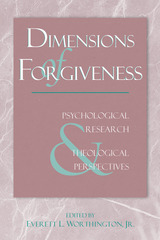 Dimensions Of Forgiveness: A Research Approach
Everett L. Worthington
Templeton Press, 1999 The scientific study of forgiveness is a new approach to an age-old problem. For thousands of years, people have practiced forgiveness within religious systems. Now, the field of scholarly research of forgiveness reveals the beneficial aspects of the process. p>Contributors include Elliot Dorff and Martin Marty discussing religious interpretations, followed by social implications explained by Kenneth Pargament and Mark Rye. Roy Baumeister, Julie Exline, and Kristin Sommer present the victim's point of view. Other contributors focusing on the forgiveness research are: Everett Worthington, Robert Enright, Catherine Coyle, Carl Thoresen, Frederic Luskin, and Alex Harris. An annotated bibliography by Michael McCullough, Julie Exline, and Roy Baumeister, covers the empirical literature on the subject. Lewis Smedes concludes with the four steps necessary for forgiveness: moving from estrangement to forgiveness to reconciliation to hope.
 Dimensions Of Forgiveness: A Research Approach
Everett L. Worthington
Templeton Press
The scientific study of forgiveness is a new approach to an age-old problem. For thousands of years, people have practiced forgiveness within religious systems. Now, the field of scholarly research of forgiveness reveals the beneficial aspects of the process.
p>Contributors include Elliot Dorff and Martin Marty discussing religious interpretations, followed by social implications explained by Kenneth Pargament and Mark Rye. Roy Baumeister, Julie Exline, and Kristin Sommer present the victim's point of view. Other contributors focusing on the forgiveness research are: Everett Worthington, Robert Enright, Catherine Coyle, Carl Thoresen, Frederic Luskin, and Alex Harris. An annotated bibliography by Michael McCullough, Julie Exline, and Roy Baumeister, covers the empirical literature on the subject. Lewis Smedes concludes with the four steps necessary for forgiveness: moving from estrangement to forgiveness to reconciliation to hope.
The Dimensions of Liberty
Oscar Handlin and Mary Flug Handlin
Harvard University Press Using the ability of the individual to take action as a working measure of the extent of liberty at any time, Oscar Handlin and Mary Handlin identify and describe numerous factors that have had an important effect on American freedom since colonial days. In defining the broad dimensions of the conception, they investigate, among other subjects, the significance of the idea that the state derived power from the consent of the governed, the early concept of the Commonwealth, the later one of police powers, the roles played by governmental institutions, churches, secret lodges, voluntary associations of all kinds, immigration, the professions, continuing social and physical mobility, and the growth of wealth.
 Dimensions of the Americas: Art and Social Change in Latin America and the United States
Shifra M. Goldman
University of Chicago Press, 1994 Acclaimed art historian Shifra Goldman here provides the first overview of the social history of modern and contemporary Latin American and Latino art. Long needed in the field of art history, this collection of thirty-three essays focuses on Latin American artists throughout Mexico, Central and South America, the Caribbean, and the United States.
Goldman's extensive introduction provides an up-to-date chronology of modern Latin American art; a history of "social art history" in the United States; and synopses of recent theoretical and historical writings by major scholars from Mexico, Cuba, Brazil, Peru, Uruguay, Chile, and the United States. In her essays, Goldman discusses a vast array of topics including: the influence of the Mexican muralists on the American continent; the political and artistic significance of poster art and printmaking in Cuba, Puerto Rico, and among Chicanos; the role of women artists such as Guatemalan painter Isabel Ruiz; and the increasingly important role of politics and multinational businesses in the art world of the 1970s and 1980s. She explores the reception of Latin American and Latino art in the United States, focusing on major historical exhibits as well as on exhibits by artists such as Chilean Alfredo Jaar and Argentinian Leandro Katz. Finally, she examines the significance of nationalist and ethnic themes in Latin American and Latino art.
Written in a straightforward style equally accessible to specialists, students, and general audiences, this book will become essential reading for anyone interested in understanding the importance of Latin American art and the complex dynamic shaping it.
Dimensions of the Holocaust
Elie Wiesel
Northwestern University Press, 1990 Elie Wiesel, Lucy Dawidowicz, Dorothy Rabinowitz, and Robert McAfee Brown explore society's inability to comprehend the horrors of the Holocaust, and its unwillingness to remember. Annotated by Elliot Lefkovitz, educational consultant for the Holocaust Memorial Foundation of Illinois, this edition contains extensive documentation of ideas and facts that have surfaced since the book's first appearance in 1977.
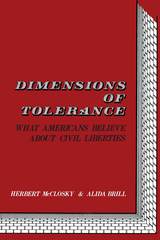 The Dimensions of Tolerance: What Americans Believe About Civil Liberties
Herbert McClosky
Russell Sage Foundation, 1983 Reaching well beyond traditional categories of analysis, McClosky and Brill have surveyed civil libertarian attitudes among the general public, opinion leaders, lawyers and judges, police officials, and academics. They analyze levels of tolerance in a wide range of civil liberties domains—first amendment rights, due process, privacy, and such emerging areas as women's and homosexual rights—and along numerous variables including political participation, ideology, age, and education. The authors explore fully the differences between civil libertarian values in the abstract and applying them in specific instances. They also examine the impact of tensions between liberties (free press and privacy, for example) and between tolerance and other values (such as public safety). They probe attitudes toward recently expanded liberties, finding that even the more informed and sophisticated citizen is often unable to read on through complex new civil liberties issues. This remarkable study offers a comprehensive assessment of the viability—and vulnerability—of beliefs central to the democratic system. It makes an invaluable contribution to the study of contemporary American institutions and attitudes.
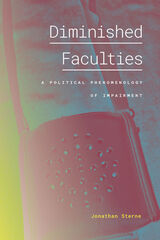 Diminished Faculties: A Political Phenomenology of Impairment
Jonathan Sterne
Duke University Press, 2021 In Diminished Faculties Jonathan Sterne offers a sweeping cultural study and theorization of impairment. Drawing on his personal history with thyroid cancer and a paralyzed vocal cord, Sterne undertakes a political phenomenology of impairment in which experience is understood from the standpoint of a subject that is not fully able to account for itself. He conceives of impairment as a fundamental dimension of human experience, examining it as both political and physical. While some impairments are enshrined as normal in international standards, others are treated as causes or effects of illness or disability. Alongside his fractured account of experience, Sterne provides a tour of alternative vocal technologies and practices; a study of “normal” hearing loss as a cultural practice rather than a medical problem; and an intertwined history and phenomenology of fatigue that follows the concept as it careens from people to materials science to industrial management to spoons. Sterne demonstrates how impairment is a problem, opportunity, and occasion for approaching larger questions about disability, subjectivity, power, technology, and experience in new ways. Diminished Faculties ends with a practical user’s guide to impairment theory.
Dimitry's Shade: A Reading of Alexander Pushkin's Boris Godunov
J. Douglas Clayton
Northwestern University Press, 2004 In an ambitious reinterpretation of the premier work of Russia's national poet, J. Douglas Clayton reads Boris Godunov as the expression of Alexander Pushkin's thinking about the Russian state, especially the Russian state of his own time (some two hundred years distant from the events of the play), and even his own place within that state. Here we see how the play marks a sharp break with the Decembrists and Pushkin's own youthful liberalism, signaling its author's emergence as a Russian conservative. Boris Godunov, Clayton argues, can be best understood as an ideologically conservative defense of autocracy. Sure to shock readers even as it persuades them, Dimitry's Shade reveals, incarnated in Boris Godunov, those three elements that were to become the slogan of Nicholas's Russia in the 1830s: autocracy, orthodoxy, and nationality.
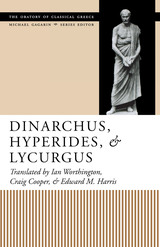 Dinarchus, Hyperides, and Lycurgus
Translated by Ian Worthington, Craig Cooper, and Edward M. Harris
University of Texas Press, 2001 This is the fifth volume in the Oratory of Classical Greece. This series presents all of the surviving speeches from the late fifth and fourth centuries B.C. in new translations prepared by classical scholars who are at the forefront of the discipline. These translations are especially designed for the needs and interests of today's undergraduates, Greekless scholars in other disciplines, and the general public. Classical oratory is an invaluable resource for the study of ancient Greek life and culture. The speeches offer evidence on Greek moral views, social and economic conditions, political and social ideology, law and legal procedure, and other aspects of Athenian culture that have been largely ignored: women and family life, slavery, and religion, to name just a few. This volume combines the surviving speeches of three orators who stand at the end of the classical period. Dinarchus was not an Athenian, but he was called on to write speeches in connection with a corruption scandal (the Harpalus affair) that put an end to the career of Demosthenes. His speeches thus raise many of the vital issues surrounding the Macedonian conquest of Athens and the final years of Athenian democracy. Hyperides was an important public figure who was involved in many of the events described by Dinarchus and Lycurgus. His speeches open a window into many interesting facets of Athenian life. Lycurgus was one of the leading politicians in Athens during the reign of Alexander the Great and put Athenian public finances on a more secure footing. He was also a deeply religious man, who tried to revive Athenian patriotism after the crushing defeat at Chaeronea.
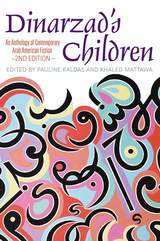 Dinarzad's Children: An Anthology of Contemporary Arab American Fiction
Pauline Kaldas
University of Arkansas Press, 2009 The first edition of Dinarzad’s Children was a groundbreaking and popular anthology that brought to light the growing body of short fiction being written by Arab Americans. This expanded edition includes sixteen new stories —thirty in all—and new voices and is now organized into sections that invite readers to enter the stories from a variety of directions. Here are stories that reveal the initial adjustments of immigrants, the challenges of forming relationships, the political nuances of being Arab American, the vision directed towards homeland, and the ongoing search for balance and identity. The contributors are D. H. Melhem, Mohja Khaf, Rabih Alameddine, Rawi Hage, Laila Halaby, Patricia Sarrafian Ward, Alia Yunis, Diana Abu Jaber, Susan Muaddi Darraj, Samia Serageldin, Alia Yunis, Joseph Geha, May Monsoor Munn, Frances Khirallah Nobel, Nabeel Abraham, Yussef El Guindi, Hedy Habra, Randa Jarrar, Zahie El Kouri, Amal Masri, Sahar Mustafah, Evelyn Shakir, David Williams, Pauline Kaldas, and Khaled Mattawa.
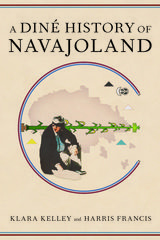 A Diné History of Navajoland
Klara Kelley and Harris Francis
University of Arizona Press, 2019 For the first time, a sweeping history of the Diné that is foregrounded in oral tradition. Authors Klara Kelley and Harris Francis share Diné history from pre-Columbian time to the present, using ethnographic interviews in which Navajo people reveal their oral histories on key events such as Athabaskan migrations, trading and trails, Diné clans, the Long Walk of 1864, and the struggle to keep their culture alive under colonizers who brought the railroad, coal mining, trading posts, and, finally, climate change.
The early chapters, based on ceremonial origin stories, tell about Diné forebears. Next come the histories of Diné clans from late pre-Columbian to early post-Columbian times, and the coming together of the Diné as a sovereign people. Later chapters are based on histories of families, individuals, and communities, and tell how the Diné have struggled to keep their bond with the land under settler encroachment, relocation, loss of land-based self-sufficiency through the trading-post system, energy resource extraction, and climate change.
Archaeological and documentary information supplements the oral histories, providing a comprehensive investigation of Navajo history and offering new insights into their twentieth-century relationships with Hispanic and Anglo settlers.
For Diné readers, the book offers empowering histories and stories of Diné cultural sovereignty. “In short,” the authors say, “it may help you to know how you came to be where—and who—you are.”
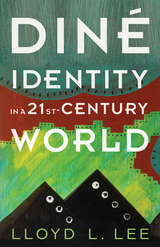 Diné Identity in a Twenty-First-Century World
Lloyd L. Lee
University of Arizona Press, 2020 Diné identity in the twenty-first century is distinctive and personal. It is a mixture of traditions, customs, values, behaviors, technologies, worldviews, languages, and lifeways. It is a holistic experience. Diné identity is analogous to Diné weaving: like weaving, Diné identity intertwines all of life’s elements together. In this important new book, Lloyd L. Lee, a citizen of the Navajo Nation and an associate professor of Native American studies, takes up and provides insight on the most essential of human questions: who are we? Finding value and meaning in the Diné way of life has always been a hallmark of Diné studies. Lee’s Diné-centric approach to identity gives the reader a deep appreciation for the Diné way of life. Lee incorporates Diné baa hane’ (Navajo history), Sa’ą́h Naagháí Bik’eh Hózhǫ́ǫ́n (harmony), Diné Bizaad (language), K’é (relations), K’éí (clanship), and Níhi Kéyah (land) to address the melding of past, present, and future that are the hallmarks of the Diné way of life. This study, informed by personal experience, offers an inclusive view of identity that is encompassing of cultural and historical diversity. To illustrate this, Lee shares a spectrum of Diné insights on what it means to be human. Diné Identity in a Twenty-First-Century World opens a productive conversation on the complexity of understanding and the richness of current Diné identities.
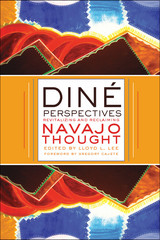 Diné Perspectives: Revitalizing and Reclaiming Navajo Thought
Edited by Lloyd L. Lee; Foreword by Gregory Cajete
University of Arizona Press, 2014 What does it mean to be a Navajo (Diné) person today? What does it mean to “respect tradition”? How can a contemporary life be informed by the traditions of the past? These are the kinds of questions addressed by contributors to this unusual and pathbreaking book.
All of the contributors are coming to personal terms with a phrase that underpins the matrix of Diné culture: Sa’ah Naagháí Bik’eh Hózhóón. Often referred to simply as SNBH, the phrase can be translated in many ways but is generally understood to mean “one’s journey of striving to live a long, harmonious life.” The book offers a variety of perspectives of Diné men and women on the Diné cultural paradigm that is embedded in SNBH. Their writings represent embodied knowledge grounded in a way of knowing that connects thought, speech, experience, history, tradition, and land. Some of the contributors are scholars. Some are Diné who are fighting for justice and prosperity for the Navajo Nation. Some are poets and artists. They are united in working to preserve both intellectual and cultural sovereignty for Diné peoples. And their contributions exemplify how Indigenous peoples are creatively applying tools of decolonization and critical research to re-create Indigenous thought and culture in a present day that rarely resembles the days of their ancestors.
More than 300,000 people self-identify as Diné today. Every one must grapple with how to make a life that acknowledges Sa’ah Naagháí Bik’eh Hózhóón. Diné Perspectives is unique in bringing such personal journeys to the public eye.
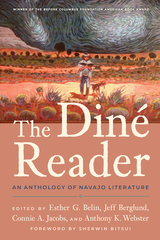 The Diné Reader: An Anthology of Navajo Literature
Edited by Esther G. Belin, Jeff Berglund, Connie A. Jacobs, and Anthony K. Webster; Foreword by Sherwin Bitsui
University of Arizona Press, 2021 2022 Before Columbus Foundation American Book Award Winner
The Diné Reader: An Anthology of Navajo Literature is unprecedented. It showcases the breadth, depth, and diversity of Diné creative artists and their poetry, fiction, and nonfiction prose.This wide-ranging anthology brings together writers who offer perspectives that span generations and perspectives on life and Diné history. The collected works display a rich variety of and creativity in themes: home and history; contemporary concerns about identity, historical trauma, and loss of language; and economic and environmental inequalities.
The Diné Reader developed as a way to demonstrate both the power of Diné literary artistry and the persistence of the Navajo people. The volume opens with a foreword by poet Sherwin Bitsui, who offers insight into the importance of writing to the Navajo people. The editors then introduce the volume by detailing the literary history of the Diné people, establishing the context for the tremendous diversity of the works that follow, which includes free verse, sestinas, limericks, haiku, prose poems, creative nonfiction, mixed genres, and oral traditions reshaped into the written word.
This volume combines an array of literature with illuminating interviews, biographies, and photographs of the featured Diné writers and artists. A valuable resource to educators, literature enthusiasts, and beyond, this anthology is a much-needed showcase of Diné writers and their compelling work. The volume also includes a chronology of important dates in Diné history by Jennifer Nez Denetdale, as well as resources for teachers, students, and general readers by Michael Thompson. The Diné Reader is an exciting convergence of Navajo writers and artists with scholars and educators.
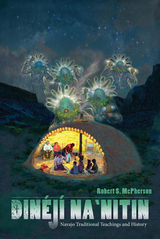 Dinéjí Na`nitin: Navajo Traditional Teachings and History
Robert S. McPherson
University Press of Colorado, 2012 Traditional teachings derived from stories and practices passed through generations lie at the core of a well-balanced Navajo life. These teachings are based on a very different perspective of the physical and spiritual world than that found in general American culture. Dinéjí Na`nitin is an introduction to traditional Navajo teachings and history for a non-Navajo audience, providing a glimpse into this unfamiliar domain and illuminating the power and experience of the Navajo worldview. Historian Robert McPherson discusses basic Navajo concepts such as divination, good and evil, prophecy, and metaphorical thought, as well as these topics' relevance in daily life, making these far-ranging ideas accessible to the contemporary reader. He also considers the toll of cultural loss on modern Navajo culture as many traditional values and institutions are confronted by those of dominant society. Using both historical and modern examples, he shows how cultural change has shifted established views and practices and illustrates the challenge younger generations face in maintaining the beliefs and customs their parents and grandparents have shared over generations. This intimate look at Navajo values and customs will appeal not only to students and scholars of Native American studies, ethnic studies, and anthropology but to any reader interested in Navajo culture or changing traditional lifeways.
 Ding Ling’s Fiction: Ideology and Narrative in Modern Chinese Literature
Yi-Tsi Mei Feuerwerker
Harvard University Press, 1982 Ding Ling is China’s foremost woman writer, and one of the great survivors in modern Chinese literary history. Iconoclast, feminist, and political activist, Ding Ling began her writing in the late 1920s as a member of the May Fourth generation and continued to write after the Communist Party had established control over all literary activities. She has survived to practice her art through the physical dangers of war, imprisonment, and persecution by two governments.
Yi-tsi Mei Feuerwerker examines Ding Ling’s writings from the startling early stories about young women undergoing crises of love, sex, and identity to her novel on land reform, The Sun Shines on the Sanggan River, which won the 1951 Stalin prize for literature. The unique interest of Ding Ling’s writing lies in the response and resistance to political pressure that is revealed in the sequence of the works. The formal aspects of her fiction, as it undergoes distinctive phases of development, exemplify in precise ways the effects of ideological change on narrative practice. As much as the momentous events of her life, the literary works she produced dramatize the succession of creative dilemmas confronting the modern Chinese writer.
The examination of Ding Ling’s life and works raises pressing questions about the writer’s role and the validity of literature and its hopes for survival in a world of radical political change.
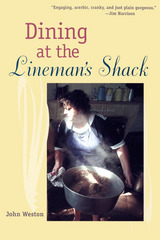 Dining at the Lineman's Shack
John Weston
University of Arizona Press, 2003 Mountain lion barbacoa. Margarita's yam soufflé. Pastel de Choclo, a.k.a. Rodeo Pie. And for dessert, perhaps, Miss Ruby Cupcakes. These are but a few of the gustatory memories of John Weston that waft us on a poignant journey into the past in the company of a gifted writer and unabashed bon vivant. The place is Skull Valley in central Arizona, the time the 1930s. Taking food as his theme, Weston paints an instructive and often hilarious portrait of growing up, of rural family life under difficult circumstances, and of a remote Arizona community trying to hold body and soul together during tough times. His book recalls life in a lineman's shack, interlaced with "disquisitions on swamp life, rotting water, and the complex experience of finding enough to eat during the Great Depression." Central to Weston's account is his mother Eloine, a valiant woman rearing a large brood in poverty with little help from her husband. Eloine cooks remarkably well—master of a small repertory from which she coaxes ideas surprising even to herself—and feeds her family on next to nothing. She is a woman whose first instinct is to cry out "Lord, what am I going to feed them" whenever visitors show up close to mealtime. Recalls Weston, "Her strength lay in a practical- and poverty-born sense that there must be more edible food in the world than most people realized," and he swears that six out of seven meals were from parts of four or five previous meals coming round again, like the buckets on a Ferris wheel. Although Weston evokes a fond remembrance of a bygone era that moves from Depression-era Skull Valley to wartime Prescott, rest assured: food—its acquisition, its preparation, its wholehearted enjoyment—is the foundation of this book. "I did not have a deprived childhood, despite its slim pickings," writes Weston. "If I recall a boiling pig's head now and then, it is not to be read as some Jungian blip from Lord of the Flies but simply a recurring flicker of food-memory." Whether remembering his father's occasional deer poaching or his community's annual Goat Picnic, Weston laces his stories with actual recipes—even augmenting his instructions for roasted wild venison with tips for preparing jerky. Dining at the Lineman's Shack teems with sparkling allusions, both literary and culinary, informed by Weston's lifetime of travels. Even his nagging memory of desperate boyhood efforts to trade his daily peanut-butter sandwich for bacon-and-egg, baloney, jelly, or most anything else is tempered by his acquaintance with "the insidious sa-teh sauce in Keo Sananikone's hole-in-the-wall restaurant on Kapahulu Street"—a peanut-butter-based delicacy for which he obligingly provides the ingredients (and which he promises will keep, refrigerated in a jar, for several weeks before baroque things begin to grow on it). Through this tantalizing smorgasbord of memories, stories, and recipes, John Weston has fashioned a wholly captivating commentary on American culture, both in an earlier time and in our own. Dining at the Lineman's Shack is a book that will satisfy any reader's hunger for the unusual—and a book to savor, in every sense of the word.
Dining in a Classical Context
William J. Slater, Editor
University of Michigan Press, 1991 An investigation of the role of the feast as a cultural focus for the classical world
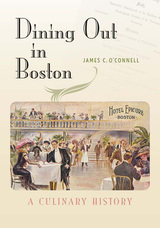 Dining Out in Boston: A Culinary History
James C. O'Connell
University Press of New England, 2016 Over the years, Boston has been one of America’s leading laboratories of urban culture, including restaurants, and Boston history provides valuable insights into American food ways. James C. O’Connell, in this fascinating look at more than two centuries of culinary trends in Boston restaurants, presents a rich and hitherto unexplored side to the city’s past. Dining Out in Boston shows that the city was a pioneer in elaborate hotel dining, oyster houses, French cuisine, student hangouts, ice cream parlors, the twentieth-century revival of traditional New England dishes, and contemporary locavore and trendy foodie culture. In these stories of the most-beloved Boston restaurants of yesterday and today—illustrated with an extensive collection of historic menus, postcards, and photos—O’Connell reveals a unique history sure to whet the intellectual and nostalgic appetite of Bostonians and restaurant-goers the world over.
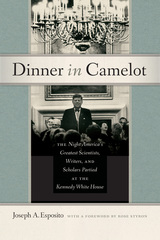 Dinner in Camelot: The Night America's Greatest Scientists, Writers, and Scholars Partied at the Kennedy White House
Joseph A. Esposito
University Press of New England, 2018 In April 1962, President and Mrs. John F. Kennedy hosted forty-nine Nobel Prize winners—along with many other prominent scientists, artists, and writers—at a famed White House dinner. Among the guests were J. Robert Oppenheimer, who was officially welcomed back to Washington after a stint in the political wilderness; Linus Pauling, who had picketed the White House that very afternoon; William and Rose Styron, who began a fifty-year friendship with the Kennedy family that night; James Baldwin, who would later discuss civil rights with Attorney General Robert Kennedy; Mary Welsh Hemingway, Ernest Hemingway’s widow, who sat next to the president and grilled him on Cuba policy; John Glenn, who had recently orbited the earth aboard Friendship 7; historian Arthur M. Schlesinger, Jr., who argued with Ava Pauling at dinner; and many others. Actor Frederic March gave a public recitation after the meal, including some unpublished work of Hemingway’s that later became part of Islands in the Stream. Held at the height of the Cold War, the dinner symbolizes a time when intellectuals were esteemed, divergent viewpoints could be respectfully discussed at the highest level, and the great minds of an age might all dine together in the rarefied glamour of “the people’s house.”
 Dinner Pieces
Leon Battista Alberti
Harvard University Press, 2024 An innovative collection of comedic stories by the original “Renaissance man.”
Leon Battista Alberti (1404–1472) was among the most famous figures of the Italian Renaissance. His extraordinary range of abilities as a writer, architect, art theorist, and scientist made him the original model for the many-sided “Renaissance man.”
A collection of stories meant to be read while dining and drinking, the Dinner Pieces, or Intercenales, are one of Alberti’s most innovative and experimental works, mixing literary genres and styles of prose composition adapted from both Greek and Latin models. They cover a wide range of topics, from moral philosophy, politics, and religion to the arts, money-making, love and friendship, and the study of the humanities. The Dinner Pieces offer satiric commentary on the cultural illusions and moral myths of Alberti’s day. They cut through the absurdity of human existence with the blade of wit and laughter and constitute an important monument in the history of comic writing.
This English translation by David Marsh is based on the authoritative Latin text of Roberto Cardini, accompanied by ample notes.
 Dinner Pieces
Leon Battista Alberti
Harvard University Press, 2024 An innovative collection of comedic stories by the original “Renaissance man.”
Leon Battista Alberti (1404–1472) was among the most famous figures of the Italian Renaissance. His extraordinary range of abilities as a writer, architect, art theorist, and scientist made him the original model for the many-sided “Renaissance man.”
A collection of stories meant to be read while dining and drinking, the Dinner Pieces, or Intercenales, are one of Alberti’s most innovative and experimental works, mixing literary genres and styles of prose composition adapted from both Greek and Latin models. They cover a wide range of topics, from moral philosophy, politics, and religion to the arts, money-making, love and friendship, and the study of the humanities. The Dinner Pieces offer satiric commentary on the cultural illusions and moral myths of Alberti’s day. They cut through the absurdity of human existence with the blade of wit and laughter and constitute an important monument in the history of comic writing.
This English translation by David Marsh is based on the authoritative Latin text of Roberto Cardini, accompanied by ample notes.
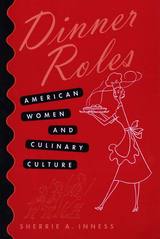 Dinner Roles: American Women and Culinary Culture
Sherrie A. Inness
University of Iowa Press, 2001 Who cooks dinner in American homes? It's no surprise that “Mom” remains the overwhelming answer. Cooking and all it entails, from grocery shopping to chopping vegetables to clearing the table, is to this day primarily a woman's responsibility. How this relationship between women and food developed through the twentieth century and why it has endured are the questions Sherrie Inness seeks to answer in Dinner Roles: American Women and Culinary Culture.
By exploring a wide range of popular media from the first half of the twentieth century, including cookbooks, women's magazines, and advertisements, Dinner Roles sheds light on the network of sources that helped perpetuate the notion that cooking is women's work. Cookbooks and advertisements provided valuable information about the ideals that American society upheld. A woman who could prepare the perfect Jell-O mold, whip up a cake with her new electric mixer, and still maintain a spotless kitchen and a sunny disposition was the envy of other housewives across the nation.
Inness begins her exploration not with women but with men-those individuals often missing from the kitchen who were taught their own set of culinary values. She continues with the study of juvenile cookbooks, which provided children with their first cooking lessons. Chapters on the rise of electronic appliances, ethnic foods, and the 1950s housewife all add to our greater understanding of women's evolving roles in American culinary culture.
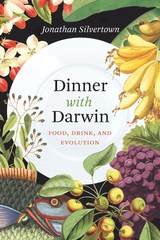 Dinner with Darwin: Food, Drink, and Evolution
Jonathan Silvertown
University of Chicago Press, 2017 What do eggs, flour, and milk have in common? They form the basis of waffles, of course, but these staples of breakfast bounty also share an evolutionary function: eggs, seeds (from which we derive flour by grinding), and milk have each evolved to nourish offspring. Indeed, ponder the genesis of your breakfast, lunch, or dinner, and you’ll soon realize that everything we eat and drink has an evolutionary history. In Dinner with Darwin, join Jonathan Silvertown for a multicourse meal of evolutionary gastronomy, a tantalizing tour of human taste that helps us to understand the origins of our diets and the foods that have been central to them for millennia—from spices to spirits.
A delectable concoction of coevolution and cookery, gut microbiomes and microherbs, and both the chicken and its egg, Dinner with Darwin reveals that our shopping lists, recipe cards, and restaurant menus don’t just contain the ingredients for culinary delight. They also tell a fascinating story about natural selection and its influence on our plates—and palates. Digging deeper, Silvertown’s repast includes entrées into GMOs and hybrids, and looks at the science of our sensory interactions with foods and cooking—the sights, aromas, and tastes we experience in our kitchens and dining rooms. As is the wont of any true chef, Silvertown packs his menu with eclectic components, dishing on everything from Charles Darwin’s intestinal maladies to taste bud anatomy and turducken.
Our evolutionary relationship with food and drink stretches from the days of cooking cave dwellers to contemporary crêperies and beyond, and Dinner with Darwin serves up scintillating insight into the entire, awesome span. This feast of soup, science, and human society is one to savor. With a wit as dry as a fine pinot noir and a cache of evolutionary knowledge as vast as the most discerning connoisseur’s wine cellar, Silvertown whets our appetites—and leaves us hungry for more.
 Dinner with Osama
Marilyn Krysl
University of Notre Dame Press, 2008
“Marilyn Krysl is one of our most gifted, quirky, and delightful storytellers—unpredictable, funny, and wildly inventive in wondrous ways. Her new collection shows her at the top of her form as she details the ordinary, the absurd, and the apocalyptic in outrageous and deeply affecting ways.” —Jay Neugeboren, author of 1940 and News from the New American Diaspora
“Marilyn Krysl’s astonishing Dinner with Osama somehow finds the intersection between deep anguish at the state of the world and brilliant, caustic, and hilarious sociopolitical satire of America post-9/11. Its effrontery is peculiarly female, its fierce intelligence that of a mother—or even (‘Are We Dwelling Deep Yet?’) a Great Mother—who needs to save and feed the world however she can. Its north and south must be ‘Mitosis,’ Krysl’s heartbreaking life history of a young Dinka woman whose way of life, and source of food, have been destroyed by civil war in Sudan; its east and west is surely the title story, in the voice of a politically irreproachable matriarch of Boulder, Colorado, who does her part by extending a dinner invitation to Osama—yes, that Osama—through her ‘pal’ Abdullah at the local gyros stand; and Osama not only receives it, he accepts. Israelis and Palestinians, ‘conflict’-addicted cliché-mongers of the creative writing workshop, violent extremists of every stripe, and above all the wealthy consumerist left are all skewered in this miraculous collection.” —Jaimy Gordon, author of Bogeywoman and She Drove Without Stopping
“We may have to invent a new term––‘the political lyric,’ perhaps––to describe the ‘airy speech and inspired story’ in Marilyn Krysl’s brilliant new collection of short fiction, Dinner with Osama. What holds all the fiction together, as much as the impassioned political and cultural concerns that inform them, is the writing, which is lyrical in the best sense, lyrical as in musical, expressive, and vivid.” —Ed Falco, author of Sabbath Night in the Church of the Piranha: New and Selected Stories
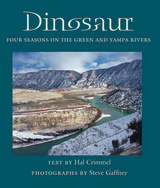 Dinosaur: Four Seasons on the Green and Yampa Rivers
Hal Crimmel
University of Arizona Press, 2007 Over a hundred million years ago, the area that is now Dinosaur National Monument attracted the behemoth creatures of its namesake with its plentiful supply of food and water. Renowned for its world- famous fossil quarry, Dinosaur National Monument is also home to two of the West’s legendary whitewater rivers: the Yampa and the Green. In this new addition to the Desert Places series, river runner and author Hal Crimmel, along with photographer Steve Gaffney, invite readers to partake in the beauty of Dinosaur National Monument’s remote, rapids-filled canyons, and wonder at the unique ecological niches found in this high desert oasis.
Gaffney’s reflective photographs emphasize the rough perfection of the landscape; Crimmel’s pensive meditations and his river expertise combine to create a rare point of view, one that ventures into places the guidebooks don’t go. But this narrative is more than tribute—it is a reminder of the fragile nature of desert places. Crimmel lyrically combines his descriptions with an examination of the complex issues relevant to managing public lands—invasive species, tourism, dams, endangered flora and fauna—to address the contradictions inherent in “managed wilderness.” Over four seasons and multiple trips, Crimmel and Gaffney have captured the rivers’ sense of place, creating a portrait of a dazzling high desert landscape that needs to be appreciated and protected.
Dinosaur in a Haystack: Reflections in Natural History
Stephen Jay Gould
Harvard University Press, 2011 From fads to fungus, baseball to beeswax, Gould always circles back to the great themes of time, change, and history, carrying readers home to the centering theme of evolution.
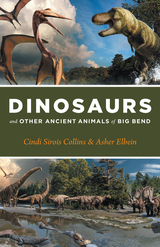 Dinosaurs and Other Ancient Animals of Big Bend
Cindi Sirois Collins and Asher Elbein
University of Texas Press, 2023 A time-traveling field guide to the ancient version of Big Bend National Park.
The sheer beauty of Big Bend National Park, along the shores of the Rio Grande in west Texas, never fails to astonish. Yet what lies beneath this natural treasure may be even more extraordinary than what meets the eye. Hidden in the rocks of Big Bend are the remains of giants: toothy sea lizards, enormous flying reptiles, and dinosaurs. Dinosaurs and Other Ancient Animals of Big Bend is a field guide to what once was. Inspired by the latest research, Cindi Sirois Collins and Asher Elbein imagine what it was like to walk among the plants and animals whose fossil remains tell the story of evolution and geological transformation in this singular landscape. We glimpse the drama of Big Bend’s rugged landscape in creation—the desert’s emergence from retreating oceans and volcanic eruptions. Immersive vignettes introduce dinosaurs, giant fish, and saber-toothed cats. And the history of discovery in the park proves a gripping tale, as paleontologists sifted major scientific insights from the soils, rocks, and riverbeds. Complete with vivid illustrations, this is a wholly original sensory and narrative experience that will deepen any reader’s knowledge and sense of wonder.
 Dinosaurs of Australia and New Zealand and Other Animals of the Mesozoic Era
John A. Long
Harvard University Press Beginning in the 1990s, fossils unearthed in Australia and New Zealand began to reshape the debates around some of paleontology's most hotly contested questions: how dinosaurs and birds are related, whether dinosaurs were warm-blooded, and when and how the mammals began their rise.
In this first comprehensive account of Mesozoic vertebrates from New Zealand and Australia, John Long shows that, while the fossil record from the region can be sparse and fragmentary, finds from such sites as Dinosaur Cove, Coober Pedy, Lightning Ridge, and the fossil trackways at Broome offer new and occasionally startling evidence that has the potential to challenge current views. Long's up-to-date coverage includes the discovery in late 1996 of a new shrew-like mammal, Ausktribosphenos nyktos.
Entries on individual fauna begin with a brief introduction, written to be accessible to the armchair paleontologist, that describes the prevailing climate and habitat during the relevant geological time period, followed by more technical information aimed at specialists, including type characteristics, location and other details about the specimen's discovery. Dinosaurs of Australia and New Zealand is profusely illustrated with photographs of the fossils, maps, and newly commissioned life restorations by some of the leading dinosaur illustrators from Australia and the United States: Peter Schouten, Tony Windberg, Bill Stout, and Mike Skrepnick.
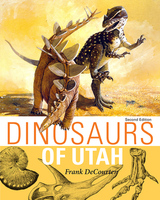 Dinosaurs Of Utah: Second Edition
Frank DeCourten
University of Utah Press, 2013 Since the late 1800s, when professional fossil hunters vied with each other to bring the largest and most complete specimens to the museum market, Utah has been one of the most fertile grounds for dinosaur discovery. Because rock from the Mesozoic era covers more than 25,000 square miles in Utah, the state is a natural museum of the great age of dinosaurs. The presence of sites such as Dinosaur National Park and the Cleveland- Lloyd Dinosaur Quarry underline Utah’s ongoing paleontological significance. There are probably more paleontologists residing and working in Utah now than at any time in the past, and the state even has an official dinosaur, the Allosaurus.
Dinosaurs of Utah is an ambitious book bridging the gap between the voluminous technical literature on Utah’s Mesozoic era and the numerous publications that describe dinosaurs at the elementary level. “Utah” dinosaurs are presented here as part of the Mesozoic terrestrial ecosystems that evolved in the Colorado Plateau region and are discussed in the context of the changing landscapes, environments, and biota recorded in the geological record.
More than one hundred of author Frank DeCourten’s meticulous line drawings illustrate fossil remains and various features of dinosaur anatomy, as do five stunning paintings by Carel Brest van Kempen. More than forty color landscape photographs by John Telford and Frank DeCourten show modern geologic contexts in most parts of the state and emphasize the dynamic nature of the region’s geologic history. There is also a series of detailed maps, including several new to this edition, that show the tremendous topographical shifts that occurred within the Mesozoic era from the early Triassic to the late Cretaceous periods, a span of over 175 million years.
This second edition of Dinosaurs of Utah enlivens our understanding of these amazing vanished creatures by explaining them and their world to us. It moves beyond the often superficial representations that have been so prevalent and more accurately portrays the variety of dinosaurs that once roamed the region now known as Utah.
Dinosaurs, Spitfires, and Sea Dragons
Christopher McGowan
Harvard University Press, 1991 Christopher McGowan sets out to solve some of the enduring mysteries about dinosaurs and other prehistoric reptiles. He makes fascinating comparisons between living and extinct animals while presenting topics that range from gigantism to intellect. In addition to exploring the natural history of the Mesozoic Era, McGowan draws on science and engineering concepts to explain curiosities such as the similarities between the aerodynamics of pteranodons and Spitfire planes.
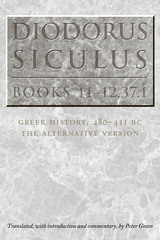 Diodorus Siculus, Books 11-12.37.1: Greek History, 480-431 BC—the Alternative Version
Translated with introduction and commentary by Peter Green
University of Texas Press, 2006 2007 — A Choice Magazine Outstanding Academic Book Sicilian historian Diodorus Siculus (ca. 100-30 BCE) is our only surviving source for a continuous narrative of Greek history from Xerxes' invasion to the Wars of the Successors following the death of Alexander the Great. Yet this important historian has been consistently denigrated as a mere copyist who slavishly reproduced the works of earlier historians without understanding what he was writing. By contrast, in this iconoclastic work Peter Green builds a convincing case for Diodorus' merits as a historian. Through a fresh English translation of a key portion of his multi-volume history (the so-called Bibliotheke, or "Library") and a commentary and notes that refute earlier assessments of Diodorus, Green offers a fairer, better balanced estimate of this much-maligned historian. The portion of Diodorus' history translated here covers the period 480-431 BCE, from the Persian invasion of Greece to the outbreak of the Peloponnesian War. This half-century, known as the Pentekontaetia, was the Golden Age of Periclean Athens, a time of unprecedented achievement in drama, architecture, philosophy, historiography, and the visual arts. Green's accompanying notes and commentary revisit longstanding debates about historical inconsistencies in Diodorus' work and offer thought-provoking new interpretations and conclusions. In his masterful introductory essay, Green demolishes the traditional view of Diodorus and argues for a thorough critical reappraisal of this synthesizing historian, who attempted nothing less than a "universal history" that begins with the gods of mythology and continues down to the eve of Julius Caesar's Gallic campaigns.
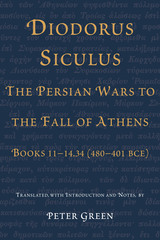 Diodorus Siculus, The Persian Wars to the Fall of Athens: Books 11-14.34 (480-401 BCE)
Translated with Introduction and Notes by Peter Green
University of Texas Press, 2010 Only one surviving source provides a continuous narrative of Greek history from Xerxes' invasion to the Wars of the Successors following the death of Alexander the Great—the Bibliotheke, or "Library," produced by Sicilian historian Diodorus Siculus (ca. 90–30 BCE). Yet generations of scholars have disdained Diodorus as a spectacularly unintelligent copyist who only reproduced, and often mangled, the works of earlier historians. Arguing for a thorough critical reappraisal of Diodorus as a minor but far from idiotic historian himself, Peter Green published Diodorus Siculus, Books 11-12.37.1, a fresh translation, with extensive commentary, of the portion of Diodorus's history dealing with the period 480–431 BCE, the so-called "Golden Age" of Athens. This is the only recent modern English translation of the Bibliotheke in existence. In the present volume—the first of two covering Diodorus's text up to the death of Alexander—Green expands his translation of Diodorus up to Athens' defeat after the Peloponnesian War. In contrast to the full scholarly apparatus in his earlier volume (the translation of which is incorporated) the present volume's purpose is to give students, teachers, and general readers an accessible version of Diodorus's history. Its introduction and notes are especially designed for this audience and provide an up-to-date overview of fifth-century Greece during the years that saw the unparalleled flowering of drama, architecture, philosophy, historiography, and the visual arts for which Greece still remains famous.
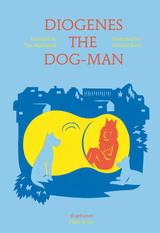 Diogenes the Dog-Man
Yan Marchand and Vincent Sorel
Diaphanes, 2017 At its most basic, philosophy is about learning how to think about the world around us. It should come as no surprise, then, that children make excellent philosophers! Naturally inquisitive, pint-size scholars need little prompting before being willing to consider life’s “big questions,” however strange or impractical. Plato & Co. introduces children—and curious grown-ups—to the lives and work of famous philosophers, from Socrates to Descartes, Einstein, Marx, and Wittgenstein. Each book in the series features an engaging—and often funny—story that presents basic tenets of philosophical thought alongside vibrant color illustrations.
In Diogenes the Dog-Man, the philosopher Diogenes not only admires the honesty of dogs, he has actually become one—sleeping, eating, and lifting his leg to pee wherever he chooses! Best of all, unlike humans, who dupe one another as to their true feelings, Diogenes the Dog-Man is free to bark his displeasure and even bite his adversaries in the calves—even if they happen to be Alexander the Great. Initially, the citizens gathered in the Agora think Diogenes is mad. Does he have rabies? But it soon becomes clear that we can all learn a thing or two from dogs about how to live a simple life.
Dionysiaca, Volume I: Books 1–15
Nonnos
Harvard University Press Epic revels.
Nonnos of Panopolis in Egypt, who lived in the fifth century of our era, composed the last great epic poem of antiquity. The Dionysiaca, in forty-eight books, has for its chief theme the expedition of Dionysus against the Indians; but the poet contrives to include all the adventures of the god (as well as much other mythological lore) in a narrative that begins with chaos in heaven and ends with the apotheosis of Ariadne’s crown. The wild ecstasy inspired by the god is certainly reflected in the poet’s style, which is baroque, extravagant, and unrestrained. It seems that Nonnos was in later years converted to Christianity, for in marked contrast to the Dionysiaca, a poem dealing unreservedly with classical myths and redolent of a pagan outlook, there is extant and ascribed to him a hexameter paraphrase of the Gospel of John.
The Loeb Classical Library edition of the Dionysiaca is in three volumes.
Dionysiaca, Volume II: Books 16–35
Nonnos
Harvard University Press Epic revels.
Nonnos of Panopolis in Egypt, who lived in the fifth century of our era, composed the last great epic poem of antiquity. The Dionysiaca, in forty-eight books, has for its chief theme the expedition of Dionysus against the Indians; but the poet contrives to include all the adventures of the god (as well as much other mythological lore) in a narrative that begins with chaos in heaven and ends with the apotheosis of Ariadne’s crown. The wild ecstasy inspired by the god is certainly reflected in the poet’s style, which is baroque, extravagant, and unrestrained. It seems that Nonnos was in later years converted to Christianity, for in marked contrast to the Dionysiaca, a poem dealing unreservedly with classical myths and redolent of a pagan outlook, there is extant and ascribed to him a hexameter paraphrase of the Gospel of John.
The Loeb Classical Library edition of the Dionysiaca is in three volumes.
Dionysiaca, Volume III: Books 36–48
Nonnos
Harvard University Press Epic revels.
Nonnos of Panopolis in Egypt, who lived in the fifth century of our era, composed the last great epic poem of antiquity. The Dionysiaca, in forty-eight books, has for its chief theme the expedition of Dionysus against the Indians; but the poet contrives to include all the adventures of the god (as well as much other mythological lore) in a narrative that begins with chaos in heaven and ends with the apotheosis of Ariadne’s crown. The wild ecstasy inspired by the god is certainly reflected in the poet’s style, which is baroque, extravagant, and unrestrained. It seems that Nonnos was in later years converted to Christianity, for in marked contrast to the Dionysiaca, a poem dealing unreservedly with classical myths and redolent of a pagan outlook, there is extant and ascribed to him a hexameter paraphrase of the Gospel of John.
The Loeb Classical Library edition of the Dionysiaca is in three volumes.
The Dionysian Vision of the World
Friedrich Nietzsche
University of Minnesota Press, 2012 Before the world knew of the thinker who “philosophizes with a hammer,” there was a young, passionate thinker who was captivated by the two forces found within Greek art: Dionysus and Apollo. In this essay, which was the forerunner to his groundbreaking book The Birth of Tragedy, The Dionysian Vision of the World provides an unparalleled look into the philosophical mind of one of Europe’s greatest and provocative intellects at the beginning of his philosophical interrogation on the subject of art. “While dreaming is the game man plays with reality as an individual, the visual artist (in the larger sense) plays a game with dreaming.” This is the Dionysian vision of the world.
Dionysos at Large
Marcel Detienne
Harvard University Press, 1989 As the perpetual stranger Dionysos is the embodiment of strangeness. He is nowhere at home, and yet in another sense the world is his home. Detienne evokes the manic activity of Dionysos in myths that connect him with the shedding of blood, the pouring of wine, and the ejaculation of semen.
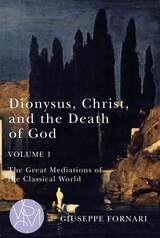 Dionysus, Christ, and the Death of God, Volume 1: The Great Mediations of the Classical World
Giuseppe Fornari
Michigan State University Press, 2020 This magisterial reflection on the history and destiny of the West compares Greco-Roman civilization and the Judeo-Christian tradition in order to understand what both unites and divides them. Mediation, understood as a collective, symbolic experience, gives society unity and meaning, putting human beings in contact with a universal object known as the world or reality. But unity has a price: the very force that enables peaceful coexistence also makes us prone to conflict. As a result, in order to find a common point of convergence—of at-one-ment—someone must be sacrificed. Sacrifice, then, is the historical pillar of mediation. It was endorsed in a cosmic-religious sense in antiquity and rejected for ethical reasons in modernity, where the Judeo-Christian tradition plays an intermediate role in condemning sacrificial violence as such, while accepting sacrifice as a voluntary act offered to save other human beings. Today, as we face the collapse of all shared mediations, this intermediating solution offers a way out of our moral and cultural plight.
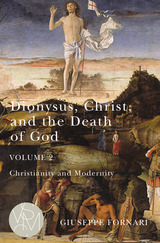 Dionysus, Christ, and the Death of God, Volume 2: Christianity and Modernity
Giuseppe Fornari
Michigan State University Press, 2020 This magisterial reflection on the history and destiny of the West compares Greco-Roman civilization and the Judeo-Christian tradition in order to understand what both unites and divides them. Mediation, understood as a collective, symbolic experience, gives society unity and meaning, putting human beings in contact with a universal object known as the world or reality. But unity has a price: the very force that enables peaceful coexistence also makes us prone to conflict. As a result, in order to find a common point of convergence—of at-one-ment—someone must be sacrificed. Sacrifice, then, is the historical pillar of mediation. It was endorsed in a cosmic-religious sense in antiquity and rejected for ethical reasons in modernity, where the Judeo-Christian tradition plays an intermediate role in condemning sacrificial violence as such, while accepting sacrifice as a voluntary act offered to save other human beings. Today, as we face the collapse of all shared mediations, this intermediating solution offers a way out of our moral and cultural plight.
Dionysus in Literature: Essays on Literary Madness
Edited by Branimir M. Rieger
University of Wisconsin Press, 1994 In this anthology, outstanding authorities present their assessments of literary madness in a variety of topics and approaches. The entire collection of essays presents intriguing aspects of the Dionysian element in literature.
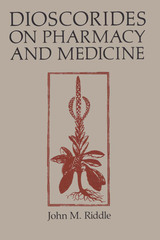 Dioscorides on Pharmacy and Medicine
By John M. Riddle
University of Texas Press, 1985 For 1,600 years Dioscorides (ca. AD 40–80) was regarded as the foremost authority on drugs. He knew mild laxatives and strong purgatives, analgesics for headaches, antiseptics for wounds, emetics to rid one of ingested poisons, chemotherapy agents for cancer treatments, and even oral contraceptives. Why, then, have his works remained obscure in recent centuries? Because of one small oversight (Dioscorides himself thought it was self-evident): he failed to describe his method for organizing drugs by their affinities. This omission led medical authorities to use his materials as a guide to pharmacy while overlooking Dioscorides' most valuable contribution—his empirically derived method for observing and classifying drugs by clinical testing. Dioscorides' De materia medica, a five-volume work, was written in the first century. Here revealed for the first time is the thesis that Dioscorides wrote more than a lengthy guide book. He wrote a great work of science. He had said that he discovered the natural order and would demonstrate it by his arrangement of drugs from plants, minerals, and animals. Until John M. Riddle's pathfinding study, no one saw the genius of his system. Botanists from the eighteenth century often attempted to find his unexplained method by identifying the sequences of his plants according to the Linnean system but, while there are certain patterns, there remained inexplicable incoherencies. However, Dioscorides' natural order as set down in De materia medica was determined by drug affinities as detected by his acute, clinical ability to observe drug reactions in and on the body. So remarkable was his ability to see relationships that, in some cases, he saw what we know to be common chemicals shared by plants of the same and related species and other natural product drugs from animal and mineral sources. Western European and Islamic medicine considered Dioscorides the foremost authority on drugs, just as Hippocrates is regarded as the Father of Medicine. They saw him point the way but only described the end of his finger, despite the fact that in the sixteenth century alone there were over one hundred books published on him. If he had explained what he thought to be self-evident, then science, especially chemistry and medicine, would almost certainly have developed differently. In this culmination of over twenty years of research, Riddle employs modern science and anthropological studies innovatively and cautiously to demonstrate the substance to Dioscorides' authority in medicine.
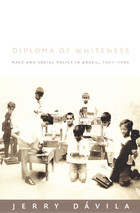 Diploma of Whiteness: Race and Social Policy in Brazil, 1917–1945
Jerry Dávila
Duke University Press, 2003 In Brazil, the country with the largest population of African descent in the Americas, the idea of race underwent a dramatic shift in the first half of the twentieth century. Brazilian authorities, who had considered race a biological fact, began to view it as a cultural and environmental condition. Jerry Dávila explores the significance of this transition by looking at the history of the Rio de Janeiro school system between 1917 and 1945. He demonstrates how, in the period between the world wars, the dramatic proliferation of social policy initiatives in Brazil was subtly but powerfully shaped by beliefs that racially mixed and nonwhite Brazilians could be symbolically, if not physically, whitened through changes in culture, habits, and health.
Providing a unique historical perspective on how racial attitudes move from elite discourse into people’s lives, Diploma of Whiteness shows how public schools promoted the idea that whites were inherently fit and those of African or mixed ancestry were necessarily in need of remedial attention. Analyzing primary material—including school system records, teacher journals, photographs, private letters, and unpublished documents—Dávila traces the emergence of racially coded hiring practices and student-tracking policies as well as the development of a social and scientific philosophy of eugenics. He contends that the implementation of the various policies intended to “improve” nonwhites institutionalized subtle barriers to their equitable integration into Brazilian society.
 Diplomacy and Dogmatism: Bernadino de Mendoza and the French Catholic Leaugue
De Lamar Jensen
Harvard University Press This is the first study of Mendoza, the importance of whose position as Ambassador to France from 1584 to 1591--crucial in the liaison between Philip II and the French Catholic League--was long recognized but not explored. A religious zealot and military crusader who carried his uncompromising attitude into his diplomatic career, Mendoza made the connections between his master Philip and the French Catholic League much more intimate and functional than was previously suspected. In the spring of 1588, for instance, Mendozamanipulated the League and the Duke of Guise into a position of open rebellion against the King of France, thus ensuring that the Armada could sail for England without the danger of French harassment along the channel coast, and also that there would be no threat of French occupation of the Spanish Netherlands when Parma's troops should embark for the invasion of England.
Throughout the book, Spanish policies and techniques and their influence on international affairs are exemplified as they were not before. Showing how Continental diplomacy was dominated by religious zeal in the late sixteenth century, and how the fanaticism of the French religious wars formed a prelude to a reaction toward political absolutism, Jensen draws on a fund of untapped manuscript and printed sources, including Mendoza's coded letters, some of which he was the first to decipher.
 Diplomacy and the Future of World Order
Chester A. Crocker, Fen Osler Hampson, and Pamela Aall, Editors. Foreword by Ambassador William J. Burns
Georgetown University Press, 2023 Three scenarios for future approaches to peace and conflict diplomacy, explored through the lens of regional perspectives and security threats Diplomacy in pursuit of peace and security faces severe challenges not seen in decades. The reemergence of strong states, discord in the UN Security Council, destabilizing transnational nonstate actors, closing space for civil society within states, and the weakening of the international liberal order all present new obstacles to diplomacy. In Diplomacy and the Future of World Order, an international group of experts confronts these challenges to peace and conflict diplomacy—defined as the effort to manage others’ conflicts, cope with great power competition, and deal with threats to the state system itself. In doing so, they consider three potential scenarios for world order where key states decide to go it alone, return to a liberal order, or collaborate on a case-by-case basis to address common threats and problems. These three scenarios are then evaluated through the prism of regional perspectives from around the world and for their potential ramifications for major security threats including peacekeeping, nuclear nonproliferation, cyber competition, and terrorism. Editors Chester A. Crocker, Fen Osler Hampson, and Pamela Aall conclude the volume by identifying emerging types of diplomacy that may form the foundation for global peacemaking and conflict management in an uncertain future.
|
|


